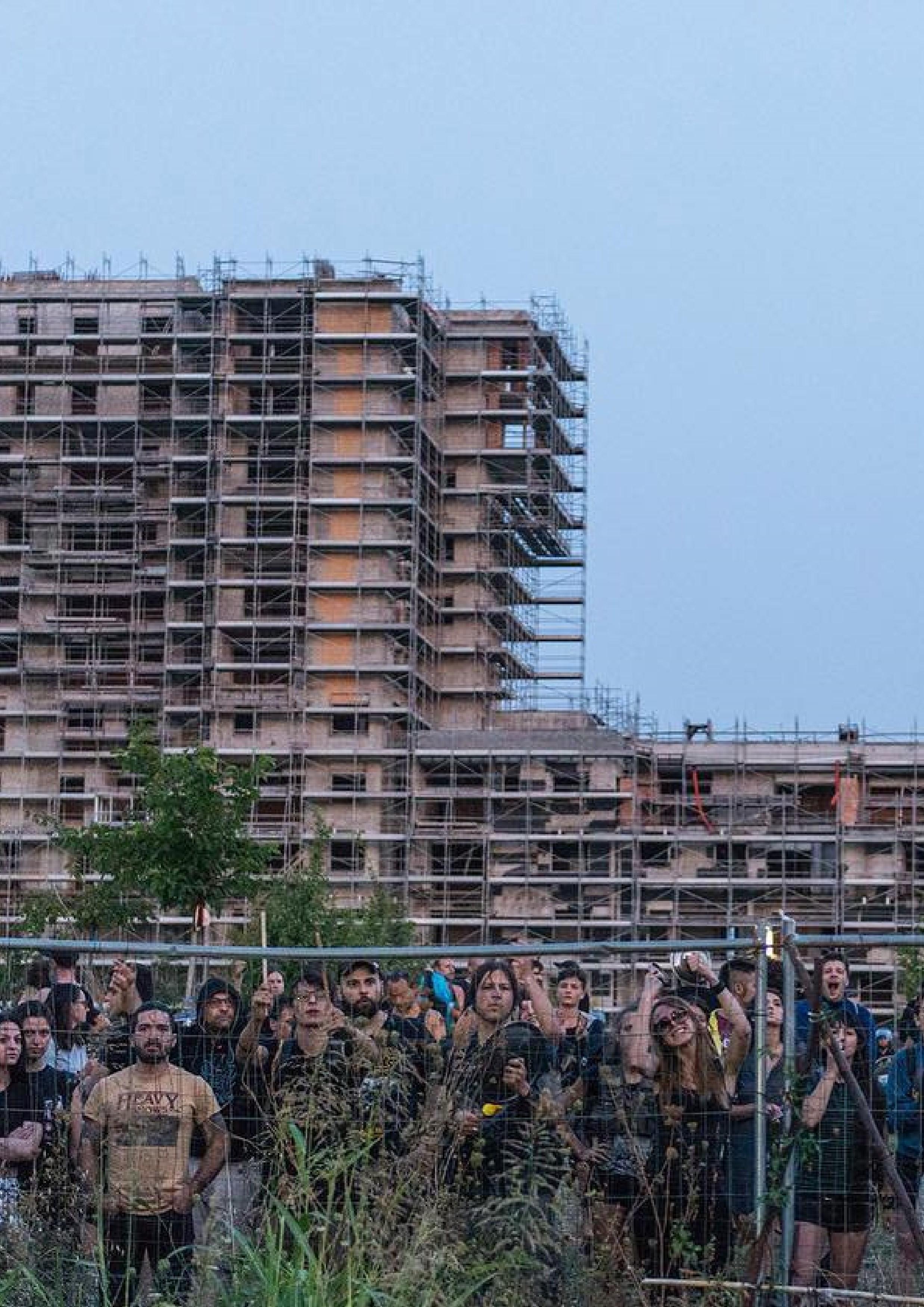Jere Kuzmanić
Peter Kropotkin and Colin Ward
Two ideas of ecological urbanism
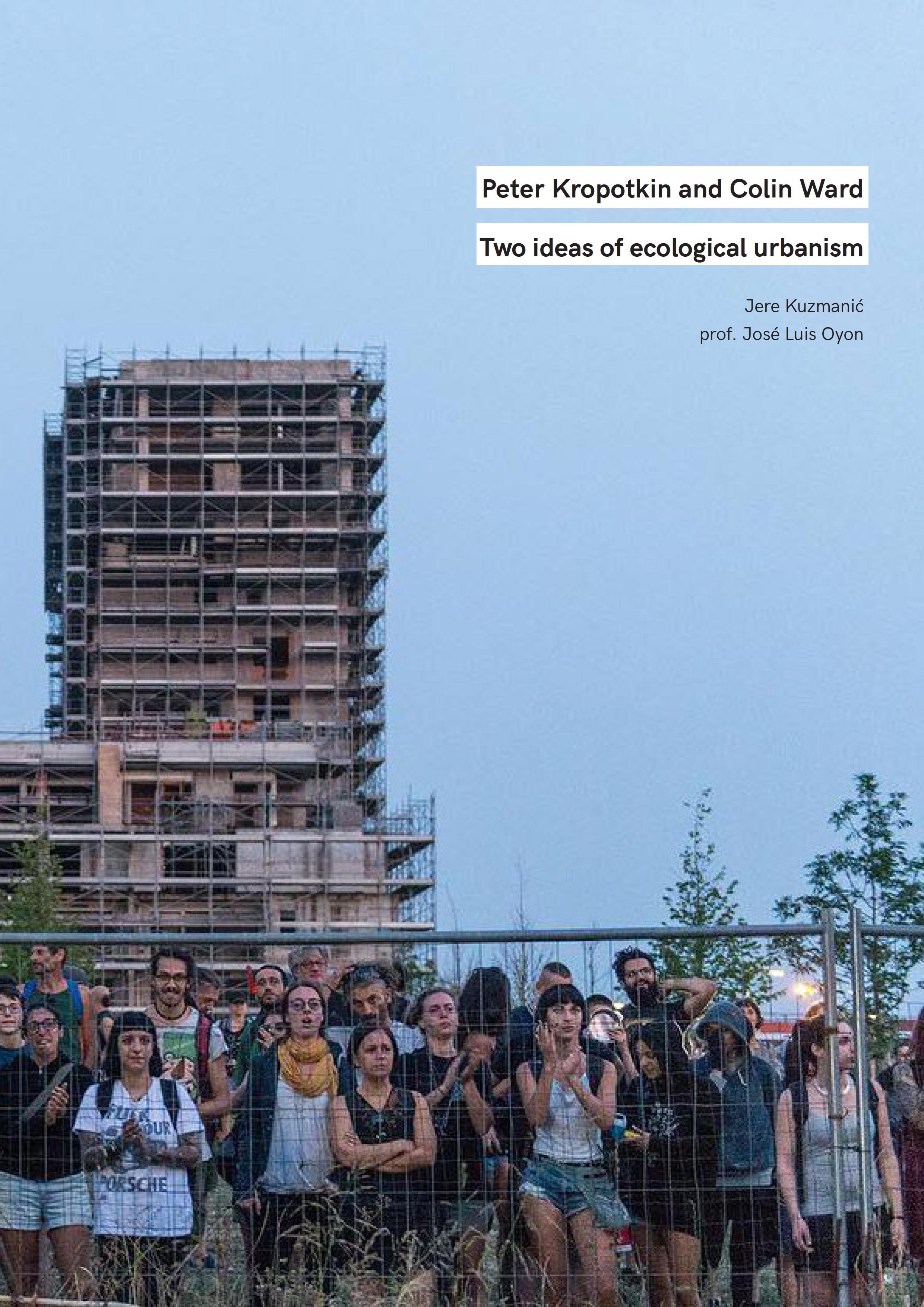
1.1 What is environmental in anarchist approaches to space?
1.2 ‘The anarchist thread’ in ecological urbanism(s) — Historical overview
1.2.1 Production of ideas: The anarchist geographers, 1866–1899
Reclus and the nature-city fusion
Kropotkin and the countryside-city economic integration
1.2.2. The production of experiences, 1899–1939
The proposals for the agro-industrial symbiosis of the Spanish libertarians
The experiences of direct action
1.2.3. Urbanism from below: the anarchist architects of the second post-war period, 1939–1976
Colin Ward and direct action in housing
Giancarlo De Carlo: the architecture and urbanism of participation
John F. C. Turner: Housing and the neighbourhood made by users.
Anarchist urbanism ideas in the USA — Bookchin and Democratic federalism
Renaissance of academic interest in anarchist geography at the change of the centuries
1.3 Two visions of ecological urbanism
1.3.1. Summary of the key lines of comparison
1.3.2 On the continuation of the idea — comparison of key concepts
Comparison of Kropotkin and Ward: Key Concepts
Integration of city and countryside
Full bibliography (incomplete)
2.1. Periodicals and Mutual Aid
The birds know no boundaries — anarchist’s contribution to scientific debates
Mutual aid — a factor of joyful survival
Is nature urban? — Mutual aid and (re)production of resources
Free cities and ‘dark ages’ - Mutual aid and (re)production of space
Kropotkin’s (scientific) journalism — joyful survival in practice
A guide to post-revolution management of city-countryside relations
‘Bread, the revolution needs bread!’ — Kropotkin on food
Where could food come from? — Anarcho-capitalism vs anarcho-communism
How to supply food? — The city with few bottles of wine
Who gets to eat? — Collective justice vs individual freedom
Conclusion — How anarchists reterritorialized the economy?
2.3. Fields, Factories, Workshops
The triangle of geopolitics, economy and technology
Evolution of agriculture and rural industries
Integration of manual and intellectual labour
Full bibliography (incomplete)
What is housing from anarchist perspective?
The three revolutions of housing
Housing as tactic — from right to housing to self construction
3.2 An anarchist approach to environment
Environment (h)as political subject
Environment is reciprocal — Whose environment?
Environment is essentially social — Who owns the land?
Environment is inherently personal — Child and the city
What could architects do in this triangle?
What is wrong with urban planning?
The Do-it-yourself Town Planning
1) Do something about Land Valuation
2) Help People House Themselves, Inside and Outside the City
3) Give Real Encouragement to Small Enterprise
4) Making the cities green again
5) Find New Ways of Engaging the Young
6) Give access to Tools and technology
7) Change the Terms of the Debate
[Front Matter]
[Dedication]
The thesis is dedicated to David Graeber, who died on the 2nd of September, 2020. To his greatness in proving that anarchism is worth intellectual endeavour in the 21st century, as both, academically relevant and widely respected.
Goodspeed David! Thank you for the Debt.
[Metadata]
Master Universitario en Intervencion Sostenible en el Medio Construido
MISMEC
Escola Tecnica Superior d’Arquitectura del Valles
Universitat Politecnica de Catalunya
2019/2020
TFM — Trabajo Final de Master
(defended-September 2020)
Alumni: Jere Kuzmanic
jerekuzmanic@gmail.com
Mentor: prof. Jose Luis Oyon
jose.luis.oyon@upc.edu
The photo on the cover is made during the eviction of XM squat Bologna, Italy
Photo by: Michele Lapini, http://www.michelelapini.net/
The thesis is written and defended in English


[Abstract]
The thesis recapitulates the works of two anarchists, Peter Kropotkin and Colin Ward seeking the continuous thread of development of ecological urbanism as a political and spatial concept. As geographer and architect both imagined, wrote and inspired practices of production of space deeply rooted in ecology and spirit of self-organization. The literature review of primary and secondary resources will entangle the relationship between Kropotkin’s (proto)ecological geography with Colin Ward’s post-war self-management in urbanism. Both conceptions emerging from direct action, mutual aid and cooperation they will be presented through a comparison of their writings and the correlating the examples they inspired (Spanish anti-authoritarianist planning councils, 50s squatters movement, self-help housing communities etc. )
Their similarities and underlying values maintain the idea of an under-presented model of ecological urbanism that could be of significant relevance nowadays (i.e. in the context of urban degrowth, cooperative housing movement, etc.).
Keywords: Ecological urbanism, Peter Kropotkin, Colin Ward, history of urbanism, urbanism from below, city-countryside integration, self-organization in urban planning
Content
1 Introduction
1.1 What is environmental in anarchist approaches to space?
1.2 ‘The anarchist thread’ in ecological urbanism(s) — Historical overview
1.3 Two visions of ecological urbanism
1.3.1 Summary of the key lines of comparison
1.3.2 On the continuation of ideas — Comparison of key concepts
2 Kropotkin
2.1 Perodicals and Mutual Aid
2.2 The Conquest of Bread
2.3 Fields, factories and workshops
3 Ward
3.1 Anarchist approach to housing: Housing: An Anarchist approach (1974), Tenants Take Over (1972), Talking Houses (1990)
3.2 An anarchist approach to environment: The Child in the Country (1988), The Child In The City (1978), Talking to architects (1996)
3.3 An anarchist approach to urban planning: Welcome, Thinner City (1989), Do-It-Yourself New Town (1976)
4 The Dialogue
5 Bibilography
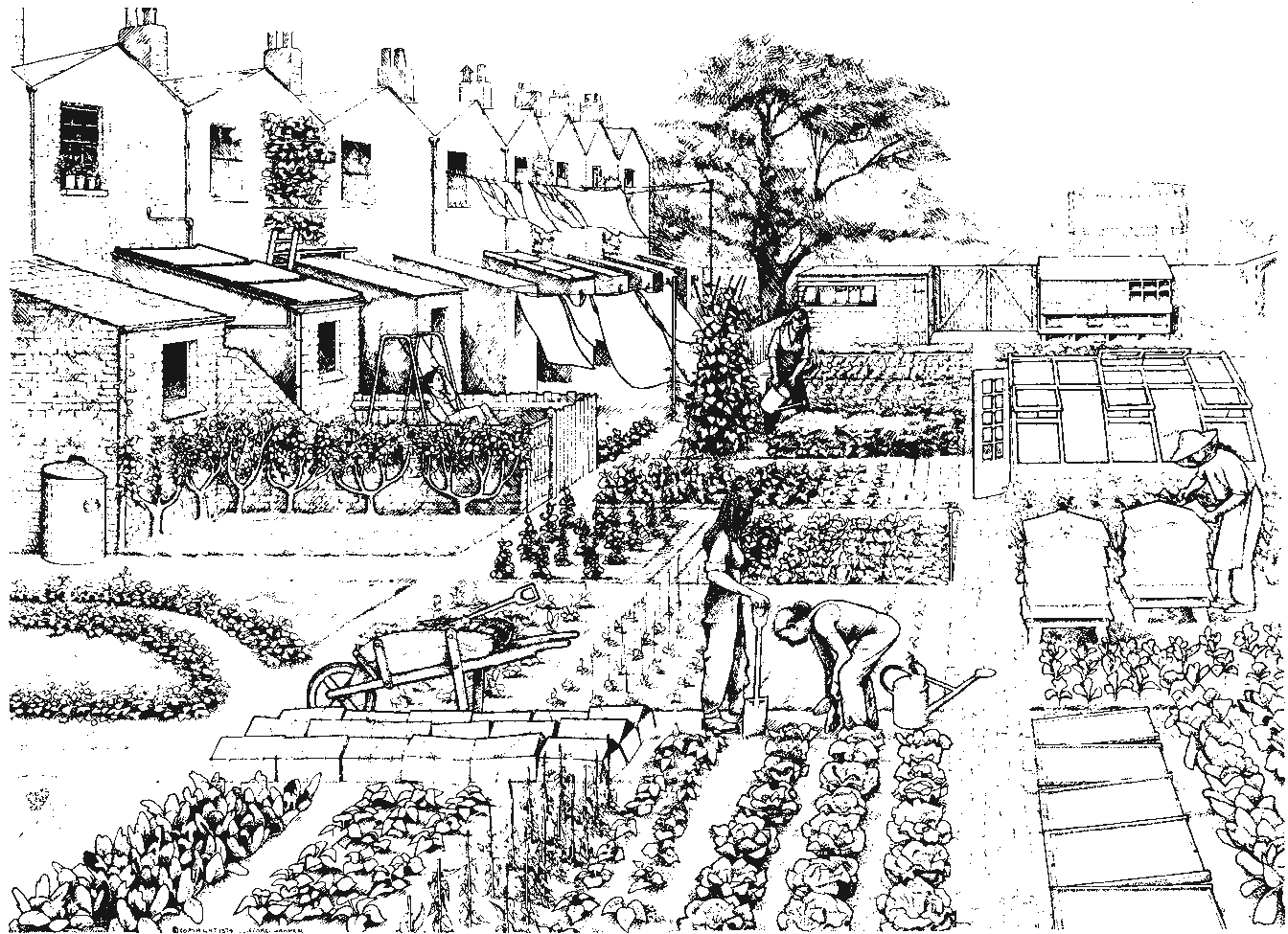
[Epigraph]
“When Franco and his fascist generals attacked the newly elected Republic in July 1936, thousands of industrial workers and peasants responded with militias and also with a massive collectivization of land, factories, transportation systems, and public services. Collectivization encompassed more than one-half of the total land area of Republican Spain, affecting the lives of nearly eight million people. Large cities like Barcelona were transformed into federations of neighborhoods, while in many parts of the Republican held countryside, new irrigation systems and well-organized federations of communes allowed peasants to bring new land under cultivation, expanding and diversifying production. Social landscapes accommodated new educational, cultural, and health facilities. Massive regional exchange networks formed by federations of collectives starting at the local level and working their way up to districts and provinces, linked cities with the countryside for the purposes of distribution and consumption, extending transportation and health services into areas that had never been serviced before. A revolution, which began by creating more communal and egalitarian relationships among people, resulted in the creation of highly efficient and environmentally sensitive new spatial formations.” (Breitbait, 2009)
1 Introduction
1.1 What is environmental in anarchist approaches to space?
In the 1930s, during the Spanish Republic, the revolution led by industrial workers and peasants was controlling the land on which 8 million people lived, worked and were fed at the time. This large scale social experiment inspired by anarchist ideas had its environmental implications. These implications are well summarized by Breitbart (2009) who concluded that the Republic did not impose on villages and neighbourhoods to become self-sufficient entities, neither in terms of goods and trade, neither in food, housing and other essential provisions. Instead, the councils anticipated a developed and complex spatial relations framed by the economy of everyday consumption and production that propelled regional exchange and local cooperation. In these relationships the city became interrelated with the rural towns and villages, large scale collectivization attempted to integrate industrial and agricultural production. At the same time, the peasant and citizen are seen as active subjects of the integration — both contributing to progress with their manual and intellectual labour in gardens, workshops and local councils. This historical example is one of many everyday lived practices in which environment, politics and urbanism converged into an alternative experience in (re)production of space as inherent to Nature. These experiences are part of the history of ecological urbanism that continuously seeks to oppose expanding urbanization with holistic and integrated visions of human and non-human life embedded in sustainable urban processes. Many of these experiences were inspired, observed and documented within the community of anarchist geographers and urbanists. Until now not that many dialogues on ecological urbanism took into consideration the history of anarchist inputs to the idea. This particular work attempts to bring two points in this direction: a) ‘conscious practices of anarchism’ (as Malatesta defines the history of anarchism) share a common environmental approach and b) there is a continuous thread of decentralist inputs to ecological urbanism that flows between the pre- and post- World War Two period. Both points aim to illustrate the from-below approaches to ecological urbanism as methodologically and practically relevant for the future of the field.
Methodology
The works of two prominent figures of anarchism and (urban) geography, Peter Kropotkin and Colin Ward are compared to build the argument presented in the previous chapter. Instead of entering the complex study of historical practices or attempting to give an overview of anarchism shaped work on ecological urbanism, the thesis uses the observations of two giants of decentralist thought and their observations on people’s relation to the environment. One geographer and one architect, dedicated significant volumes of work and time to observing the practices of production of urban space, describing and speculating about them from the anarchist perspective. The methodological hypothesis is that literature written by both authors is sufficiently intertwined to be read as a) time-wise continuous thread of socio-political thought on ecological urbanism and are b) material that inspired concrete practices relevant to an ecological urbanism.
These two figures have a pivotal role, not in defining what ‘anarchist’ means in the context of ecological urbanism or how anarchist paradigms relate to ‘environment’, since, as Ferretti (2019) recognizes, there is no just one uniform ‘anarchist’ approach to anything, including space and ecology. Instead, their work interconnects the lived experiences, utopian speculations and critiques of the State and capitalism and as a result, is fixing together a distinct reading of (urban) space. These two authors also connect two centuries of what we call ‘modern’ anarchism, the same period in which the urbanism increasingly acknowledged the urgencies of negative environmental impact — to which it responded with a quest for the ecological urbanism and rethinking the (urban) economy around resource management (Springer, 2013) □ . The temporal coincidence of the two movement makes the distinct anarchist vision for ecological urbanism worth considering. It is interesting to consider how — mutual aid, cooperation, do-it-yourself and direct action ethics, and non-hierarchical emancipatory tools — work when incorporated in the framework of urban planning.
The thesis uses primary sources from both authors, their books, articles in periodicals and secondary researches of interpretation as sources for qualitative comparison of two authors and their contribution to this discussion. The comparison of the literature extracts on the first level similarities in their conceptions and observations concerning the ecological urbanism. On the second level method draws the differences between the authors and contextualises them. The third level uses the literature review to relate conceptual work by authors to cases in which it was put in practice and examples to which they refer.
The presentation of results takes the form of printable publication. It is based on three parts: 1) Introduction in which existing literature on the history of proto-ecologist, regionalist and anarchist geography are used to explain motivation, relevance, aim and methodology, then 2) presentation of the body of work by compared authors in which authors are independently presented with an introductory chapter summarizing their biography and key ideas and three chapters that are built around three key groups of works by the authors. The final part is 3) the Dialogue in which the two authors are confronted in the form of fictional conversation. The last chapter presents the thread of anarchist inputs for ecological urbanism frankly and opens the discussion to possible implications of the research.
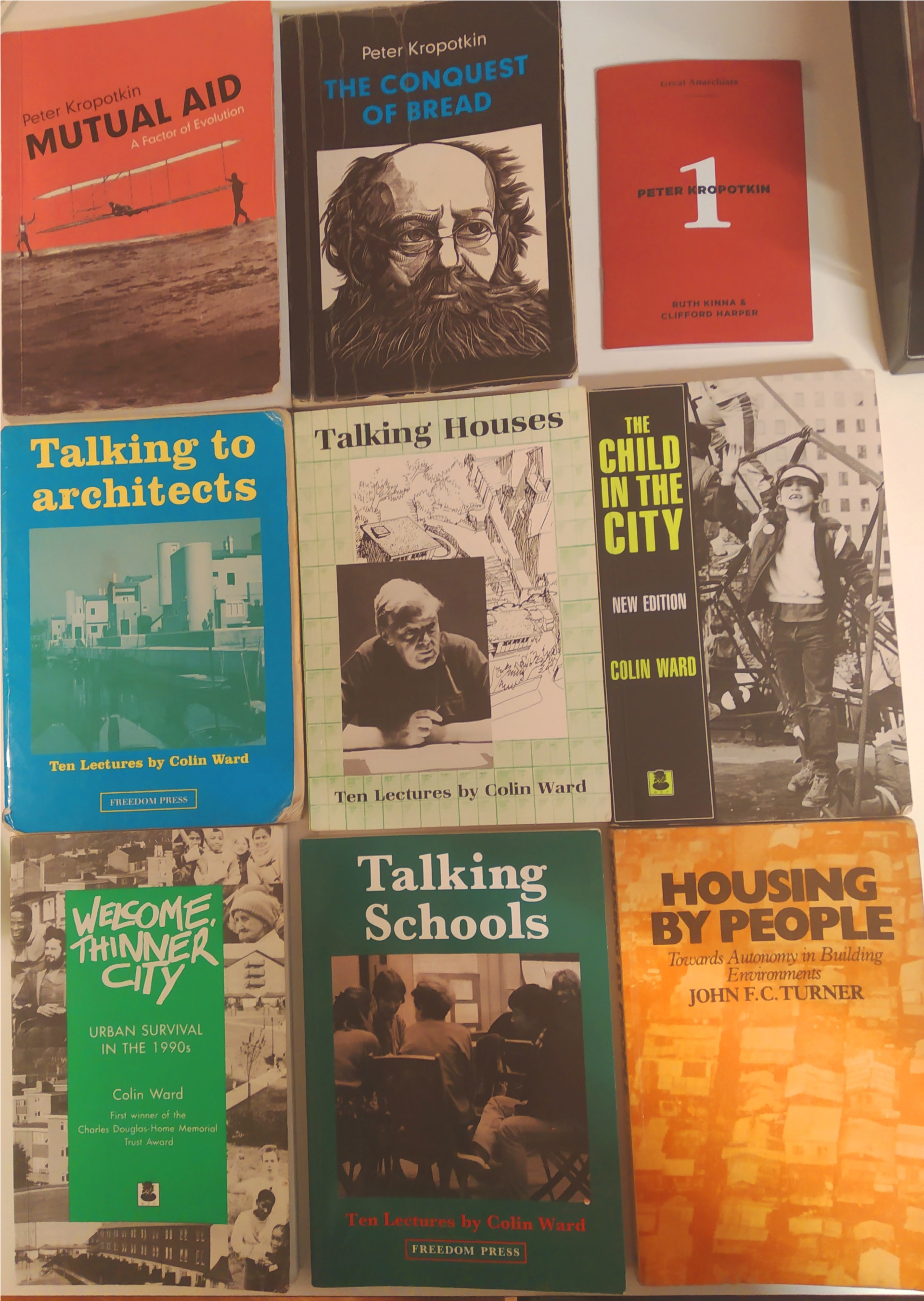
Source: author
1.2 ‘The anarchist thread’ in ecological urbanism(s) — Historical overview
In the following paragraph, the brief history of “the anarchist roots of the planning movement” settles the two authors in the legacy of ecological urbanism. The “anarchist roots” are acknowledged among the historians of urbanism due to Peter Hall’s classic book Cities of Tomorrow, published in 1988, as one of the most comprehensive overviews of the history of urban planning. Hall writes that the urban planning movement “arose from the anarchist movement, which flourished in the last decades of the 19th century and the first years of the 20th century. That is true for Howard, for Geddes and for the Regional Planning Association of America, as well as for many derivatives in the European continent” (Hall, 2014). Another key idea of anarchism’s influence that Hall recognises is the notion of bottom-up urbanism. Built forms of cities should, writes Hall, “come from the hands of their own citizens; that we should reject the tradition whereby large organisations, private or public, build for people and instead embrace the notion that people should build for themselves. We can find this notion powerfully present in the anarchist thinking (...), and in particular in Geddesian notions of piecemeal urban rehabilitation between 1885 and 1920 (...) It resurfaces to provide a major, even a dominant, ideology of planning in third-world cities through the work of John Turner — himself drawing directly from anarchist thinking — in Latin America during the 1960s” (Hall, 2014).
Anarchist approach to urbanism can be traced as a continuous thread through the change centuries through connections between Reclus and Patrick Geddes and Kropotkin and Lewis Mumford. All for of them presenting a stream of regionalist thinking within dominantly ,urban‘ and statist thread of geography in the observed period. Geddes and Mumford will later be an inspiration for the Ward’s and John F. Turner’s concept on dweller’s control in urban planning. In the period following the World War 2, the bottom-up urbanism became a common issue for anarchist architects and urban planners like Colin Ward, Giancarlo De Carlo, Carlo Doglio, Walter Segal etc., as well as for poor and landless people all around the world. Overseas, the influence reached to American anarchists like the Goodmans and Murray Bookchin whose ideas of municipalism, democratic federalism and ecological urbanism echo to our times. Many practical examples of self-help housing, squatted camps, build-it-yourself construction models, self-organised communities are realised by people disappointed with the inability of the State institutions or market to provide affordable and safe housing. As a response, they seek ways to provide housing under their own terms. This rich history in radical housing practices is a seedbed for what later diversified into similar experiences that established bottom-up social and cultural institutions, provided food through communal gardens and solidarity networks, initiated selforganised schools and care facilities, run citizens’ campaigns, syndicalist actions and rent strikes etc. In the seventies during the economic and oil reserves crisis, the birth of large scale environmental movements was founded on the capacity of social movements to mobilise, organise and consolidate people on different scales of territory directly inspired by writings and experiences of the pioneers before them. This continued until the end of the century in the form of the anti-globalisation movement and its’ critique of neo-liberal politics, growth-driven development, and global inequality. It is hard to encompass the whole spectrum of a cooperative, self-help and direct action based practices in producing housing, services and goods in neighbourhoods and towns in Latin America, Asia, Europe and almost every corner of inhabited Earth. It is even harder to merit the impact these practices had on social and environmental justice throughout centuries and geographies.
However, the following paragraph will try to summarise authors who made an influence on both, history of ideas and production of experiences in ecological urbanism and who could be credited as an anarchist. In his account on the historical interconnection between anarchism and geography (Springer, 2016) stated that early anarchists geographers were proto-ecological because their ideas challenged occidental philosophical tradition that “ put humans at the top of the naturalistic hierarchies, by anticipating present-day relational ideas on hybridity, more-than-human interaction and even affectivity.” (Ferretti, 2019). First relevant body of work to reawaken this continuous thread is the collection of writings, references and relationship between primary authors and figures of the field. The reconstruction of this thread wants to remind and revalue the anarchist tradition in planning history, its ideas and forms of city intervention. This thread is an almost forgotten tradition when, paradoxically, notions of space and urbanism resurging today have a cleat connection with these old ideas (i.e. new rural-urban relations, creation of spaces from below, notions of relational and relative space against absolute Statist space). Unlike the Marxist branch of socialism, anarchism was deeply marked by spatial imagination from the moment of its affirmation in the socialist movement in the mid 19th century. It might be so because some of its most significant thinkers and figures, Reclus and Kropotkin, were involved in spatial disciplines such as geography. This relationship inspired an active exchange between two worlds: one of ideas, academia and scholarship, and one of the experiences, practice and action. Reclus and Kropotkin, the anarchist geographers, have been remembered by Peter Hall’s Cities of Tomorrow as having a fundamental influence on Geddes and Mumford’s regionalist ideas of the first third of the twentieth century. Simultaneously on the turn of the centuries, they inspired an array of social movements in European and global cities primarily engaged with spatial issues such as housing and consumption strikes. These chronological highlights point out the key ideas, experiences and figures of the history of anarchist thought on cities and their surrounding in their respected context. Aware of many unnamed authors and efforts that enabled the continuity of this tradition and limited by the format of the thesis, the following paragraph presents just a short overview. The overview will provide an account based on published research on Reclus and Turner by Oyon and author’s research in progress on other anarchist experiences.
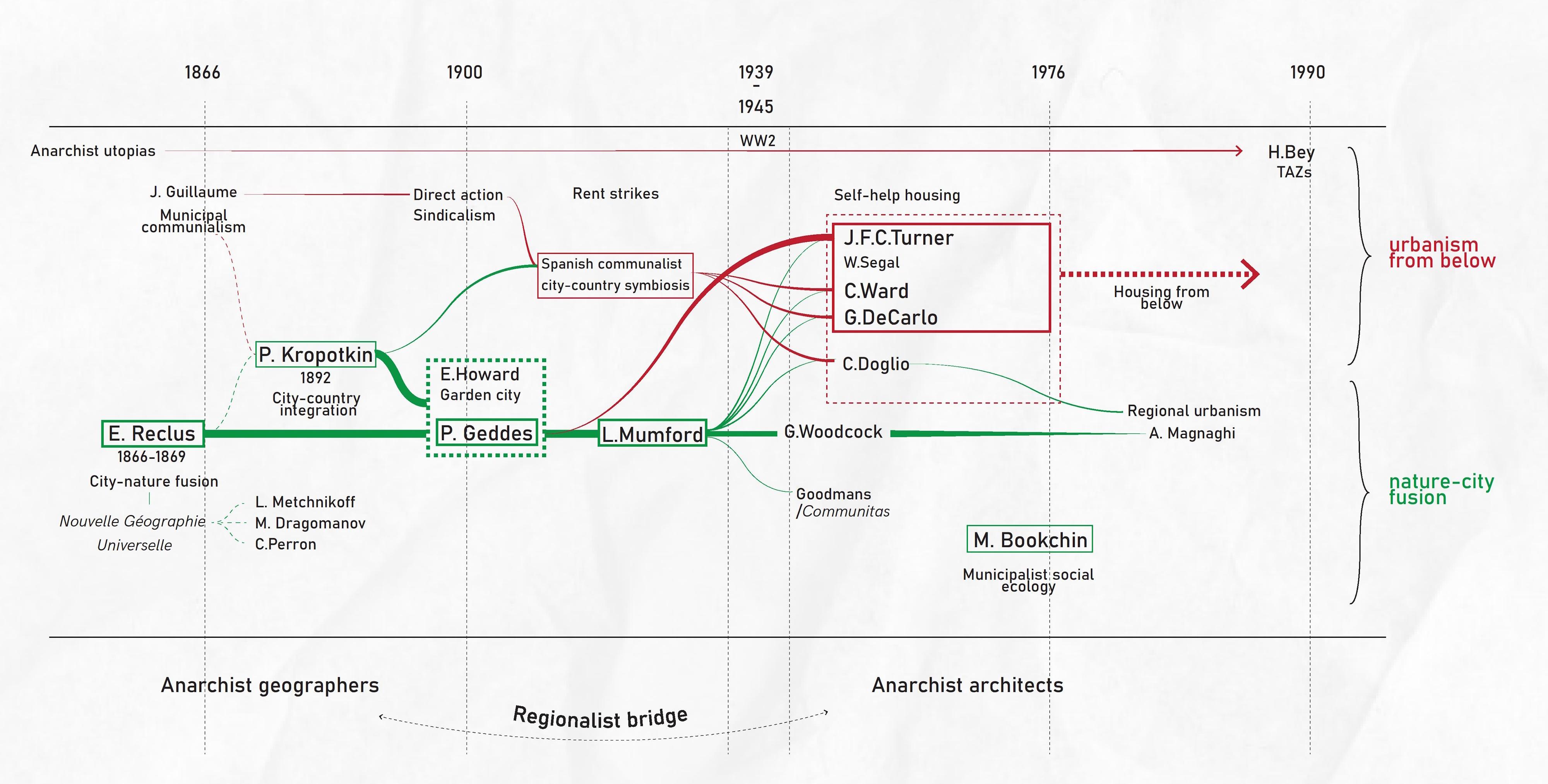
Source: authors
1.2.1 Production of ideas: The anarchist geographers, 1866–1899
Reclus and the nature-city fusion
Elisee Reclus in the second half of the 19th century writes primarily about a fusion of nature with a city that expands indefinitely through its countryside encompassing the regional dimension of urban and rural at the same time. Since his early writings in the 1860s, he explores the city as a concentration of natural capital. Cities, as he describes, are born and grow based on their natural advantages and their immediate natural region amplifies their growth. The future Reclusian city is an unlimited city, ‘the indefinite extension of the city in total fusion with the countryside’ interconnected through periurban spaces of cultivated nature-fields, orchards, gardens, together with the technical infrastructure that allows the city to have a life as an organism — water infrastructure, transportation, food supply. Therefore he imagines a) railways and roads as a key to achieving the nature-city fusion, b) the suburbs imagined as settlements of houses integrated with nature, without fences to separate their inhabitants, pivoting around sub-centres with large parks and public services. His ideal approach to nature-city fusion is grounded in his belief in ‘le sentiment de nature’. In other words, that every person beholds a profound potential for changing the course of urbanization away from unhealthy densification and centralization. For this Reclus is considered proto-ecological urbanist whose influence can be traced to these days.
Kropotkin and the countryside-city economic integration
Since the decade of 1880, Kropotkin developed an idea of the economic integration of the city and countryside. He imagined it as a territory where the big city and its surrounding fields with decentralized and industrialized, relatively self-sufficient, communities reciprocally feed each other with food, goods and primary resources. The inhabitants of such integrated spatial system are both workers and farmers, producers and consumers of their agricultural and industrial products. Although the idea is presented in his seminal Fields, factories and workshops (1899), Kropotkin’s book The Conquest of Bread (1892), as a collection of preceding ideas on how to organize the post-revolutionary society became the book that inspired the anarchist labour movement in Spain during the first decades of the last century. In these two works, he conceptualizes post-revolutionary reorganization and (self-) management of the city through socialized consumption established to provide basic needs ahead of restarting the production after the revolution successes. The new emancipated society he advocates is set in a new space that revolutionizes the capitalist conception of food supply, housing and municipal public services.
1.2.2. The production of experiences, 1899–1939
Reclus and Kropotkin’s thinking influenced two different forms of action in two different contexts. First, in the Anglo-Saxon area, where their urban and territorial thinking was present in the work of regionalists Geddes and Mumford. The second space of influences was the rich imaginary of territorial planning projects that sprouted from the libertarian world during the Second Republic in Spain and its more or less direct affiliation with the territorial reflections of Kropotkin.
The regionalist bridge
In the works of Geddes and Mumford, we find various elements that connect with ideas of the anarchist geographers. The influence in Reclus on Geddes and even more of Kropotkin on Mumford are evident. The Reclusian call for a city in harmony with nature and his region is present in the development of Geddes’s ideas on the region-city, the Valley Section, and his Outlook Tower in Edinburgh. Mumford’s regionalism and the projects of the Regional Planning Association of America during the 1920s and 1930s are inspired by the ideas of decentralization from Kropotkin and especially Howard’s city-garden. Both Geddes and Mumford will later mark out the generation of European anarchist architects and urban planners from the postwar period creating an undeniable link bridge with the old tradition of 19th-century anarchist geographers, particularly with Kropotkin.
The proposals for the agro-industrial symbiosis of the Spanish libertarians
From the self-sufficient communalism of Urales to the anarcho-syndicalist writings of Besnard or the diverse territorial models of Isaac Puente, Gaston Leval, Abad de Santillan, Martmez Rizo and Higinio Noja there was a rich world of ideas of spatial imagination of libertarian communism intended to unfold with the social revolution. Masjuan Bracons (2000), reduces these ideas to an anarcho-communalist and anarcho-syndicalist tendencies, with essential coincidences: a) the organization from below of municipalities and communes into federations of municipalities and, especially, b) the imperative of decentralization of the big cities towards a ‘stable synthesis between the countryside and the city’. The later’s potential is confirmed by recognition of the Congress of the 1936 CNT Zaragoza Congress. Nothing came closer to the essence of the territorial message of Kropotkin than those envisioning of ‘agro-industrial symbiosis’ in Republican Spain.
The experiences of direct action
The tactics of direct action emerged from anarcho-syndicalism and dispersed throughout the world during the early 20th century (i.e. tenant strikes at the end of World War I: France, Spain, Argentina, Mexico,...). In Spain CNT’s rent strikes in the summer of 1931 were followed by interventions on the housing market ahead of the Civil War. Since the dawn of Spanish anarcho-syndicalism, the anarchist social organization rests on a functioning system from below with the workers federation as a model intended to extend to the entire social organization. Spanish anarchist embodied the Kropotkin’s ideas on the organization from below in a municipal setting through direct action.
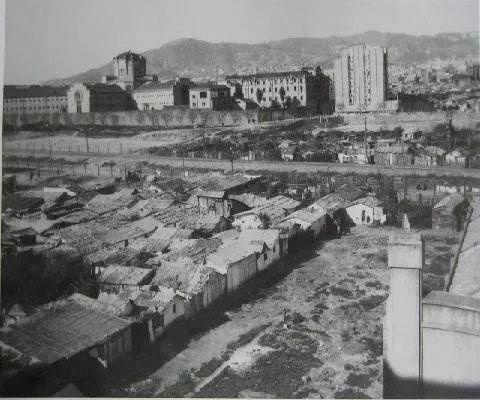
Source: https://prouespeculacio.org
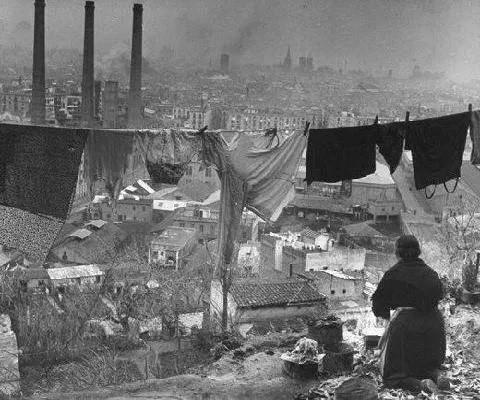
Source: https://prouespeculacio.org
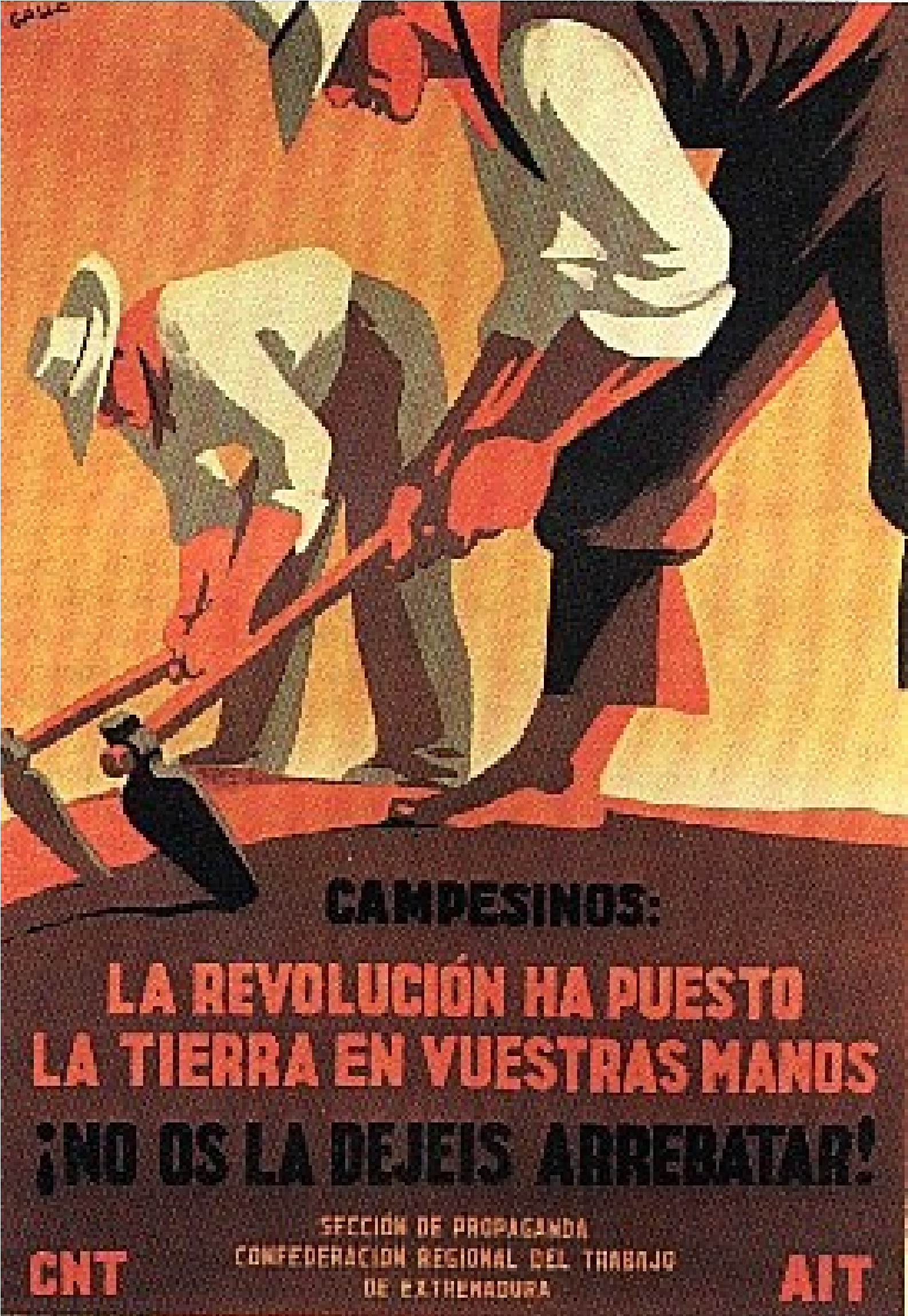
Source: flickr of CGT Andalucia
1.2.3. Urbanism from below: the anarchist architects of the second post-war period, 1939–1976
“The anarchist reflection on the city in the second post-war period for the first time reaches architects and urban planners. In this, the generation architect and planner Colin Ward is the editor of the Freedom magazine, established by Kropotkin, and Giancarlo de Carlo and Carlo Doglio in Italy are contributors. The line of reflection on urbanism from below also influences the American anarchists of the fifties and sixties like the Goodmans and, with an emerging ecological municipalist nuance, Murray Bookchin. The autonomous direct action becomes a driving principle of the ‘anarchist solutions’: “In the face of capitalism, we must not wait for the great revolution that will change everything. The practices of freedom are for today. They are daily actions of existing revolution, that of the here and now. They are ‘anarchism in action’” (Ward, 1973)
Colin Ward and direct action in housing
Colin Ward was a productive writer and practitioner that developed his first interest in self-help housing with post-war squatters in 1946 and occupations of abandoned military camps (a practice that included 40,000 families in England and 5000 in Scotland). He afterwards developed a critique of the large-scale management and massive bureaucracy of state-owned/municipal housing estates. He as occupied by the forms of housing production, tenure and distribution but engaged in other topics as well: Tenants Association Cooperatives and the concept of property (Tenants take over, Vandalism), the self-construction (Housing: an anarchist approach), anti-plan and participatory planning from below (Talking houses, Talking to Architects), uses and appropriations of public services and spaces (Talking schools, Exploding schools, The child and the city, Bulletin for Environmental studies addressing teachers) and ecology (articles in Freedom). He appropriated Kropotkin’s ideas on the integration of production and consumption, especially in the context of housing and community self-management and created a more complex set of proposals inspired by the real experiences of both pre and post-war Britain.
Giancarlo De Carlo: the architecture and urbanism of participation
Giancarlo De Carlo was an Italian architect with anarchist background explicit since his early writings in journals as Freedom and Volonta. He dedicated himself to the participation of users in the construction of housing mediated by architects. Recognizing that all three phases of the architectural project (the definition of the problem, the elaboration of the building solution and the evaluation of the results) require the presence of the users he writes: “The practice of participation changes each phase and the system of relations between them(...)the architectural conception becomes a process”. The means to achieve the goal are what matters for anarchist architecture and urbanism: “the architecture must be removed from the architects and devoured to the people who use it”(De Carlo, 1972). His most noted works were along these lines in San Giuliano’s in Rimini and the Matteotti neighbourhood in Terni between 1969–1974, and the Urbino plan with the application of indirect participation. De Carlo works, and thinking has to been seen in connections with Carlo Doglio writings and regional planning initiatives in the post-war Italian south.
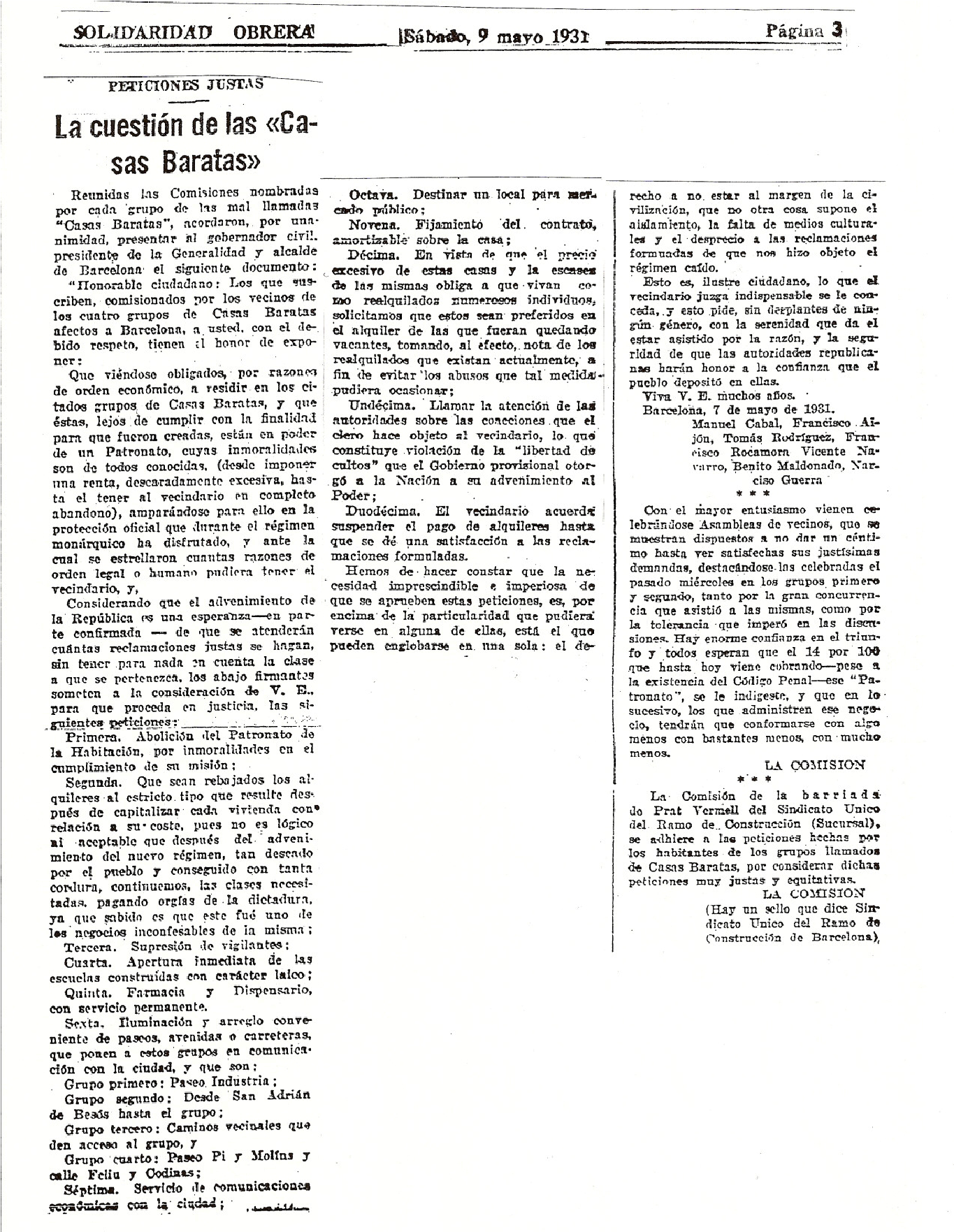
Source: https://rastrosderostros.files.wordpress.com
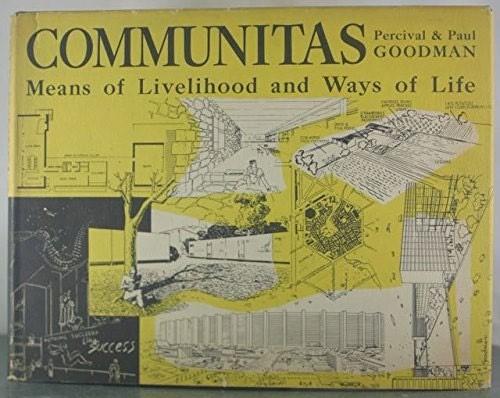
Source: Jose Luis Oyon
John F. C. Turner: Housing and the neighbourhood made by users.
During the 1960s and 1970s, Turner created an engaged and open vision of self-help housing. Self-help housing neighbourhoods made by users over time were not finished and serialized object, but as a progressive process where the inhabitants both decide and execute their ideas. Since his first work in Architectural Design in 1963 about new housing solutions in Latin American countries, Turner’s main concern has been to give visibility to the heterodox process of creating self-built neighbourhoods in at the time called ‘underdeveloped countries’. Based on practical experiences, he describes the value and benefits of autonomy of the self-built housing for its users. Turner’s vision is also a renewed subsequent turn to the Kropotkinian vision since it does not base on the simple reproductive ‘satisfaction’ of the needs of food, housing and clothing. Instead, it recognizes emancipatory power in socialized consumption of the meaning of housing in its complex socio-economic relation: Housing not as an object but ‘as a verb’ — or direct action.
Anarchist urbanism ideas in the USA — Bookchin and Democratic federalism
In the post-war USA, two brothers became the bearers of anarchist ideas in the context of urban planning. Paul and Percival Goodman took further decentralist concepts of Peter Kropotkin and explicitly discussed them in their groundbreaking book, Communitas: Means of Livelihood and Ways of Life (1947). The book consists of ‘A manual of modern plans’ reviewing the conceptual history of twentieth-century planning and ‘Three community paradigm’, a series of hypothetical community planning schemes centred around communality proposing answers to the central question of the book: ‘How to find the right relations between means and ends?’ “Encouraging people to reject externally imposed designs for living, the Goodmans echoed Kropotkin’s call for people to transform themselves into active change agents and to decentralize decision making in planning wherever and whenever possible” (Breitbait, 2009).
On the end of the century, two other prominent figures propelled the anarchist ideas in the USA writing about space, territory and relation of politics and environment. Hakim Bey’s influential book Temporary autonomous zones (TAZs) recognized both historical and contemporary tactics of shortterm, spontaneous and festive ruptures the inhomogeneous fabric of capitalist space and time as political acts that encourage free expression, radical pedagogy and liberation. His works arise from Situationist International and post-modern anarchist thinking. Although not as comprehensive as Goodmans, Bey’s contribution is significant in recognizing in parallel autonomy (free association and dissociation) and temporariness (awareness of the authoritarian character of permanent) as a ground for enabling empowering processes in space.
The second figure is much more relevant in the context of environmentalism and urban planning. Murray Bookchin has taken much from Kropotkin for his theory of social ecology and municipal democracy. The rich body of work he created covers an array of topics from urbanization, social theory, environmentalism, system theories, Spanish Civil War etc. He pioneered or preconceived several social and ecological movements like environmentalism, Deep ecology, degrowth movement etc. However, his proposals are often disregarded as politically overly rigid, impossible and radical. These claims miss his probably most relevant contribution. Bookchin developed the concept of libertarian municipalism, a form of a federative, stateless and democratic political system. Egalitarian and direct action principles of anarchism combine with the ecological and regionalist concept of local governance and resource management based on a municipal scale of free association. During his time in prison, Abdullah Ocalan, Kurdish leader of Marxist-Leninist party read works of Bookchin and other post-Marxist authors and found inspiration in their communalist ideas. A big turn in Kurdish ideological consensus on ecological and feminist objectives and shift towards stateless territorial conception that they call ‘ Democratic confederalism’ is directly inspired by writings of Murray Bookchin. Murray Bookchin died in 2006.
Renaissance of academic interest in anarchist geography at the change of the centuries
The role of anarchist thought in early geography had a period of larger and smaller acceptance usually connected to an interest in ‘fathers of anarchism’ by different social and anti-capitalist movements like in the 1970s and late 1990s (Springer, 2013). The most recent revaluation of ‘The anarchist roots of geography’ in academic circles is two decades old ((Schwartz et al., 2004; White and Kossoff, 2012; Ferretti 2011, 2013; Pelletier, 2013; Araujo et al. 2017; Springer, 2016; Ruth 2016; McLaughlin, 2017). From the perspective of urban planning, the focus is on practical experiences that flourished all around the world from the bottom-up and direct action engagements of citizens and peasants, daily live practices and local scale surges. More attention is given to “the cooperative movement; DIYskills and small-scale mutual aid groups, networks, and initiatives; as tenants’ associations, trade unions, and credit unions; online through peer-to-peer file-among neighbourhoods as autonomous migrant support networks and radical social centres; and more generally within the here and now of everyday life” (Springer, 2013).
On the other hand, the larger scale is covered by the works of Anthony Ince, Geronimo Barrera de la Torre, Federico Ferretti and many others who, by considering different implications of nonstatist geography, opened space for introducing indigenous, de-colonial, ecofeminist and non-human narratives in urban planning. I do not have an intention to encompass the whole scope of recent horizons of anarchist geography, and it’s potential within ecological urbanism. Instead, I will conclude that due to their work that highlights numerous constructive practices across the world, anarchists managed to maintain throughout the 20th century what Reclus calls the ‘human’s role in the consciousness of nature’. Especially in terms of intrinsic cooperative properties of our societies, supporting the birth of new fields such as those we commonly refer to as environmental urbanism and urban ecology.
The following chapters will go deeper in understanding the relevance of historical thread of anarchist ideas in urbanism through comparison of two powerful authors that both maintained and built up the idea into their contemporary complexities of urbanization.
1.3 Two visions of ecological urbanism
1.3.1. Summary of the key lines of comparison
Although the purpose of this thesis is not giving a blueprint for a particular type of the city, urban system or urban planning approach it is noteworthy to clarify two major lines in which the above-described thread contribute to the field of ecological urbanism. It will be done in the following paragraph by presenting how they appear in the work of Peter Kropotkin and Colin Ward. By this, I attempt to clarify what is the aim of the thesis, especially in choosing these two figures to frame the relation of anarchist ideas with ecological urbanism.
Two major lines along which the influence of anarchism on urbanism developed are a) the urbanism from below and b) nature-city fusion or more precisely proposal of city-countryside integration. Both of these lines present something that through a broad and diverse range of works on ecological urbanism is considered the normative categories of the field. Many books, designs, articles and conferences are trying to demarcate what could be a path to transform urban areas into environments systemically integrated into nature’s cycles and biosphere preservation methods. It goes hand in hand with citizen/dweller being an active subject of the change from participating in planning processes to taking bold actions in creating or building new environments. Both of chosen authors recognized that both of these lines are substantial for developing more than a better city — a better society. A closer look into works of both authors offers a good groundwork to read both of the lines as practical tools for implementing planning and design solutions.
1) Urbanism from below
Kropotkin’s work is since times of his visits to Swiss watch-makers communes inspired by Guillaume’s municipal communalism, presented in Ideas in Social Organization (1876). Guillaume sees municipal communalism as a tool to distribute power among skilful workers and peasants. The idea of political unit embedded in the territory on as local scale as possible imagines a citizen as a free agent that using own initiative, free association and mutual aid to achieve relative self-sufficiency is at the core of all Kropotkin’s work. In Fields, Factories and Workshops the city, the countryside, the region are all networked by relations of production and consumption of goods. At the same time, the governance is decentralized to large numbers of local autonomous bodies that are familiar with local conditions, needs and skills. In his vision of (post-)revolutionary life, The Conquest of Bread (1892), there is a ‘Spirit of Organization’ that directs people to act without a centralized body of power or urban plan to follow. It handles the distribution of food, renovation of streets, expropriation of housing, restarting the industry and seasonal labour on fields and crops. However, the most underlining idea of a driving force of urbanism from below is given in the book Mutual Aid (1902). Mutual aid or mutual support is for Kropotkin an evolutional factor present in all political and social processes, and therefore it is always present in the way how people organized, planned and acted in space. We just need to observe the niches in which people already build by their hand and means large fabrics of urban life.
Many experiences in alternative planning, such as Garden city, American regionalism or Spanish republican councils for planning are based on self-organized and self-managed actions by dwellers themselves. This idea is brought further after the second world war when urbanism from below becomes more present in discussions of architects and urban planners. This concept one of the key topics in Colin Ward’s work. Self-organization or as he calls it, dweller’s control is the main difference between mainstream housing distribution and the one in the anarchist approach. Freedom of person to choose, intervene and change its own housing conditions is something that can be traced in all his other observations and proposals. In Talking to architect (1996) two out of six alternative architecture approaches are directly connected to the inhabitant being in charge to change or build houses, and the third one is not about dweller’s control but maker’s or builder’s control of the process and use of the building. Finally, in commenting on, to him contemporary, practices of Advocacy Planning in USA and Public Participation in Planning in the UK he criticized the centralized governance and bureaucratic alienation. In Welcome, Thinner City (1989) he uses examples of Concerned Citizen Councils and Community Land Trusts in North American cities to the point that proper lessons about protecting the urban cores from decay or gentrification do not come from the partnership of government and businesses but residents involved in the community through organizations and citizen initiatives. These ideas culminate with Non-Plan, a proposal from 1967 made by Reyner Benham, urbanist Peter Hall, artist and architect Cedric Price and editor Paul Baker and in which Colin Ward took part by promoting and debating publicly. Non-plan was an experimental challenge to dominant practices of planning discipline to retreat from the determination as a key principle in conceptualizing the space and instead of breeding diversity of possibilities put in action by the dwellers themselves.
2) Nature city fusion
“Obviously, however, for me as an anarchist, the most important assumption was that our goal was not to be the instrument in the teaching programs of the principles of urban and rural planning, or the legislative basis for the implementation of it, as much as to favour the control of the environment, with an eye for examples where the ability to intervene on one’s own environment is accessible to all and not only to a particular minority. What can environmental education aim for, if not to enable people to control their own environment?” (Ward, 1992)
Kropotkin’s proposal for city-country integration is not a blackboard theory. His investigation in the history of European and non-European history of tribal, clan and village communities, all the
way to medieval cities and neighbourhood communities together with his fine-tuned critique of what is wrong integrated with its surrounding until the invention of mass production and big factories. Industrial revolution depopulated villages and degraded agriculture, deprived man and women from skills and detached humans from nature. Although we could say Reclus give much more philosophical account of this alienation, Kropotkin’s image of the ecological crisis is clear as well as his proposal to counter it. His idea of the urban ecological region consists of cities in which industry side by side with small scale agriculture, petty trade and craftsman workshops. It is connected by trains and public transport to suburban or subrural areas in which the scale of agriculture is adopted to the seasonal rhythm of crops, and even industry responds to this rhythm. In Fields, Factories and Workshops Kropotkin’s not only imagined an integration as a spatial process, but as well in labour dynamics, workers move from factories and work in fields during the season of sowing and harvesting. The small town plays a vital role as subcentres of local trade and production providing in one direction cities with a variety of foods and the other rural areas with finely crafted products. His analysis and proposal are more oriented on the relation of production and consumption than, i.e. Reclus and therefore presents an important bridge between the two lines: integration of functions and direct action in urban planning.
Colin Ward is here taking a different course. Instead of the grand-scale proposal, he focuses on everyday practices in the English countryside. For him, the connection of urban man and women to nature survived the industrial shock through allotments, holiday houses, small settlements and lifestyles of travellers and land squatters. He advocates more recognition for the importance of these practices and instead of regulating them, giving them space to develop organically.
Next to these, Ward argued that instead of the ‘cult of wild nature’ we ought to develop “environmentalism that values working landscapes and the built environment. As a writer, journalist and social critic he counselled against being enthralled to experts and maintained that we can learn much from the day-to-day creativity of ordinary people.”’ (Wilbert and White, 2011). On the one hand, Ward saw that social change that seeks for the central role of the community has to be environmentalist and have a regional foundation in combining best characteristics of rural and urban. On the other, he refrained from advocating intentional communities or blueprints like those of Ebenezer Howard exactly for the lack of inclusiveness on all levels. Instead, he proposed a combination of tactics on two different geographical arenas (Ward, 1992).
The first is a strong concept of Do-It-Yourself New Towns as autonomously built urban environments with a similar spirit to Garden City but with much more cooperative and direct action-driven inhabitants. However, he didn’t give a lot of inputs on the exact appearance of the concept he discussed in detail how and for what reasons it should be considered. These are investigated more in detail New Town, Home Town: The lessons of experience (1993). The other strategic ground are existing urban cores, or ‘inner city’ for which he claims is burdened as a synonym for poor areas. The only way to change Inner city is to put the power over land in the hands of communities. This is how allotment gardens are established in many areas; this is how parks are often defended; this is how affordability and
‘Unofficial settlements are seen as a threat to wildlife, which is sacrosanct. The planning system is the vehicle that supports four-wheel-drive Range Rovers, but not the local economy, and certainly not those travellers and settlers seeking their own modest place in the sun. These people have bypassed the sacred rights of tenure, but still find their modest aspirations frustrated by the operations of planning legislation. Nobody actually planned such a situation. No professional planner would claim that his or her task was to grind unofficial housing out of existence, and nor would any of the local enforcers of the Building Regulations. But all these unhappy confrontations are the direct result of public policy. Something has to be done to change it, and the hidden history of twentiethcentury housing offers some currently unconventional models.” (Ward, 2004).
“For me, and for people who want to make room for freedom of experiment in architecture and planning, the importance of flying the Non-Plan kite was the attempt to make room for do-it-yourself alternatives to the rival orthodoxies of the bureaucracy and of the speculative development industry. The attempt was not successful, but the fact that we discuss it 30 years later indicates what a rare challenge it was.” (Ward, 2000)
connection in residential areas are preserved etc. In Welcome, Thinner City (1989) he uses the example of Coin Street in London and the struggle in which resident fought of large scale development plans by London County Council and different corporations to stay in their homes under even better conditions. Through Community Land Trust and Housing Co-operatives, they proposed a scheme and one of the cooperatives realized small housing block: “[...]in the form of the hollow square, with small private gardens leading into communal space — the pattern develop in the nineteenth century in Holland Park. It [had] all this qualities we now seek in housing: quiet unassertivness, urbanity and domesticity” (Ward, 1989). In this aspect Colin Ward was still close to Kropotkin: promoting self-sufficiency in suburban and urban life in low-density urban typologies. He imagined possibilities for growing food and craftsmanship in combination with local trade along the suburban transport corridors in the same manner like Kropotkin.
In this sense, Kropotkin who wrote his last articles in 1920 and Colin Ward who wrote until 2010, present a comparable insight into a more than a century of development of decentralist ideas in the framework of urban planning. The two lines of comparison prove that their work has enough coinciding elements next to direct referencing to claim continuity of the idea. Also, the strength of their argument, proved by the fact that the prominent authors and mainstream planners (like Geddes, Mumford and Hall) referenced their work, proves that we can talk about distinct stream of influence on a wide field of ecological urbanism.
Based on these two lines of comparison, the thesis aims to function as a) reader — a guide through key concepts in which anarchist contribution was made to an ecological stream of urban planning. Here the guide refers as well to the key references in both authors bibliography and biography. As a reader, you should be able to navigate and discover connections between authors and the fields with which they were engaged and b) analytical tool — solid ground of different history-experiences. The thesis should support analysis and observation of historical and current examples of practice in from below urbanism and regional integration. From squats and anarchist collectives over cooperative housing bodies, neighbourhood initiatives and struggles and governmental policies, there is a large amount of lived experiences of what is conceptually evaluated in this text. We should be able to recognize those and understand their features as ecological, decentralist, both or neither.
1.3.2 On the continuation of the idea — comparison of key concepts
After presenting along which lines are Kropotkin and Colin Ward discussable as ecological urbanists, this paragraph will compare them. Without intention to list all of the similarities and differences that these two productive and interdisciplinary authors have, I will put forward those I believe are most relevant for the aim described above. The comparisson is presented in a form of table for the calrity and overiew, and also to be a guide for reading the rest of the thesis.
“Establishing the basis of a contemporary radical theory of social ecology, [...] geographers believed that imbalances in nature reflected imbalances in human relationships and suggested that people base their use of the natural world on a respect for, and understanding of, its key properties. Kropotkin and Reclus assumed that sustainable human/environment relations could only be initiated through social transformation and fundamental changes in human values that would promote the demise of capitalism, racism, the modern State, gender inequities, and other forms of social hierarchy. They perceived that these changes would then be supported by a progressive sense of place, greater human interaction, and the centrality of love. While Kropotkin tried to develop a basis for higher moral standards from the natural world, Reclus assumed that moral development would come from the growing scope of our knowledge and attachment to key life systems.” (Breitbait 2009)
Comparison of Kropotkin and Ward: Key Concepts
| Peter Kropotkin | Colin Ward | |
| General perspective |
Relation Individual/Society(species) Kropotkin mainly focuses on the relation between individual and society or in the case of non-humans, species. The scale of his proposals is systemic, and his arguments are more often deductive than inductive. He debates freedom and self-sufficiency in terms of (in)dependence of the unit within the larger system. He is more interested in how society produces spatial relations than how the individual perceives it. In an example, he contrasts the individual’s right on the property to inherited benefits of the collective genius of anonymous mass that created the conditions for that property. |
Relation Human/Environment Ward’s work analyses relation of place, environment and people. Opposite from Kropotkin’s, his argument is more inductive, using examples of everyday practices he tries to prove the possibility of an alternative. Not that it is not systemic but much more nuanced and tangible in his observations he refrains from grand-scale narratives much more than Kropotkin. For him, as an anarchist, the freedom to act, to change the immediate environment, is a product of individual initiative, collective organization and political will. In that sense, he sees the environment as a dynamic result of many human-made vectors. |
| Territorial concept |
Agro-industrial region City and countryside should be fused into an interrelated region where agriculture and industry should be integrated and mutually provide manufactured goods and food. The citizen/peasant of such a region is a both manual and intellectually active person that takes part through cooperation and direct action in the political life of his town/village/communal federation. |
The Do-It-Yourself New Town The DIY New Towns are autonomously built urban environments with a similar spirit to Ebenezer Howard’s Garden Cities of Tomorrow but with much more cooperative and direct action-driven inhabitants. In these settlements, the urban planning and local authorities are minimized only to site provision and essential services. New Towns are a hybrid of cooperative urbanism from below and the ecological idea of self-sufficient suburbia. |
| Urbanism from below |
Mutual aid Mutual aid and support are omnipresent social dynamic that is present in all times and places, and that directs in a self-organized manner both humans and non-humans towards the better environment. The citizens and peasants are since forever inclined to protect the loose institution of self-governance and self-sufficiency. The role of revolution is to strengthen these institutions and provide socially just distribution of food and goods throughout the agro-industrial region. |
Dweller’s control The best environment is created by its immediate users. Dwellers control is a concept that propagates presence, action and evaluation by final user of each step in the process of building and use of space. Ward presents a wide range of examples from squatter communities, Walter Segals system of self-help housing, cooperative housing enterprises, traditions in building cultures around Europe etc. Instead of revolution, Ward first recognizes that this is already happening and seeks strategies to protect and upscale these strategies through the support of architecture, planning and education. |
| Peter Kropotkin | Colin Ward | |
| The oikonomia |
Production vs Consumption The economic perspective of Kropotkin is focused on problems of production and consumption of food, goods and services both politically and in space. The distribution of wealth is more than just distribution of justice, and the economy is more than the efficiency of the market. In organized distribution, Kropotkin sees the key to collective management of resources, preserved and reproduced through generations of anonymous collective genius and mutual, endangered by the State and resulting in environmental degradation and alienation of people from nature. The cyclical and systemic approach to resource management is where Kropotkin’s environmental message comes out strongly. |
Maintenance and governing Ward, as an architect, to some extend withholds his observations to the built environment that is limited but regenerative. Two main processes he analyses are governance that produces new and maintenance that upkeeps exiting built spaces. His approach to the management of resources is more focused on the critique of the administrative and neo-liberal apparatus that mismanages and overuses the resources. He asks, can we have socially efficient and consequently energy-efficient cities? |
| The housing |
Redistribution Housing is in the language of Kropotkin recognized as basic need — a material necessity that needs to be provided to each worker, peasant and family. In his writings, we can find much more about the distribution of housing than about housing’s modes of production. As a material property housing is collectively distributed while privately consumed. In the book The Conquest of Bread chapter on Dwelling, he mostly discusses technical problems related to expropriation and distribution in post-revolution society. He discusses Housing in the realm of rights of property over the right of use. In that sense, we could almost say Kropotkin was one of the first defenders of squatting! Kropotkin proposes, maybe oversimplified, redistribution that he compares to traditions in managing agricultural land:‘Have we not the example of village communes redistributing the fields and disturbing the owners of allotments so little that one could only praise the intelligence and good sense of the methods they employ.1 |
Modes of production Ward gives much more attention to Housing than Kropotkin. He is probably the first author that tried to provide a comprehensive definition of Anarchist approach to Housing in the book of the same name. For him, the critical aspect of anarchist perspective on Housing is Dweller’s control. Housing is a central question in the production of a healthy environment. In that sense, Ward follows John F Turner — understanding Housing as a social and political dynamic that goes beyond a basic need. In looking for alternative approaches, he examined building co-operatives, tenants co-operatives, housing strikes and the illegal occupations and finally went on to consider anarchist attitude to town planning: The plan must necessarily emanate from an authority; therefore it can only be detrimental, The changes in social life can not follow the plan — the plan will be a consequence of a new way of life.’ |
| Peter Kropotkin | Colin Ward | |
| Green city |
‘Kropotkin extolled the virtues of the “intensive” or market garden approach to vegetable and fruit production. Kropotkin was particularly impressed by the techniques of the urban market gardeners of Paris, Troyes and Rouen, and the peasant farmers of Jersey, Gurnsey and the Scilly Isles. These intensive horticulturalists had developed systems of vegetable and fruit cultivation which were, for their time, some of the most highly efficient and horticulturally sophisticated forms of production available. The Paris gardeners, for example, on small plots within the limits of the city (they were attracted to Paris due to the prodigious quantities of stable manure), managed to export their produce to England. A carefully balanced organic feed was given to the crops on raised beds in frames or greenhouses and nurtured and forced by under soil heating (through steam pipes) and artificial light. Intensive agro-industrial market gardening methods when combined with ever-more advanced labour-saving technology, would in time allow even large urban agglomerations to be able to grow most of their daily fruit and vegetable requirements within the boundary of their own city, village or region. Vegetable and fruit production was to be integrated into urban life creating a more balanced urbarian (urb-agrarian) environment. Social and environmental stability was, he believed, dependent upon an environmentally holistic approach. An approach, moreover, that not only stressed the need to integrate industrial and agricultural production and consumption within the human environment but also with nature’s biological and evolutionary tendencies. [...] Kropotkin was one of the first thinkers to realise that a scientifically informed approach to organic composting techniques combined with new horticultural concepts, such as glass house culture, might allow the city to feed itself through the intelligent recycling of its human, animal and vegetable wastes.’ (Purchase, 2003) |
Before the explosion in the population in the nineteenth century, cities were green. [...] the provision of greenery in the urban environment is not primarily a matter of residential layout, for it depends on easy and daily access. In the nineteenth century, battles were fought to preserve ancient commons for public use, benefactors dedicated parkland to their communities and the city fathers established the tradition of public parks. In the twentieth century, planning standards were laid down to ensure that there was a certain quantity of open space per 1,000 of population.[...] The shift in perception that contradicted [...] hierarchical, statistical approach to the provision of green space in the city was a result of the emergence of what is loosely called the ‘environmental’ movement. This has taken a variety of forms, sometimes with very different aims. [...] The urban back garden has always been one of the most cherished of amenities, being used not only as an outdoor room, a storage space, a workshop, a dump, a playpen and safe playground, but also as the one place where people can indulge in their passion for growing things. The uses change from family to family and from time to time in the same household. The important thing is that the space is there and that the space Is theirs. [...] One branch is the intense growth of interest in wildlife, where changes in rural life, especially in agriculture, have resulted in the paradox that, like the gypsies, wild creatures can often best be studied in the cities. [...] over 300 urban wildlife sites is not only an indication of a change in perception, but also of altered professional and official attitudes in response to the incredible spread of local wildlife groups since the 1970s. [...] The rediscovery of urban farming began with the initiative of Inter Action in Kentish Town in London in 1972. It has a community workshop, riding school, stable, sheep, goats, pigs, rabbits, geese, chickens, ducks and a cow. [,..]The greening of the cities, in thousands of little local projects, is a genuinely popular movement made possible by the thinning-out of the overcrowded industrial city.L...] They have symbolic and historical significance as the only enshrinement in law of the ancient and universal belief that every family has a right of access to land for food production. (Ward, 1989) |
| Similarities |
• both wrote persistently in periodicals of their time. They were editors, journalists and debaters • although aiming for different audiences, they promoted anarchism as inherent to ‘spatial’ disciplines • mutual aid is not a political concept but the outcome of the sociable nature of humans and animals • cooperation, direct action and free association were underlining principles beyond anarchist ‘ideal’-they are omnipresent factors of social organization and progress • all of these principles exist parallelly to the will and power of the State and are part of everyday life dynamics • also, both believed that political and social organization had a fundamental impact on the environment and living conditions • means of creating that environment and condition ought to be in the user’s hand • both idealized autonomous, self-sufficient city like the city-state of Middle Ages |
| Differences |
• Kropotkin worked on proving anarchism is scientific, Ward worked in making it respectable • Kropotkin’s targeted audience was scientists and workers, Ward’s professionals and tenants • Kropotkin was interested in systematic overview often retreating in grand narratives; Ward avoided using grand narratives and large scales • A good example is a revolution. For Kropotkin the only path to successful social transformation, for Ward a goal too far — a deception. • For Kropotkin, housing is a basic need to be distributed, for Ward centre of individual’s freedom a users’ external environment. |
2 Peter Kropotkin (1842–1921)
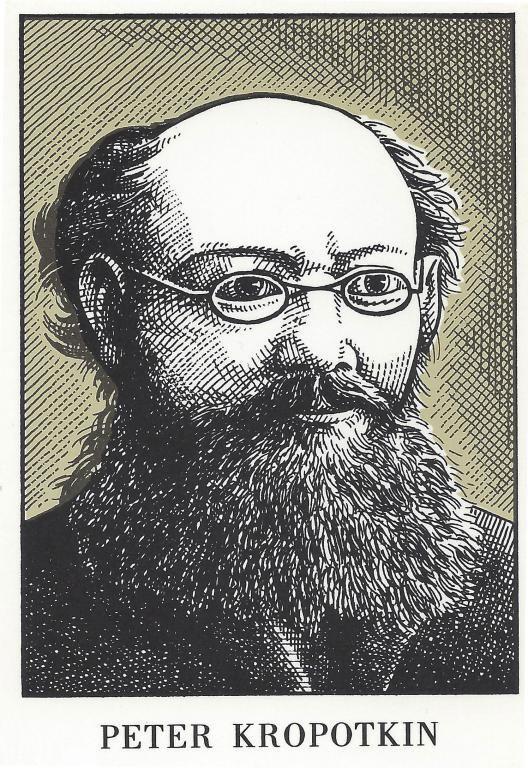
Source: https://libcom.org/gallery/anarchist-portraits-clifford-harper
Peter or Pjotr Kropotkin is Russian geographer, scientist and anarchist that could be given a credit of one of the most prominent figures of the political philosophy bridging the 19th and 20th century. He is born in 1842 in Moscow into an aristocratic family of landlords and is given the title of a prince as direct heir of the pre-Romanov royal dynasty of Rurik’s. Peter receives the education in military school and serves as an officer in Siberia having various ranks and position during the military career. Simultaneously, he receives an education in geography. As geographer, explorer and biologist Kropotkin was a first-class natural scientist. In 1862, he exiles himself to eastern Siberia to escape the life of noble on Tzar’s court. Precisely, at the age 21, he is offered by the Tzar Alexander II to choose a regiment, and Kropotkin decides to go to Transbaikalia, a remote and savage Siberian province in which Russian imperium is still weak. Apart from his rebel towards his noble roots and military discipline, his choice was partially influenced by his dislike for cities and crowds at his young age (Purchase, 2003). Once he arrives in Siberia, he uses his education as geographer to organize both scientific and military expeditions into Siberian mountains and plains. These travels are later compared to Darwin’s expeditions to Galapagos with MHS Beagle. In this period Kropotkin researches the flora and fauna, topography, climate, geology, and anthropology of remote areas of Manchuria, Lena mountain and Amur region. With these travels, he proves that the orography of north-east Asia is significantly different from what was believed before. He describes plateaus as a distinct type of relief as relevant as a mountain range. Observations on prehistoric glacial movements convince him that during the Ice Age the ice went as south as to 50th parallel turning the steppe into a mosaic of lakes and forests, that gradually turned into grasslands and even desert. It is one of the first scientific attempts to use climate changes as an inevitable factor of history of human civilization (Davis, 2016). It will take half a century for this to be considered seriously on a larger scale in other natural sciences.
After the voluntarily quitting his military career and ties to royal origins he dedicates himself to science, philosophy and politics very soon being imprisoned for his believes in 1847 in the legendary prison of Peter-Paul fortress. As a noble, he still enjoys the freedom to write and do scientific research during his imprisonment. From this point, his scientific work intensely intertwines with his work as revolutionary. During following turbulent decades of life, he travels to Switzerland and Belgium, engages with many prominent socialists and anarchist of his time like Jura Federation and Workers International, rejects the offer to be the director of Russian Society of Geographers, does numerous geographical expeditions, is exiled and imprisoned numerous times. His extraordinary path inspired several authors to make his biographies from different angles (Woodcock, 1971; Miller, 1976; Woodcock and Avakumovic, 1978; Shatz, 1995; Marshall 2009; Ferretti 2011; Harman 2018, Johnson, 2019). After several exiles in Switzerland, France (where he spent four years in prison) he settles in the United Kingdom in 1886. His years in London are for him the most productive period as a writer still insisting on both of his passions: geography and anarchism. Although already earlier in Switzerland he took part in the founding political journal Le Revolte, in London he starts to write regularly for the British periodicals, in particular the Encyclopaedia Britannica (1768), Statesman’s Year Book (1864), The
Nineteenth Century (London, 1877) and Nature (London, 1869). As Ferretti (2017) acknowledges, these articles pay Kropotkin living and are a steady income for an unstable revolutionary lifestyle. On top of that, they are a polygon for developing his most famous books, such as Fields, Factories and Workshops (1898), Mutual Aid (1902), Modern Science and Anarchism (1903), The Great French Revolution (1909) and Ethics (1921), all of which are practically a collection of articles published in the Nineteenth Century or other periodicals (Ferretti, 2017).
As political philosopher Peter Kropotkin developed a relatively straight forward set of proposals about how to tackle centralised power, labour division and negative consequences of the industrial revolution. He advocated decentralised society in which most possessions are communally owned and where individuals are integrating manual and intellectual labour voluntarily associating into selfgoverned communities and workers cooperatives. On the geographical scale, this implies a city as entity interconnected with its surroundings into an ecological region. This region has urban structures, agriculture, nature, and industry integrated and downscaled to the proximity of every working man and women. Kropotkin elaborates his stances on the economy, often referring to both production and consumption in which the primer argument to blur the boundary is his standpoint on economies’ role in natural resources management. As Graham Purchase (2003) argued he was “the first person to mould proto/ecological concepts within the economy, geography and biology coherently into a social and political economy.” The key contribution he gave to the debate on humankind-nature continuity is his latest work on mutual aid. Proving the scientific dimension of anarchist thought in parallel with criticising social Darwinism as a foundation to capitalist competition became an important objective in the later years of his life. He is a pioneer of urban environmentalism as a scientific field, giving elaborated arguments about how our social behaviour in urban surroundings causes measurable and comparable biological effects.
Kropotkin, as an author is both structured thinker and passionate idealist. These two characteristics are mutually complementing in his writing, contributing to the powerlessness of his argument. His idealist and principled perspective of nature-society relations are founded in the book ,Mutual Aid’ from 1902. He, in a holistic (again structured) manner, uses his observations as geographer to complement the Darwinist concept of nature’s competition with cooperation (Woodcock and Abakumovic, 1978) Kropotkin sees cooperation or mutual support as equal, if not a more significant force in both, biological and social, coexistence. Cooperation plays a significant part in all of his work, including The Conquest of Bread and Field, Factories and Workshops. Here he calls the driving force of cooperation ‘the Spirit of organization’ that leads post-revolutionary agrarian and industrial workers. This idealistic belief is ground for his grand-scale proposals.
On the other hand, Kropotkin is also a pragmatic writer with belief in scientifically informed approach. Since his early works, he uses a similar structure of argument: observing a real-life example, detecting a cause of the problem or a failure, then more or less systematically relating it to higher ideal grounds and principles, and occasionally proposing better ways instead. Finally, Kropotkin’s political philosophy has some limitations, some of which could be explained as consequences of the time in which he lived. In his theory, he relies on revolution as the only possible way to transform society assigning it almost divine character. Similarly like for mutual aid, for the revolution, the driver is ‘spirit of organization’, a rather thin concept that he hardly explains. These are the significant critiques that many who disagreed with his ideas used against his proposals. The third note to limits of his thought is ecological and is as well documented by Graham Purchase in his elaborate doctoral thesis Peter Kropotkin Ecologist, Philosopher and Revolutionary (2003). Compared to his contemporary fellow anarchist geographer Elisee Reclus Kropotkin has a more human-centred approach to science and politics. Unlike Reclus, he never became vegetarian or advocated recognition of non-human voices.

Source: https://www.alamy.com/
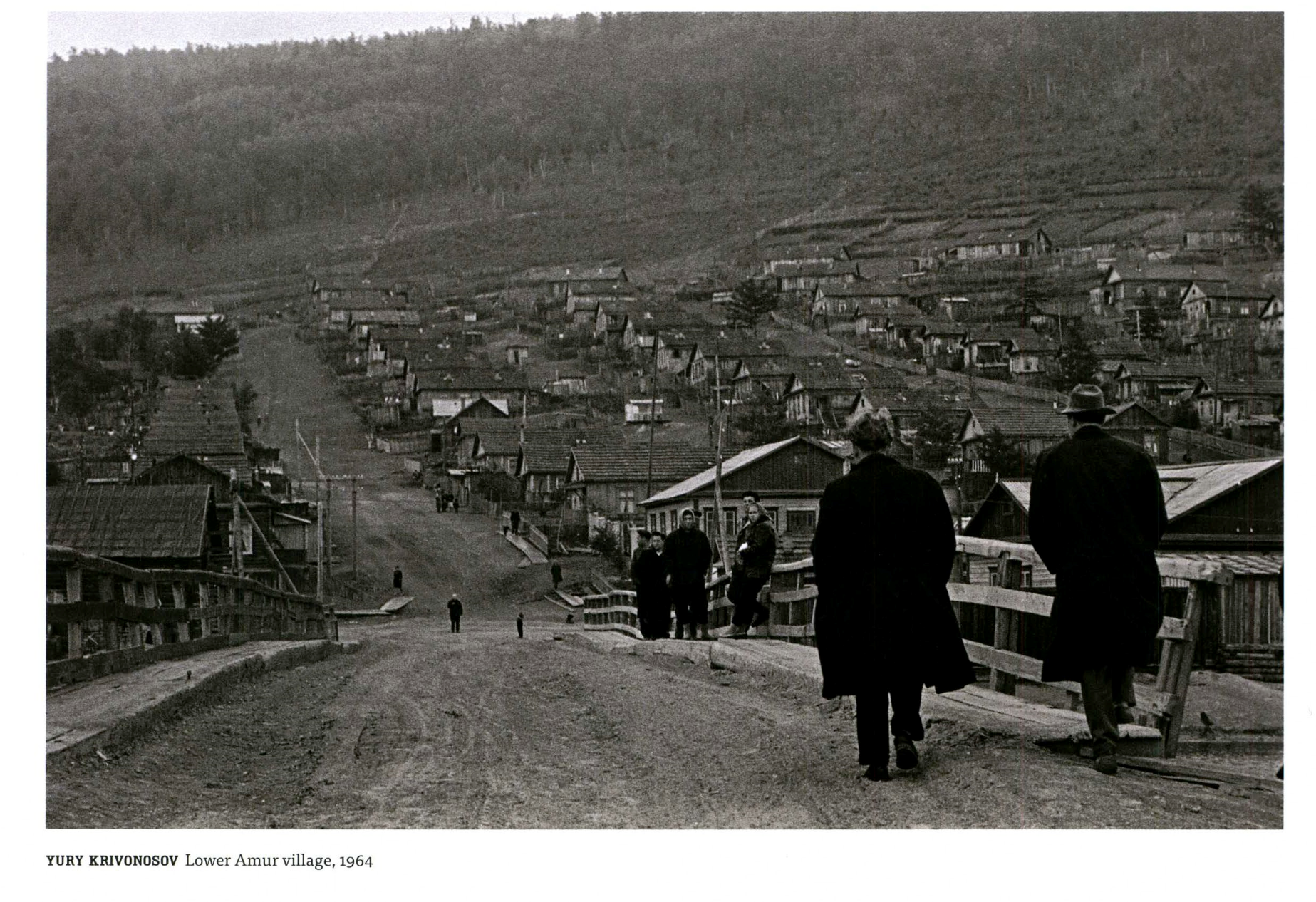
Source: https://theartbookreview.org/2014/04/27/siberia-in-the-eyes-of-russian-photographers/
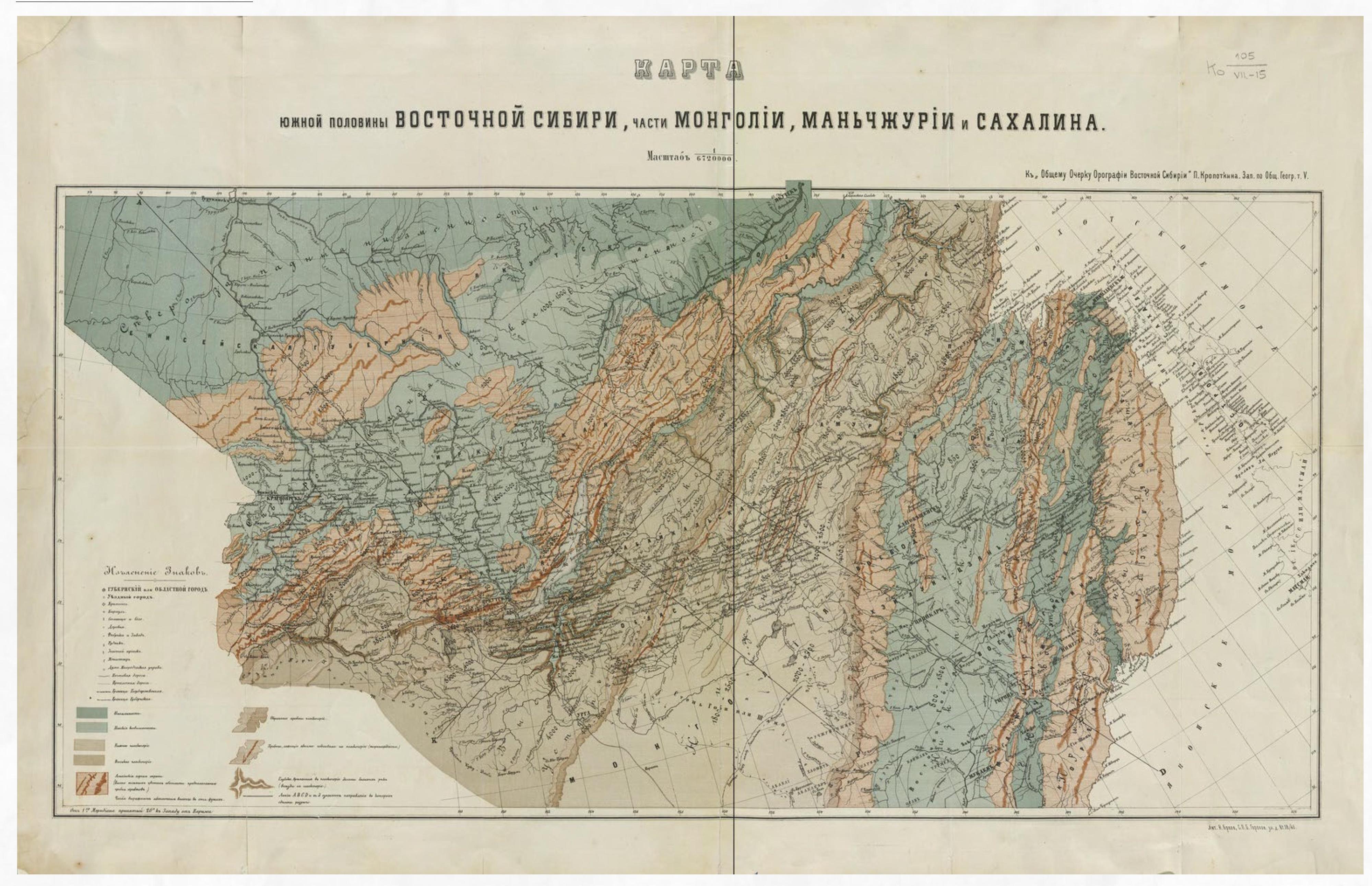
Source: https://runner500.files.wordpress.com/2015/05/img_0890.png
Peter Kropotkin, after the exile to London, spend his lifeless adventurously, writing and communicating with the rich network of his contemporaries and occasionally taking part in protests around England. “He used this time to combine the scattered insights of Fourier, Proudhon and Bakunin with the living ideas of Russian populism and European anarchism into a comprehensive social philosophy. His background as a professional natural and social scientist allowed him legitimately to extend these concepts into anthropology, biology and economics. In doing so, he became one of the founders of modern environmental science and political ecology. A speaker of over 20 languages and able to write with a distinctive style in many European ones, combined with the fact that he was forced to earn a living from his pen, meant that his output was vast, his style remained popular, and his influence was worldwide.” (Purchase, 2003) It remained so until 1917 when he returns to Russia. He hopes to see the worker’s revolution turn into a true decentralized integration of countryside and city through the cooperative spirit of Russian peasants. Instead, he is devastated after finding out the Revolution turned into an oppressive dictatorship of Bolshevism. Deeply disappointed he retreats Dmitrov and dies in 1921, at the age of 79. His funeral is attended by 100 000 people including many globally known anarchists, socialists and scientists and was for coming 70 years last public protest in Soviet Russia.
Kropotkin is during his life supported by his wife Sofia Grigoryevna, also a scientist with an international career. Let it be noted that Kropotkin gives little attention to the struggles of the early feminist movement and does not often elaborate on the position of women in his theory. However, when Peter’s health deteriorates, Sofia gives up her career and dedicates herself to supporting him. This might be fundamental to his productivity and long life since in the second half of his years his health is seriously damaged by his travels to Siberia, years in prison and restless fight for the ideal of anarchist society (Purchase 2003).
Mutual Aid
Peter Kropotkin’s central contribution, to both political philosophy and arguably natural sciences, is his description of mutual aid or support within and between the species as a key factor of evolution. His book Mutual Aid (1902) is one of the earliest serious attempts in social and political theory to undermine that social life can be explained in the competitive and aggressive terms of social
“Kropotkin was one of the first thinkers to realise that a scientifically informed approach to organic composting techniques combined with new horticultural concepts, such as glass house culture, might allow the city to feed itself through the intelligent recycling of its human, animal and vegetable wastes. Kropotkin believed that, in this respect, we had much to learn from the Chinese and Japanese; noting that, through their advanced composting, they were able to maintain dense populations through “utilising what we lose in sewage.” (Purchase, 2003)
Darwinism. At the time when the book is published, Darwin’s, Wallace’s and Huxley’s concept of brutal, competitive struggle in the natural world is employed to explain slavery, war and poverty in and among societies. On the opposite side, Kropotkin recognizes in both nature and society forces of cooperation as a key factor in survival, coexistence, ensuring resources, empathy and reproduction of a kind. Although mainly presented in his seminal book Mutual Aid-Factor of evolution, all works of Kropotkin rely on the argument that there is a strong inclination to collaborative, mutually supportive practices in all aspects of life. This is the most important principle on which he builds argumentation for the possibility of an anarchist society. The book Mutual Aid uses his geographical, biological and anthropological observations to show that mutual aid is not just care, or solidarity but arises from a ‘biological and environmental theory, pertaining to evolutionism, and is evolution’s force parallel to competition at least. Kropotkin shows that animals from most primitive ones like bees and insects to the most complex — like mammals, monkeys and humans are very sociable and tend to share, care and cooperate in the form of reciprocal altruism. In the rest of the book, he seeks for the same principle in human societies illustrating examples among what he calls ‘savages’ and ‘barbarians’, rural communities, medieval cities and all the way to contemporary society. These tendencies of people to self-organize in order to share resources, build communally, support the weak and unlucky are continuous and omnipresent in all phases and geographies of humankind.
If we are sociable and compassionate beings since most early ages, why do we need a State or any form of a centralized authority to organize us? (Purchase, 2003) This is especially observable in our times when due to the global environmental crisis, migrations and pandemics there is a large-scale response almost by the rule not organized by the State but by the community-driven by mutualism. Like an example of Argentinian Barrios de Pie, 2000 small-scale communal kitchens that distributed meals during COVID-19 pandemic to 500 000 seniors around the country.
Integration of city and countryside
During the decade of 1880 Kropotkin develops an idea of the economic integration of the city and countryside. He imagines it as a territory where the big city and its surrounding fields with decentralized and industrialized communities reciprocally feed each other with food, goods and primary resources, united into regional federations and confederations. The inhabitants of such integrated spatial system are both workers and farmers, producers and consumers of their agricultural and industrial products. Although the idea is presented in his seminal Fields, factories and workshops (1899), Kropotkin’s book The Conquest of Bread (1892), as a collection of preceding ideas on how to organize the postrevolutionary society, becomes the book that inspires the anarchist labour movement in Spain during the first decades of the last century. Similar cases are his influences on Mexican revolutionaries like Flores Magon and Emiliano Zapata, and more recently Murray Bookchin, American advocate of democratic federalism that inspired political processes in Kurdistan. In these two books, Kropotkin conceptualizes post-revolutionary reorganization and (self-)management of the city through socialized consumption established to provide basic needs ahead of restarting the production after the revolution successes — ‘Bread before all’, he urges. The new emancipated society he advocates is set in a new space that revolutionizes the capitalist conception of food supply, housing and municipal public services.

Source: https://www.lanacion.com.ar/politica/coronavirus-argentina-barrios-pie-instalo-2000-ollas-nid2355450

Education
Peter Kropotkin spent a significant part of his life agitating, teaching and exchanging knowledge with peasants, workers and intellectuals of his time. As young geographer and revolutionary in Russia he is agitating and giving speeches to peasants in surroundings of St. Petersburg and Moscow, as mature scientist exiled in London he makes several tours around England and Scotland with lectures reaching audiences of 4000 people. Even in his old age, back in post-revolution Dmitrov, disappointed and isolated, he spends significant time with peasants learning from them techniques of gardening and composting. Kropotkin, in this sense, is close to Reclus, seeing the role of geography and planning as a tool for emancipation and pedagogy of everyday practices of mutual aid.
“Fundamental to the anarchist vision of social change is the importance of consistency between means and ends. Social anarchists do not believe that authoritarian-driven struggles can produce antiauthoritarian ends. Much attention is therefore devoted to the importance of decentering knowledge and promoting education for self-management. [...] They call for a more liberating, critical, and reflexive form of learning to be taught in the schools and in venues outside the classroom.” (Breitbait, 2009)
In that sense, much of Kropotkin’s work refers to the anarchism as a practice in mutual aid in education and self-determination — a form of radical pedagogy in which production of space on a most local scale and community level is a true ,classroom ‘. He believed that well-designed and centrally governed space could not have a true impact on a better life if it was not related to new forms of social organization from bellow. On the other side, he saw in spatial relations, relations of production and consumption, city-countryside, landowner-labourer the exact reflections of malfunctions of the State and capitalist society. Many contemporary geographers, environmentalist and planners since have undertaken and effort to develop a critique of spatial planning as authoritarian and power centralizing discipline and promoting means of spatial production to educate, empower and emancipate all scores of people. One of them is Colin Ward.
Full bibliography (incomplete)
Kropotkin, P. (1873). “Dolzhnyi-li my zaniat’sia rassmotreniem ideala budushchego stroia?” Published originally in abridged form in Byloe, no. 17 (1921), and in complete form for the first time in B. S. Itenberg, ed., Revoliutsionnoe narodnichestvo. Moscow: Nauka, 1964. 1:55–118. Translated into English as “Must We Occupy Ourselves with an Examination of the Ideal of a Future System” in P. Kropotkin, Selected Writings on Anarchism and Revolution, pp. 46–116.
- — (1873). Pugachev ili bunt 1773 goda . Geneva.
- — (1876). “Research on the Ice age”, Notices of the Imperial Russian Geographical Society
- — (1877). “Bulletin international”. LAvant-Garde. (On Pittsburgh strikes).
- — (1879). Le Proces de Solovieff . Geneva.
- — (1881). La Veritesur les executions en Russie. Geneva.
- — (1882). “The Russian Revolutionary Party”. The Newcastle Chronicle October 12.
- — (1882). “The Russian Revolutionary Party.” Fortnightly Review.
- — (1885). Paroles d’un Revolte. ed. Elisee Reclus. Paris: Flammarion. Montreal; New York: Black Rose Books, 1992.
- — (1887). L’Anarchie Dans L’evolution socialiste. Paris: Au Bureau du Revolte. Conference faite a la Salle Levis, 31pp.
- — (1891). Anarchist-Communism: Its Basis and Principles. London. pp. 538–559.
- — (1893). “L’agriculture.” Paris: Au bureau de La Revolte.
- — (1893). Un Siecle d’attente. Paris.
- — (1893). “On the Teaching of Physiography.” Geographic Journal, vol. 2, pp. 350–359.
- — (1894). Les Temps nouveaux. Paris.
- — (1896). L’anarchie: sa philosophie, son ideal: conference qui devait etre faite le 6 mars 1896 dans la salle du Tivoli-Vauxhall a Paris. Paris: En vente a la Libr. sociale..
- — (1897). La Grande Greve des Docks. (with John Burns). Paris: Bibliotheque des Temps nouveaux.
- — (1901). “The Present Crisis in Russia”. The North American Review, Vol. 172, No. 534, pp. 711723.
- — (1902). “Russian Schools and the Holy Synod,” North American Review Vol 174, No 454, April, pp.518–527.
- — (1904). “Maxim Gork,” The Independent, Vol. 57, No. 2924, pp. 1378–1371, New York: W. S. Benedict, December 15, 1904.
- — (1905). “Bakunin.” Khleb I volia, July, nos.19–20.
- — (1905). “Elisee Reclus Obituary”. The Geographical Journal, Vol. 26, No. 3 September 1905, pp. 337–343.
- — (1906). “Nashe otnoshenie k kret’ianskim i rabochim soiuzam.” Listki “Khleb i volia,” November. Reprinted in P. A. Kropotkion, Russkaiarevoliutsiia i anarkhizm. London, 1907.
- — (1907). Russkaia revoliutsiia I anarkhizm. Edited by P. A. Kroputkin. London.
- — (1910). “Anarchism”. The Encyclopaedia Britannica, 11th edition.
- — (1914). L’action anarchiste dans la revolution . Paris.
- — (1916). La Nouvelle Internationale . Paris.
- — (n.d.) War!. London: William Reeves
- — (n.d.) Law and authority; an anarchist essay. London: William Reeves
- — (1921).”Ideal v revoliutsii.” Byloe, no. 17.
- — (1922). Etika. Petrograd-Moscow: Golos Truda.
- — (1923). “Chto delat’?” Rabochiiput’. Berlin: no. 5. (July). Re-published in G. Maksimov, ed., P. A. Kropotkin I ego uchenie. Chicago: Federatsiia
Books
- --(1891). “La Morale anarchiste . Paris.
- — (1892). La Conquete du Pain. Paris: Stock.
- — (1892). “The Spirit of Revolt”. Commonweal
- (1896). An Appeal to the Young London: W. Reeves.
- — (1898). Anarchism: its philosophy and ideal. San Francisco: Free Society.
- — (1898). Anarchist morality. San Francisco: Free Society.
- — (1899). Fields, Factories and Workshops. London: Hutchinson.
- — (1899). Memoirs of a Revolutionist. New York: Houghton, Mifflin.
- — (1901). LOrganisation de la vindicte appellee Justice. Paris.
- — (1901). Modern Science and Anarchism. London. In Russian. English translation, 1903. Revised and enlarged French edition 1913.
- — (1901). The Development of Trade Unionism. London.
- — (1902). Mutual Aid: A Factor of Evolution. London: Heinemann.
- — (1902). Zapiski revolutsionera. London.
- — (1906). The Conquest of Bread. New York and London: G.P. Putnam’s Sons. Reprinted,1926, New York: Vanguard Press; 1995, The Conquest of Bread and Other Writings, ed. M. Shatz. Cambridge: Cambridge University Press.
- (1908). Modern Science and Anarchism. New York: Mother Earth.
- — (1909). The Terror in Russia. London: Methuen.
- — (1909). The Great French Revolution, 1789—1793. London: Reprint 1971. New York. Schocken Books.
- (1911). The State: Its Historic Role. London: Freedom Press.
- (1912). Modern Science and Anarchism. London: Freedom Press.
Journal articles
Federation Jurassienne de lAssociation Internationale des Travailleurs
— — (1876). “A propos de la question d’Orient”, Bulletin de la Federation Jurassienne de l’Association Internationale desTravailleurs. [Hereafter: Bulletin.], September 24.
— — (1877). “Nouvelles de l’exterieur: Russie.” Bulletin, 1, April 15, May 6, 13, June 10, September 2, December 2, 23.
— — (1877). [Untitled article on 8-hour day in USA]. Bulletin, June 10.
— — (1877). “Les Trades Unions.” Bulletin, May 27; June 17, 24; July 17.
— — (1877). [Untitled article on war in the Orient]. Bulletin, June 17, 24.
— — (1877). [Untitled article on socialist deviationism]. Bulletin, July 22, 29.
— — (1877). “Affaires d’Amerique.”Bulletin, August 5.
— — (1877). “Le Vorwarts et le peuple russse” Bulletin, August 12.
Le Revolte / from 1897 Les Temps nouveaux,
— — (1879). “Idee anarchiste au point de vue de sa realisation pratique.” Le Revolte. November 1, Translated into English in Freedom. October, 1901.
— — (1879). “La Situation”. Le Revolte, March 3.
— — (1879). “La Decomposition des Etats”. Le Revolte, April 5.
— — (1880). “L’Annee 1879”. Le Revolte, January 10.
— — (1880). “La Prochaine Revolution”. Le Revolte February 7.
— — (1880). “Le Gouvernement representatif” Le Revolte, March 6.
— — (1880). “La Commune de Paris.” Le Revolte, March 20.
— — (1880). “Les Pendaisons en Russie”. Le Revolte .
— — (1880). “La Commune”. Le Revolte, April 3.
— — (1880). “Aux Jeunes Gens”. Le Revolte, June 25; July 10; August 7, 21.
— — (1880). “La Question agraire”. Le Re’volte, September 18.
— — (1880). “Les Elections”. Le Revolte, December 25.
— — (1880). Speech at Jura Federation Conference, Le Revolte, October 17
— — (1881). “L’Annee 1880”. Le Revolte, January 8.
— — (1881). “Les Ennemis du peuple”. Le Revolte, Feabruary 5.
— — (1881). “La Commune de Paris”. Le Revolte, March 18.
— — (1881). “La Situation en Russie”. Le Revolte, March 18.
— — (1881). “L’Espirit de Revolte.” Le Revolte. May 14-July 19.
— — (1881). “Tous socialistes” Le Revolte, September 17.
— — (1881). “L’Ordre” and probably also ‘La Ligue des Trades Unions”. Le Revolte October 1.
— — (1881). “Les Minorites revolutionnaires” Le Revolte, November 26.
— — (1881). “L’Organisation ouvriere” Le Revolte December 10, 24.
— — (1882). “L’Expropriation.” Le Revolte. November 25-December 23, 1882. A revised and expanded brochure edition appeared in English in 1886.
— — (1882). La Guerre. Geneva: Le Revolte.
— — (1882). “Les Droits politiques” Le Revolte, February 18.
— — (1882). “Theorie et pratique”. Le Revolte, March 4.
— — (1882). “L’Anniversaire du 18 mars”. Le Revolte, April 1.
— — (1882). “La Loi de l’autorite”. Le Revolte, May 19, 27, August 5, 9.
— — (1882). “Le Gouvernement pendant la revolution”. Le Revolte, September 9, 16; October 14.
— — (1882). “Les Preludes de la revolution”. Le Revolte, October 28.
— — (1882). “La Situation en France”. Le Revolte, December 9.
— — (1882). “L’Expropriation” Le Revolte, November 25; December 23.
— — (1886). “L’Expropriation”. Le Revolte, February 14.
— — (1886). “Anarchy in Socialist Evolution”. Le Revolte, March 28-May 9.
— — (1886). “Comment on s’enrichit” Le Revolte, May 29-July 3.
— — (1886). “La Pratique de l’expropriation” Le Revolte, July 10–17.
— — (1886). “La Guerre sociale” Le Revolte, September 11–17.
— — (1886). “Les Ateliers nationaux” Le Revolte, September 25-October 1.
— — (1886). The Place of Anarchism in Socialistic Evolution. Address delivered in Paris, translated by H.Glasse. First appeared in Le Revolte, March 28-May 9; London: William Reeves.
— — (1888). “Le Salariat” La Revolte, August 26-September 30.
— — (1889). “Le centenaire de la revolution”. La Revolte, June 30-September 21.
— — (1889). “Ce que ctest qutune greve” La Revolte, September 7.
— — (1890). “La morale anarchiste au point de vue de sa realisation pratique.” Le Revolte. March 1-April 16,
— — (1890). “Le Mouvement ouvrier en Angleterre” La Revolte, September 1890.
— — (1890). “Le Premier Mai 1891”, La Revolte, October 18.
— — (1890). “Le Premier Mai”, La Revolte, November 1.
— — (1891). “Les Greves anglaises” La Revolte, Februray 21; March 18.
— — (1891). “L’Entente” La Revolte, April 11.
— — (1891). “Etude sur la Revolution.” Le Revolte. July 10-November 7, 1891. Translated as “Revolutionary Studies.” Commonweal. London: 1892.
— — (1891). “La Mort de la nouvelle Internationale”. La Revolte October 17.
— — (1892). “Affaire de Chambles”. La Revolte, January 16.
— — (1892). “Le Terrorisme” La Revolte, April 23.
— — (1892). “Explication”. La Revolte, June 18.
.--- (1893). “Les Principes dans la revolution”. La Revolte, December 17.
— — (1896). “L’Anarchie dans L’Evolution socialiste.” Le Revolte, March 28-May 9, 1886
— — (1899). “Cesarisme” Les Temps Nouveaux, December 3-January 21.
— — (1897).”L’Etat: son role historique.” Les Temps nouveaux, December 19, 1896 - July 3 1897.
— — (1900). “Communisme et anarchie.” Les Temps nouveaux, supplement litteraire, no. 23.
— — (1904). “Comment fut fonde Le Revolte” Les Temps Nouveaux. February 20–26.
— — (1910). “Insurrection et revolution”. Les Temps Nouveaux, August 6.
— — (1913). “La Croisade la science de M. Bergson,” Les Temps Nouveaux, October 25
The Nineteenth Century
— — (1883). “Russian Prisons”. The Nineteenth Century.
— — (1883). “The Fortress Prison of St Petersburg”. The Nineteenth Century, June.
— — (1883). “Outcast Russia”, The Nineteenth Century, December, pp. 963–76.
— — (1884). “Exile in Siberia”. The Nineteenth Century, March, pp. 475–93.
— — (1885). “Finland: a Rising Nationality”. The Nineteenth Century. March, pp. 527–46.
— — (1885). “What Geography Ought to Be.” The Nineteenth Century. V.18, pp. 940–56.
— — (1887). “The Coming Anarchy”. The Nineteenth Century. XXII (126), August, pp. 149–64.
— — (1887). “The Scientific Basis of Anarchy”. TheNineteenth Century. XXI, February, pp. 238–58.
— — (1888). “The Industrial Village of the Future.” Nineteenth Century, pp. 513–530.
— — (1889). “The Great French Revolution and its Lesson.” The Nineteenth Century., pp. 838–51.
— — (1890). “Brain Work and Manual Work.” The Nineteenth Century. March, pp. 456–475.
— — (1890). “Mutual Aid Among Animals, 1.” The Nineteenth Century, September, pp. 337-354.
— — (1890). “Mutual Aid Among Animals, 2.” The Nineteenth Century, v. 25, November, pp. 669719.
— — (1891). “Mutual Aid Among Savages”, The Nineteenth Century, XXIX, April
— — (1892). “Mutual Aid Among Barbarians”, The Nineteenth Century, XXXI, January, pp. 101–122.
— — (1894). “Mutual Aid In the Medieval City.” The Nineteenth Century, v. 36, pp. 183–202, August; pp. 397–418, September.
— — (1895). ”The Present Condition in Russia.” The Nineteenth Century. V. 38, pp. 519–35.
— — (1896). “Mutual Aid Amongst Modern Men.” The Nineteenth Century, pp. 65–86, January.
— — (1896). “Mutual Aid Amongst Ourselves,” The Nineteenth Century, XXXIX, June, pp. 914–936
— — (1898) “Some of the Resources of Canada.” The Nineteenth Century. March, pp. 494–514.
— — (1904). “The ethical needs of the present day”. The Nineteenth Century, LVI, pp. 207–226.
— — (1905). “The Constitutional Agitation in Russia.” The Nineteenth Century, January.
— — (1905). “The Morality of Nature”, The Nineteenth Century, LVII, March, pp. 407–426.
— — (1905). “The Revolution in Russia”. The Nineteenth Century and After. December.
— — (1910). “The Theory of Evolution and Mutual Aid,” The Nineteenth Century, LXVII, January, pp. 86–107.
— — (1910). “The Direct Action of Environment on Plants,” The Nineteenth Century, LXVIII, pp. 5877
— — (1910). “The Response of the Animals to Their Environment” Part 1, The Nineteenth Century, LXVIII, pp. 1046–1059.
— — (1912). “The Inheritance of Acquired Characters: Theoreticsl Difficulties”, The Nineteenth Century, LXXI, pp. 511–563.
— — (1913). “The Coming War.” The Nineteenth Century.
— -- (1914). “Inherited Variation in Plants,” The Nineteenth Century, LXXIV, pp. 816–886.
— — (1915). “Inherited Variation in Animals,” The Nineteenth Century, LXXVIII, November, pp. 11241144.
— — (1919). “Direct Action of Environment and Evolution.” The Nineteenth Century. V. 85, pp. 70–89.
Freedom (selection)
— — (1891). “Message to delegates at the meeting of British and French Trade Unionists”. Freedom. September.
— — (1893). Advice to Those About to Emigrate.” Freedom, March, p14.\
— — (1891). “The Commune of Paris,” Freedom Pamphlets No. 2, London: Freedom Press.
— — (1891). “Anarchist Communism: Its Basis and Principles,” Freedom Pamphlets No. 4, London
— — (1893). Speech on Anarchism at Grafton Hall. Freedom, April.
— (1895). “The Commune of Paris”. Freedom Pamphlets, no. 2, London: W. Reeves.
— — (1901). “Communism and Anarchy.” Freedom, July, p. 30; August, p. 38.
— — (1909). Anarchism: its philosophy and ideal. London: Freedom pamphlets no. 10.
— — (1909). Anarchist communism, its basis and principles. London: Freedom pamphlets no. 4.
--- (1920). “The Wage System”. Freedom Phamphlets. No 1, New Edition.
About Kropotkin
Berneri, C.(1943). Peter Kropotkin, his federalist ideas. London: Freedom Press.
Borovi, A. A. (ed.) (1923). Dnevik P. A. Kropotkina. Moscow-Petrograd: Gorsizdat.
Breitbart, Myrna Margulies (1981). “Petr Kropotkin, The Anarchist Geographer.” in Geographay, Ideology and Social Concern. D. R. Stoddart, ed. Totowa, NJ: Barnes and Noble Books, pp. 134–153.
Breitbart, Myrna (1981). Geography, Ideology and Social Concern. Oxford: Blackwell.
Cahm, C. (1989). Kropotkin and the Rise of Revolutionary Anarchism 1872—1886. Cambridge: Cambridge University Press.
Cleaver, H. (1994). “Kropotkin, Self-valorization and the Crisis of Marxism”. Anarchist Studies. Vol. 2, Number 2. pp. 119–136.
Dugger, W.M. (1984). “Veblen and Kropotkin on Human Evolution,” Journal of Economic Issues, XVIII, pp. 971–85.
Galois, B. (1976). “Ideology and the idea of Nature: The Case of Peter Kropotkin.” Antipode. V. 8, pp. 1–16.
Girdner, E. (1992). review: Kropotkin and the Rise of Revolutionary Anarchism 1872—1886 by Caroline Cahm. Social Anarchism. No. 17, pp. 60–64.
Gould, S.J. (1988). “Kropotkin was no Crackpot.” Natural History, v97. pp. 12–21.
Harney, Stefano (2002). “Fragment on Kropotkin and Giuliani.” Social Text. v. 20, n. 3, pp. 9–20.
Holloway, W. (1942). “What Kropotkin means to me.” In Centennial Expressions, pp. 34–5. New York.
Ishill, Joseph, editor (1924).Peter Kropotkin: the Rebel,Thinker and Humanitarian. Berkeley Heights, N.J.:Free Spirit Press.
Kearns, Gerry (2004). “The political pivot of geography.” The Geographical Journal, Vol. 170, No.
4, December, pp. 337–346.
Keltie, J. S. (1921). “Obituarry for Peter Alexeivich Kropotkin.” The Geographical Journal. V. 57, pp. 316–9.
Kemp-Welch, Tony. (1996). “Bakunin and Kropotkin on anarchism,” In A Textual Introduction to Social and Political Theory, Bellamy, Richard & Ross, Angus (eds). Manchester: Manchester University Press.
Kenafick, K.J. (1948). Michael Bakunin and Karl Marx.
Knowles, Rob (2003). “Kropotkin And Reclus: Geographers, Evolution, and ‘Mutual Aid’,” in John Laurent (ed.) Evolutionary Economics and Human Nature, Aldershot: Edward Elgar.
McCulloch, Caroline (1984). “The Problem of Fellowship in Communitarian Theory: William Morris and Peter Kropotkin.” Political Studies. XXXII, pp. 437–450.
Metcalf, Wm., (1987). “Anarchy and bureaucracy within the alternative lifestyle movement: or Weber vs “Kropotkin at Nimbin” Social Alternatives. V.6, No.4. November 1987: 47–51.
Miller, M.A. (1976), Kropotkin. Chicago: University of Chicago Press.
Miller, D. (1983). “Kropotkin”. Government and Opposition. 18, pp. 319–38.
Morris, Brian (2002). “Kropotkin’s Ethical Naturalism.” Democracy & Nature. Vol. 8, No. 3, 423–437.
--- (2007). The Anarchist Geographer: an introduction to the life of Peter Kropotkin. Sumerset, UK: Genge Press.
--- (2003). Kropotkin: The Politics of Community. London: Humanity Press.
Osofsky, S. (1979). Peter Kropotkin. Boston: Twayne Publishers.
Padovian, Dario (1999). “Social Morals and Ethics of Nature: From Peter Kropotkin to Murray Bookchin.” Democracy & Nature. Vol. 5, no. 3, pp. 485–500.
Robinson, V. (1908). Comrade Kropotkin. New York.
Stoddart, D. R. (1976). “Kropotkin, Reclus, and ‘relevant’ geography.” Bulletin of Environmental Education. V. 58, p. 21.
Smith, M. (1989). “Kropotkin and technical education: an anarchist voice”. in For Anarchism: History, Theory, and Practice. Goodway, D., ed. London: and New York: Routledge. pp. 217–234.
Turgueneff and Tolstoi (1901). “Prince Kropotkin’s lecture on the Russian Novelists.”The New York Times. March, 31,1901.
Walter, Nicholas and Heiner Becker, eds. (1988). Act for Yourselves. Articles from Freedom 18861907. Peter Kropotkin. London: Freedom Press.
Woodcock, G. and Avakumovic, I. (1971). The Anarchist Prince: A Biographical Study of Peter Kropotkin. New York: Schocken Books and reissued as Peter Kropotkin: from prince to rebel.
2.1. Periodicals and Mutual Aid
The birds know no boundaries — anarchist’s contribution to scientific debates
The first Kropotkin’s work to present in detail is Mutual Aid (1902). Although it is not chronologically the first book published, it is a base to understand the environmental dimension of all of his other works. Mutualism, appearing both in wildlife and human ecosystems, is a bridge with which Kropotkin connects his scientific and political argument. It derives that the social organization is influenced by two factors 1) reciprocal altruism and 2) resource management in times of scarcity and abundance. Next to it, this chapter will give a brief overview of Kropotkin‘s publications in political and scientific periodicals of his time. This choice comes out of the intention to contextualize his political philosophy as arising from Kropotkin’s objective to defend anarchist ideas by means and methods of science and structured argumentation. Simultaneously he uses anarchism to link natural and social sciences while undermining social Darwinism, which was the great debate of his time. Kropotkin credits several precursors to his idea of mutualism as a factor for evolution and debates several of Darwinists and Hobessian sociologists. This summary of mutualism starts with presenting the basic structure and content of the book Mutual Aid, then discussing it’s most relevant chapters for ecological urbanism: Mutual aid among barbarians and two of the same title Mutual aid in Mediaeval City. It is at the end complemented with a summary of his writings for periodicals with more detail insight in articles in The Nineteenth Century and Freedom. A most detailed comment is given on the article Industrial village of the Future (Kropotkin, 1888) which beholds the key to understand his two books presented in chapters that follow.
Mutual aid — a factor of joyful survival
Mutual Aid is a collection of essays published as a book in 1902. Previously, each chapter was published separately as seven articles in the English academic journal Nineteenth century from 1890 to 1896. These articles divide into two separate parts. Fist two collect observations on examples of mutual aid in the animal world and its’ two different scales of complexity. The remaining five chapters chronologically organize the history of human civilization illustrating how mutual aid passed from phase to phase and always survived various forms of oppression by recombining it’s bodies, habits and spaces into new assemblies of cooperation. Combining the chronological and argument on a complexity that increases in evolutionary phases; Kropotkin aims to prove that mutual aid has a dimension of an essential factor of evolution. Book illustrates the importance of mutual aid for prosperity and survival in nature and society in a stream of the following chapters: “Mutual Aid Among Animals.” (The Nineteenth Century, September 1890.), on simple animals, ants and bees, birds, sharing territory, mutual protection in flocks and groups, “Mutual Aid Among Animals.” (The Nineteenth Century, November 1890.), on larger animals and complex between species mutualism, on mammals, rodents, monkeys, mutual support in migration and defence from extermination, “Mutual aid Among Savages”, (The Nineteenth Century, April, 1891.), on ‘primitive’ societies, tribes, on Eskimos, Papuas, on Dayak’s tribe and early conceptions of justice, on common property, “Mutual aid Among Barbarians”, (The Nineteenth Century, January, 1892.), on village communities and agrarian society, on early organic laws and inter-tribal cooperation, on the absence of family, on African and Caucasian agrarian societies, on Kabyles and Buryats, “Mutual aid in the Medieval City.” (The Nineteenth Century, August, September 1894.) on the birth of authority, on the birth of fortified towns, first revolts, and charts, on guilds, on mutualism in trade and manufacture, “Mutual aid Amongst Ourselves,” (The Nineteenth Century, June 1896), on popular revolts and agrarian communities, on primitive institutions of mutual aid, on support for injured workers and their families, on strikes and labour unions, on solidarity and mutual aid in favelas and poor neighbourhoods, on mutualism in everyday life. The historical phases of social organization for Kropotkin evolve from and into each other into a distinct etape. The kinship of primitive society becomes a tribe; tribes unite in clans, fall of clans is followed by agrarian communities that lived in early medieval villages. These grew to be fortified towns with free communities of manufacturers and rules of organic law and self-defence. Late medieval cities — the free cities — are the highest result of this evolution that starts to stagnate with the birth of State. As a reaction, labour organizations and solidarity networks turned to be new communities and, in the most recent phase, neighbourhood communities especially strongly bonded together in poor and neglected areas of cities. Kropotkin recognizes the State as the eradicator of formal and informal mutual aid institutions, mainly through the imposition of private property.
“If it be true that feeding a stranger goes through all Nature as something having a character of general law — than many enigma would be solved.” Goethe
An excellent writer that Kropotkin is uses rather straight forward descriptions of phenomena that appear self-evident. Especially in the first half of the book where he describes the forms of cooperation in the animal world and primitive societies he uses rich series of examples with the narrative that flows and creates what in that time would be probably equivalent of contemporary power of documentaries on nature. Although today some of his ideas are discussed and disputed at the time this method of popular but still scientific and well-structured argument had to be very convincing to wide audiences. The fine thread of omnipresent mutualism that Kropotkin uses in all of his writings as he pulls it through almost all aspects of human and non-human socialization and survival is, in a way a DNA of social anarchism. On the other hand, it is essentially ecological because it explains the sociable behaviour of living beings as directly impacted by their relation to the environment.
“As Katakura very rightly declares: “contrarily to the widely shared opinion that anarchism relies on a belief in the fundamental character of the Good, Being or the Individual, mutual aid does not constitute the substance of life, but only a contingent dynamic relation between living beings, always anterior to individuals, that forms the individual and preserve its variation (...). In short, preservation of anteriority leads to the creation of a set of new states and of an increased diversity. In Kropotkin’s theory, multiplicity is always made possible by the return of the ancient.” [...] What Kropotkin argues is that there can be no history without the awareness of the return of anteriority. Primitive forms of mutual aid are not instinctual, they act as memories of a certain kind, without which history would not be possible. ” (Malabou, 2020).
“The Nihilist movement, which had nourished Kropotkin in his youth, was directed primarily to the peasants. It consisted of an appeal to the peasants to take control of their communal lands and trade networks and, through education and the self-introduction of modern scientific discoveries and technologies, on a small, local or village level, obtain the material benefits of the Enlightenment whilst avoiding the pain of mass industrialism and the development of a proletarian class. As a champion of the “scientific age”, Kropotkin did not for one moment accept Morris’ antimachine stance, but his appreciation of the relative backwardness of his native Russia, his admiration for his art and poetry, and a deep personal interest in early medieval history resulted in Morris wielding a considerable intellectual influence over the style and direction of Kropotkin’s later thought. The influence of Morris’ medievalism is particularly noticeable in the central chapters of his seminal work, Mutual Aid. ” (Purchase, 2003)
Is nature urban? — Mutual aid and (re)production of resources
This paragraph will deepen the argument on the spatiality of mutual aid using the body of work in which Kropotkin focused on territorial and spatial relations to which he relates mutualism. Although in a lesser extent than in the other two books (The Conquest of Bread and Fields, Factories and Workshop), Mutual Aid is rich in references and implications about space. In his effort to explain how sociability, action in common, mutual protection, and reproduction of social life are not detached from survival code of Nature, Kropotkin discusses a lot on how scarcity and abundance of food on a certain territory impact behaviour of individuals and populations. He offers claims on the relation of the capacity of a region to feed the heteronomous population and intensity of competition and cooperation. It is a very important input for environmental urbanism since it affirms that space produces ‘living conditions’ and this impacts social and spatial relations. In an example, although the scarcity of food on a specific territory should be a factor that eliminates instead it diversifies varieties of species. In a certain region number of animals is not determined by the highest resource capacity but capacity during the most unfavourable period of the year. So for Kropotkin, the cause of Darwinistic struggle for life is the environment and not competition. In other words, resource availability and reproduction in the specific spatial environment is a more important factor of evolution than the competition. Better conditions are therefore often created by the elimination of competition, and this is why mutual support appears as an organic dynamic in all periods of human and non-human life. In this sense, Mutual aid speaks of the nature-man relationship as essentially determined by dynamics around resources in a limited space. This is what in his more political works drives Kropotkin towards the region, urban or natural and why social anarchism finally is so ‘geographical’ or even ‘environmental’.
Free cities and ‘dark ages’ - Mutual aid and (re)production of space
This paragraph will focus on chapters 4, 5 and 6 in Mutual Aid that speak about what Kropotkin considers most derived forms of mutual aid and that is most articulated in his writing as spatial, urban or rural, structures. Concretely those are chapters on Mutual aid among Barbarians and in Medieval cities. However, to analyse these chapters, we need to start with an insight into how Kropotkin presents mutual aid as integrated into the social fabric of humans. How and why do we cooperated has been explained in the previous chapter. What effect does cooperation have on space will be presented here. At the base of mutualist tendencies in society is a concept of evolution and progress -a word repeatedly used in Kropotkin’s writings, progress on which to base expectations of social change and on which the spatial forms must be articulated. Like the scientists of his time, he assumed that ‘social evolution followed a process towards the social and cultural forms of Western Europe’ and the classic sequence savagery-barbarism-civilization (Kropotkin, 1902), despite not making any racial allegation (Oyon, 2014) □ . In Mutual aid, the structure of chapters on society uses evolutionary ‘phases’ in which human progress built different organisational bodies, but what is for this thesis more interesting also different spatial forms as a result. Kropotkin relatively strictly relates each historical phase of society to its spatial form. A summary is in the form of a table. ] Some anthropologists would note this to be imprecise. However, there are several elements to which Kropotkin refers when describing the ‘evolution’ of social organisations; social institutions, the role of property, division of labour, provision of justice, accumulation of wealth etc. For each of the Kropotkin claims there is a specific inherited yet changing protocol that ensures the survival of cooperation based on two major vectors: 1) autonomy and selfdetermination and 2) self-sufficiency — relation to resources. The non-hierarchical, egalitarian and cooperative aspects of human socialisation have since forever been around and found ways to develop alongside and sometimes in open conflict with the evolution of hierarchy and centralised authority. The communal land management and customary egalitarian laws administered through folksmotes of traditional village life of 19th century Europe and Asia had survived to this day practically despite the development of Caesarism, monarchism and the totalitarian or state capitalist era (Purchase, 2003).
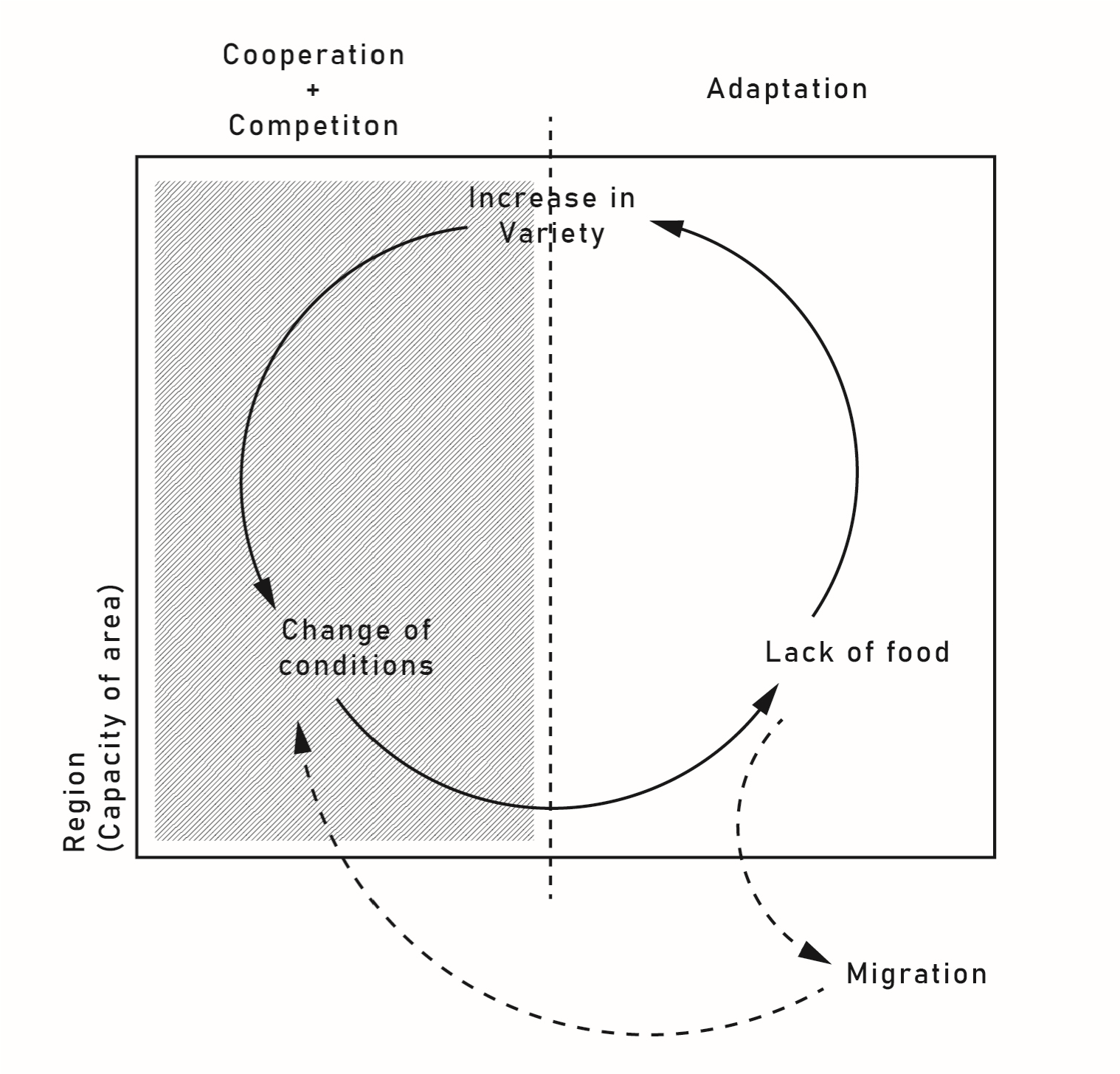
Source: author
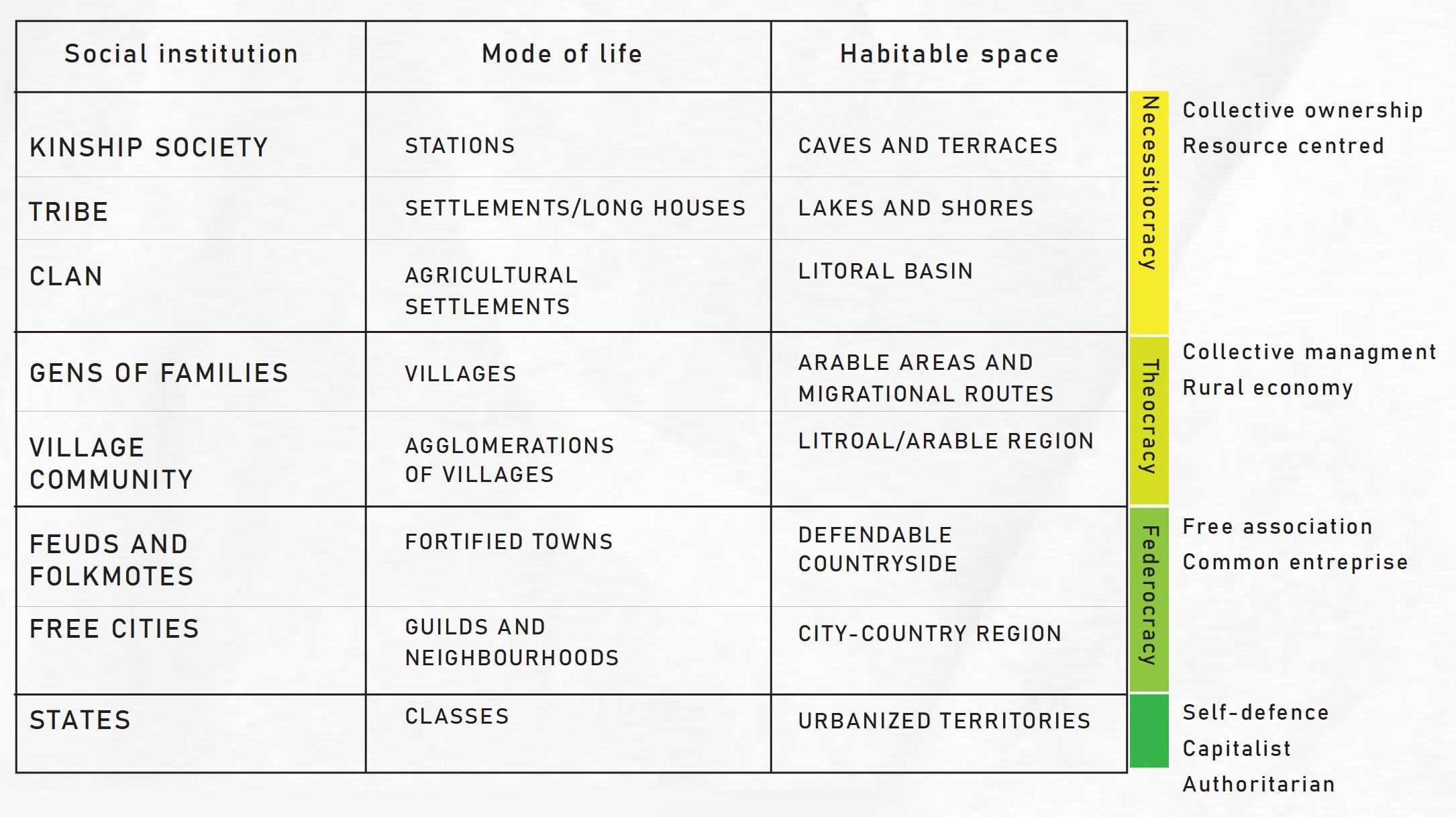
Source: author
Autonomy and self-determination in the period of the village community are enforced in clan unions, protected trade routes and non-territorial associations for skill exchange and defence. Often did the villages and smaller federations of several villages managed to fight off and maintain their autonomy from feuds and armies of kings. Their political decisions come from folkmotes, assemblies and fairs. A big part of their cultural and social life was embedded in the tradition of common meals and hunts in which wealth was redistributed. This also played a role in the self-sufficiency of the village community and first fortified towns. Village communities had a customary law that regulated the management of land and primary natural resources as commons. Land and crops were cultivated under an array of rules and costumes that defined collective responsibility and individual benefits.
On the other hand, private property and wealth were protected and inherited. Communal possession is less present over mobile property compared to life in tribes. However, large infrastructural works, maintenance of city walls, water systems and other public works happen through collective financing and labour. Kropotkin recognises village community as an evolution of cooperative spirit in clan organisation and at the same time the first social unit based on territorial conception. Examples he gives come from different geographies and contexts, proving that there is principal logic that transformed and preserved mutual aid as more than spontaneous force. As Purchase writes, “Moreover, unlike the modern provincial city, which is merely a subordinate and semi-autonomous particle of the nationstate, the medieval commune was a distinct, well-integrated and self-administrative social unit. It had the absolute “right of war and peace, of federation and alliance with its neighbours.” (Purchase, 2003)
The complexity and resilience of the ‘mutualist’ social organization culminated in free cities of mediaeval times. Here Kropotkin shows that the history of urban Europe has several parallel streams of urbanization that merged into what we simplistically call a city. Fortified villages grew into cities, some of the feudal towns freed themselves from their oppressors, some towns were found as new trading or military points or pilgrimage locations. Mediaeval ages were the time in which European cities (in these two chapters Kropotkin becomes very Eurocentric) grew, diversified and reached their most productive and creative point. New systems of land tenure and soil culture, first rudiments of industry and manufacture, fortifications and wealth accumulation were not enough to enable this.
As Kropotkin explains, it is that the centralized and authoritarian forms of governance were at that point the weakest in history. People enjoyed free association and decentralized juridical institutions, the skill becomes a precursor of liberty and mutual aid, arts and industries were developing based on mutual support and private initiative, and most importantly there was a strong connection between countryside and city. At that time countryside had an interest in investing in the development of towns, for defence, trade and manufacture. Relatively free peasants fed the city, and the well-being emerged from a sort of symbiosis of two radically different systems of living. Most of the economy was still rural, seasonal and circular. The waste of the city was sent back to villages to fertilize the land, the town maintained the roads, and in winter countrymen could find labour and fairs on city squares. Even the governing bodies were independent but cooperating in both the villages and free cities; at the same time contracting work and services from each other in the form of common enterprises. City at that time was federation of smaller units on two levels — village communities turned into neighbourhoods, and individual initiative led to guilds as federations of skilled workers. This idea of coexistence and mutual support on a regional level is at the very centre of Kropotkin’s political thought. His proposals in The Conquest of Bread and Fields, Factories and Workshops remind a lot on what is described in these two chapters of Mutual Aid.
Kropotkin’s (scientific) journalism — joyful survival in practice
As exceptional investigations by Ferretti (2011, 2017, 2019b) and Purchase(2003) show, Kropotkin’s life was a continuous exchange between scientific and political fieldwork and working with the pen. Writing for magazines and journals of the time often was his only income.
In the bibliography below is a detailed list of journals, books and articles he published. Since not all of them are relevant for the thesis what follows is a short passage through most important platforms of his writing. Between 1976–1978 Kropotkin started to write to the widespread newspaper of the Swiss community of watchmakers, Bulletin of Jura Federation. When the Bulletin ceased to exist, Kropotkin helps to start Le Revolte, anarchist newspaper reaching 2000 prints per issue. “Some of Kropotkin ‘s best journalism was written at this time. It is outstanding for its freshness, directness and simplicity. An Appeal to the Young’, reprinted as a pamphlet in 1881, was translated into 14 languages in Europe alone and was distributed worldwide.” (Purchase, 2003). Kropotkin wrote the largest number of his articles — more than 60 — for Le Revolte last published in 1913.
Most of his political and social commentaries were published here, often translated in English and other languages Le Revolte changed the name for Les Temps Nouveaux in 1899 under the political pressure. Kropotkin continued to write for them after he exiled himself to London. From that point, begins the richest period of his journalist and propagandist activity. With Charlotte Wilson, he started journal Freedom in 1886 that became the primary medium to propagate his anarchist ideas and is the project that outlived Kropotkin and is nowadays published online and still a source of relevant anarchist dialogues. From 1886 until his exile to Russia in 1917 Kropotkin was publishing approximately 5–8 articles per year in Freedom. Many of them were observations on the geopolitical situation in Europe
and Russia, but as well as lengthier pieces on land ownership and production, rural social movement, economics and reorganization of production, revolutionary propaganda etc. With Freedom Kropotkin created a solid base of texts explaining both philosophical and pragmatic relation of anarchism to other aspects of life and politics. The journal continued to be published even during the Second World War as War Commentary. Especially interesting for this thesis is that many urban planners and geographers were involved, wrote or referenced to articles in Freedom in the first half of the twentieth century. In the second half, this interest encompassed more architects and tenant rights activists. One of them was Colin Ward who remained editor in decades after the Second World War, and for whom Freedom was a platform of engagement with the anarchist movement in Great Britain. In Britain Kropotkin extensively wrote for one more journal. With more scientific and less radical readers, The Nineteenth Century was Kropotkin’s place to publish geographical works, and more comprehensive researches and conclusions from social and environmental fields. Ferretti’s (2017) investigation in the history of Kropotkin’s relation to his prominent editors, John Scott Keltie and James Knowles, shows that this was Peter’s primary source of income, but also his main social network through which he purposely reached to new audiences. With his writing, he managed to become respected in the broader circle of British and international intellectuals and scientists. By addressing relevant scientific topics of that time like Malthusian, progressivist and Darwinist discussions, Kropotkin managed to introduce political issues to a new milieu of readers and promote anarchist ideology. During 36 years that he wrote relatively continuously for The Nineteenth century, Kropotkin built a body of articles that he recollected in his most famous books: Fields, Factories and Workshops (1898), Mutual Aid (1902), Modern Science and Anarchism (1903), The Great French Revolution (1909) and Ethics (1921).
As an example of the relevance of his articles for the development of his more significant sets of ideas, this chapter will be concluded by the analysis of one of his pieces: The industrial village of tomorrow, that is published first in the Vyestnik Promyshlennosti, in June 1884 and then later translated in The Nineteenth-Century, in 1888. This article presents the essential premise of the book Fields, Factories and Workshops. The villages of Europe and Russia are depopulated due to the development of large industries that made impossible for peasants to survive from small scale agriculture. The result is an increase in production and profit but also an immense amount of population that ended living in misery in cities growing out of control.
However, Kropotkin decides to study over-looked and underrated, branch of industries which are described under the names of rural industries, domestic trades, and petty trades. These branches survived the industrial revolution and urbanization due to the inventive genius of the masses: Cooperative and resilient communities that knew how to self-organize maintained their market and costumers and adapted to new conditions. Observing the numbers and means of self-organization Kropotkin proves their scale and relevance is enormous, although invisible to mainstream economics and statistics due to their fixation on profit. Instead, Kropotkin claims they offer another level of product and service that large scale industrial production won’t ever be able to achieve. Geographically both petty trade and small industries or rural manufacture are distributed in all areas along the infrastructural routes, from old and deprived city centres and in the radius of large factories to suburban manufactures, small farms and rural craftsmen cooperatives. From here, he focuses on the fact that workers in these ‘invisible’ economies are used to combine their labour both in industry and agriculture. “But even amid the general misery there are oases of relative well-being, and these oases invariably appear where the workers have remained in possession of the soil and continue to cultivate it.” (Kropotkin, 1884) With this argument, Kropotkin derives a call for integration of agriculture and industry on a larger scale as a cure the illnesses of mass production and alienation of peasants from the land. This idea will become a precursor for his proposal of agro-industrial region and integration of manual and intellectual labour presented in his following books The Conquest of Bread (1892) and even more in Fields, Factories and Workshops (1899).
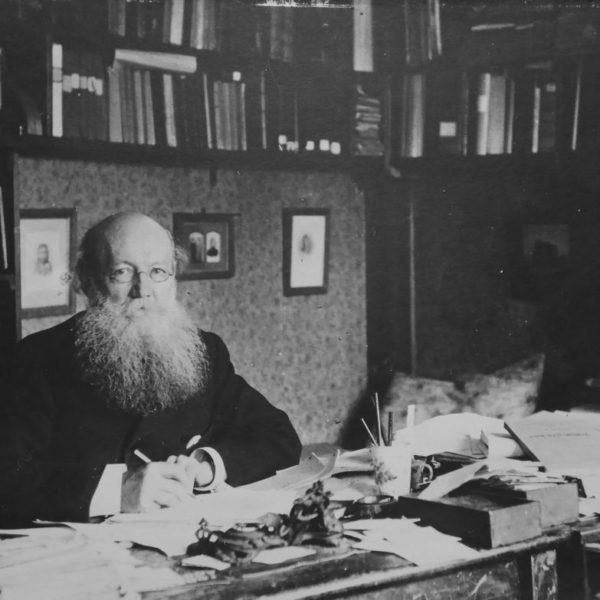
Source: http://kropotkin.ru
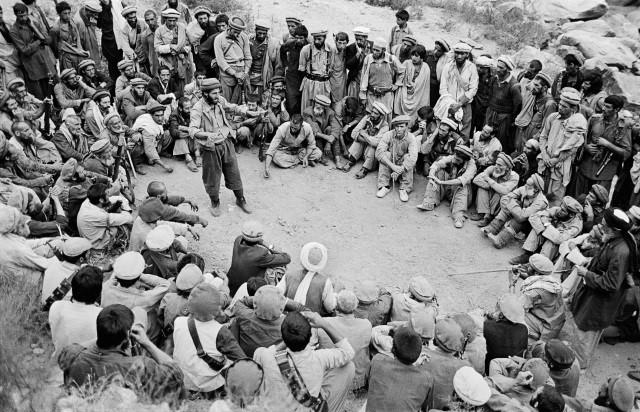
Source: https://anti-imperialism.org/
“The French peasants, overburdened as they are with taxes and mortgages, are compelled to seek an additional income in industry; their lads and lasses are thus ready to take work in the silk or ribbon manufacture, however low the salaries. But their homes being scattered in the country at considerable distances from the factory, and the hours of labor being long, they are mostly compelled to stay in barracks at the factory, and to return home only on Saturday. On Monday, at sunrise, a van is sent round the villages to bring them back to the looms. In this way they will soon have totally abandoned agriculture, and as soon as they are compelled to settle separately from their parents they will find it impossible to live on the present low wages.” (Kropotkin, 1884)
2.2. The Conquest of Bread
A guide to post-revolution management of city-countryside relations
The following paragraph uses Kropotkin’s ‘The Conquest of Bread’ (1892), to underline an argument for abandoning the state and prioritizing the city-region and its surrounding (the urban-rural region) as a spatial subject of the anarchist transformation. The work of Kropotkin is here used to clarify the anarchist transformation as a process of a) fusion of rural and urban territories, b) integration of agriculture and industry and c) reorganization of resource management, primarily food. It is in the centre of Kropotkin argument that the power of the society to manage and organize the flow of resources in urban regions is a foundation to urban economy and self-sufficiency. Because of this, he argues, the relation between production and consumption has to be radically changed (Oyon, 2014) and the space for this he sees in the integration of city and the countryside into a region of mutual economic dependence. The reviewed chapter exemplifies the early anarchist geographers and thinkers as precursors of what today challenges urban political ecology. A number of these authors, among which is Kropotkin, in late 19th century contrasted the city approach to social transformation to the state-society approach, simultaneously brought to global interest by writings of Marx and Engels and other socialists. The Conquest of Bread lists a catalogue of themes organized as chapters that explain how different aspect of social life and economy is transformed after the revolution happens. Chapters problematize the production, distribution and consumption of resources, goods and social relations, each to be reorganized once the revolution turns the tide. He recognizes revolutions mostly fail when, after the initial burst of collective social force, they do not manage to ensure accessibility to basic resources and services. Therefore, he initiates a debate on what to do once the revolution fulfils its’ reflexive purpose, overthrowing the government. What comes next? ‘The Conquest of Bread’ is published originally in Paris, during 1892. It is his less known book on political theory that includes analysis of spatial relations. Together with Fields, factories and workshops (1898), it delivers Kropotkin’s proposal for integration of city and countryside into the agro-industrial region of freely associated communes.
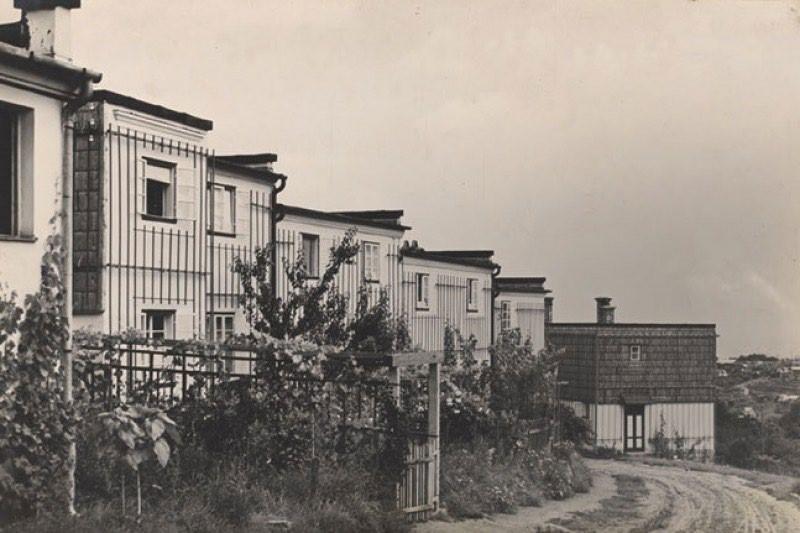
Source: https://www.werkbundsiedlung-wien.at/hintergruende/siedlerbewegung
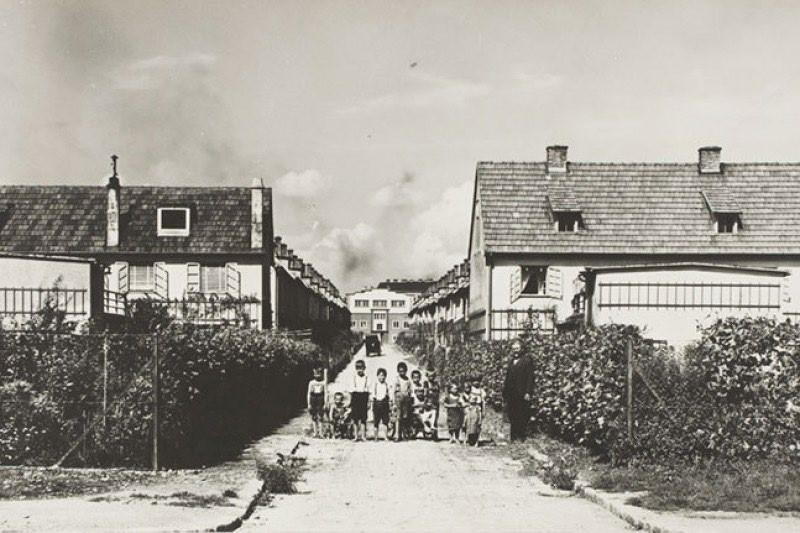
Source: https://www.werkbundsiedlung-wien.at/hintergruende/siedlerbewegung
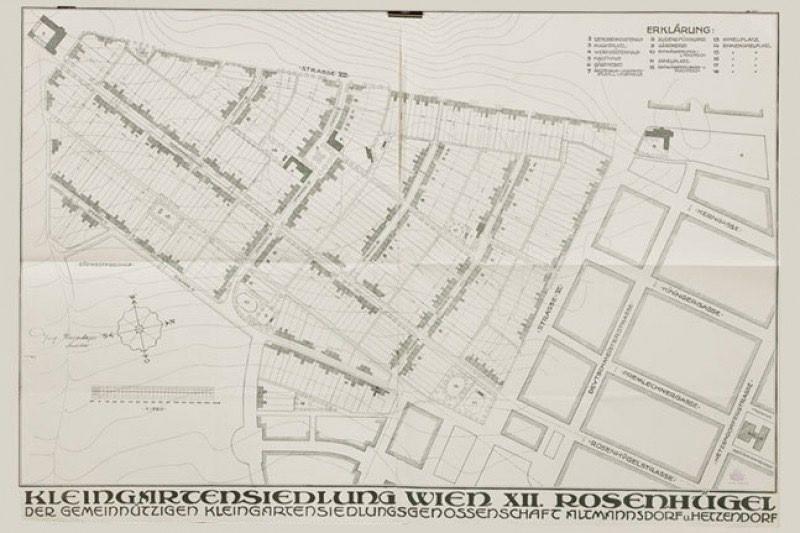
Source: https://www.werkbundsiedlung-wien.at/hintergruende/siedlerbewegung
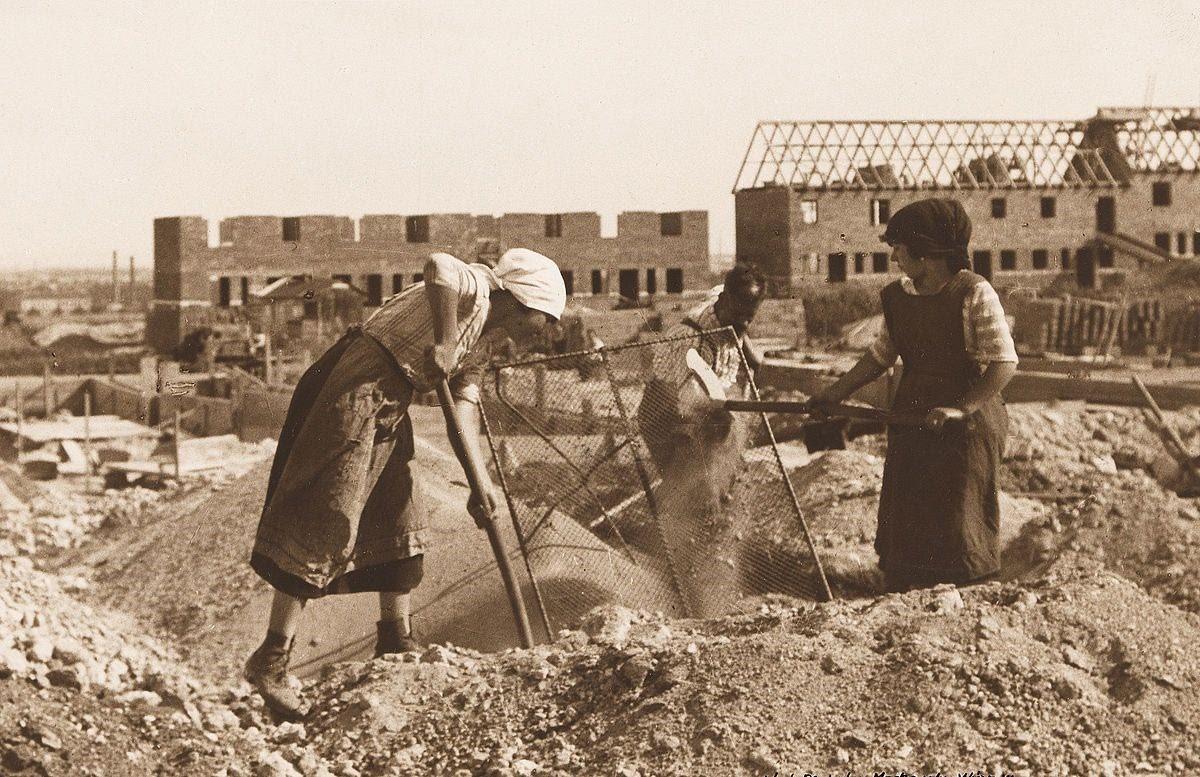
Source: https://vienna-insight.at/blog/2019/
‘Bread, the revolution needs bread!’ — Kropotkin on food
As described above, the problem Kropotkin observes is a revolution in relation to its after-life. The failure to distribute the food to the people is one of the main reasons why Kropotkin thinks that revolutions so far did not provide a genuine social transition. He bases arguments on observation of the dynamics of the food supply of three French revolutions (the one of the Republic in 1793, the one of labour of 1848, and the Free Commune of Paris in 1871). They did not miss a chance to discuss the restructuring of governance based on the various abstract principles of middle class but did not make an effort to feed the poor that remained hungry and for this turned to reactionism. The different case is, as he notes, the Commune of Paris, which lasted too short to cope with this problem systematically, although it started, it is communal kitchens on it very ends. Placing the supply of food in the centre of the conflict of classes Kropotkin describes the great industrial cities as dependent on their surrounding from where the food comes. The inability of revolutions to spread out from cities into the other towns and villages and to mobilize not only workers but also farmers and peasants are what disempowered the three French revolutions.
The revolutions, for him, inevitably start in great industrial cities. What Kropotkin smartly notices is that revolution is not only caused by unemployment, but it affects unemployment heavily. The social unrest, the occupation of factories and squares and actions of insurrection make masses jobless. The question that Kropotkin posts are how to feed millions of unemployed once the revolution stops the machines and makes thousands of jobs halt? Usual forms of solutions to this problem, like public works, food rations and semi-controlled collectivization of the property quickly create distrust because they are based on the abstract principle of equality, and not equity for which he thinks presents a real human need. The form of ad hoc urban economy that surges out of revolution patches the symptoms of the revolution. It does not provide the city with alternatives. For this reason, Kropotkin looks towards the villages and countrysides for the solution.
Where could food come from? — Anarcho-capitalism vs anarcho-communism
Kropotkin sees the economy of the city seized primarily by two phenomena, the wage labour and property. Each of the two desolate the city from the real needs of the workers. Moreover, the reinforcing them is at the top of Capitalist priorities. Therefore Capitalism continuously develops mechanisms that maintain the apparent social order. As an example with all of the French revolutions. For the Russian geographer, the way to end the Capitalism is to end the wage system and communally redistribute property: “ The coming Revolution can render no greater service to humanity than to make the wage system, in it is all forms, an impossibility, [...]. ” However, he recognizes that wage labour and property can not end without consequences. One of which is paralysis of exchange and production. Here it is to note that Kropotkin does acknowledge the market and organic management of flows of goods which does not make him a classical anarcho-communist. He is at least ambivalent in his perspective on the market and centralized economy, which will be shown in the following body of the text.
To cure these symptoms, he looks for alternatives. Interestingly enough, he does not look for alternatives only in labour division models or economic policies (like most early Marxist do). However, as a geographer, he seeks for them in ‘other spaces’ out of the city — the agrarian communes of Europe. A large part of the chapter he dedicates to resource management traditions of agrarian societies of whole Europe, from forests, woods and copses, to fields and pastures. He explains various ways in which the resources are managed communally and with a mutual agreement based on one’s own need and labour. The communities take care of resources according to the availability and reproduction cycles without even considering the property or rationing. It is what he calls natural communism. Example of same logic is water supply in cities that runs in abundance to each home. So what would happen if the water would get scarce? Probably the system of rations would be introduced. Kropotkin uses this to present an idea of collectivism that should be a ground for the food supply in the cities. The process goes two ways.
Internally the appropriation of food supply would feed the people until the machines can start working again. Simultaneously integration of labour with countryside through deliberating the land workers and small farm owners from taxes and debts would create a basis of a steady flow of fresh food. The property would be collectivized step by step. The collectivization here does not imply the state ownership but a different federative form of collective management. Here he again recalls agrarian communes present all over the world. The question posed is how to do it justly? To answer Kropotkin offers is the most profound thought in the development of his anarchist argument. The proposal of integrated distribution.
How to supply food? — The city with few bottles of wine
All revolutions cause an end to a period of industrial continuity. Communist revolution, as Kropotkin describes, for this reason, ends up in massive hunger. Counter-revolution uses these low points to regain control of the order. For this reason, revolution can not succeed without considering the most basic needs of people from the very first moment. The new system, therefore, can spring out only from immediate need. As described in the previous paragraph, a strong revolution starts with taking over food stocks. From there on the central question remains the distribution from which the further new economic relations will stabilize the new society. Nevertheless, how can distribution fulfill people needs while taking into account the limits of the resources in critical moments as well as in general? Kropotkin places the relation between consumption and production in the context of ownership. Kropotkin explains his disagreement with Marx by describing the conflict between collectivism and state-society, or the system of dispersion and the system of rations. Ultimately, this critique has as well a spatial dimension that in the following paragraph, will be clarified.
Kropotkin lays his critique of the (socialist) state in the context of distribution on Proudhon’s concept of property. Based on the priority of possession over the property (Proudhon, 1840), he
proposes a system of distribution based on localized dispersion. General socialist concept of equal rations makes sense in case of the crisis, extreme situations. Even then, the portions are not identical but are distributed according to an immediate necessity within the moment. Parcellation of equal rations to each household works in theory but in practice escalates scarcity. State-centred system, in its vast attempt to take care of everyone at the same time, can not see the details on the scale of the neighbourhood or between the countryside villages.
Therefore, the system of distribution should be first based on free access to all the products but as well on localized dispersed distribution following the lowest scale of information and decision making possible, and as connected to production as possible. It is the core difference of collectivist commune that Kropotkin develops and state-society of Marxist thinkers. The dependence of the city in the countryside is central to the economy of a federation of communes. The chapter Food of The Conquest of Bread’ just superficially explains the practical logic of this system. A few years later, it will be fully developed in the book Fields, factories and workshops from 1898 (Kropotkin).
Who gets to eat? — Collective justice vs individual freedom
In an inductive argument, Kropotkin explains the principle of post-revolutionary communal kitchens. Here he describes the communal kitchen not as a military barrack or hospital restaurant where people come for their portion of food and eat it together but as a place that considers making food together and therefore having a part in production-consumption relation. The food is taken home by citizens instead of eaten in large dinners. Individual freedom in diet and lifestyle choices should be considered in cooperation with collective justice. Generally, the collectivization should come had to hand with dispersion. The question of food brings Kropotkin’s thinking to a much bigger image of social relations and labour integration in post-revolutionary life. On the scale of relations between the city and countryside, Kropotkin believes cooperation would ensure responding to the immediate need of the population during and after the revolution. The cities and manufacture workers would get food from countryside’s agricultural workers, and their fields deliberated from burdens of taxes and administration and another way around, the villages and small towns would get the goods and products from the cities in exchange. It, in the end, would end the dependence of the cities on international import and imperialist politics. This type of relations would be essentially territorial and resource-driven. The agro-urban region, as Kropotkin considers it is a spatial subject of the economy that leaves the state out of the count.
Where Marx sees labour division between simple and complex labour, and it is the ability to adapt to a new condition of post-revolution everyday life, Kropotkin sees the seed of a new urban economy. Kropotkin implies that to realize the stable and sustainable economy the agriculture and industry have to merge: “We must return to what biology calls ‘the integration of functions’ — after the division of labour the taking up of it as a whole — this is the course followed throughout Nature” (1892). To this extent, we can consider Kropotkin’s ideas ecological. The labour dynamics should be grounded in resource management and ultimately be in cooperation with natural processes. He writes more on
how it is to be done in the rest of his book, in chapters 15 The Division labour, 16 The decentralization of Industry, and 17 Agriculture. In short, the mutual support or the ‘ Spirit of Organization’ spreads as well in dispersion, based on a necessity, not the portioning of rations. Kropotkin expects the revolution to happen transnationally in large industrial cities like Paris, London, Budapest, Berlin. The Revolution is somewhat simultaneous in different industrial capitals than in one whole country in all scales of settlements. He imagines downscaling of that kind of pan-European revolution from big cities to smaller towns and villages through mutual cooperation that would support smaller communities to overthrow the power of landlords and landowners. This form of a dispersion of mutual support ideally takes the shape of the Federation that spreads over the borders, and that internally creates agro-urban regions of autonomous communes.
Conclusion — How anarchists reterritorialized the economy?
With Kropotkin’s proposal, the integration of industry and agriculture as a complementary aspect of production-consumption became intrinsic to anarchist geography. However, the idea of a free association of town and village was grounded earlier in anarchist circles. James Guillaume already sounds these ideas in his 1876 essay Ideas on the organization of society. Guillaume was British anarchist, member of the Jura Federation in Switzerland and founder of Anarchist St. Imier International. In the essay he also drafts a post-revolutionary society based on an anti-authoritarian association of workers and collectivization of property. “ Whatever items are produced by collective labour will belong to the community, and each member will receive remuneration for his labour either in the form of commodities (subsistence, supplies, clothing etc.) or the currency.” In the essay, Guillaume as reasonably considers an autonomous anarchist region of the city and its surrounding as a core spatial unit of the post-revolutionary society. This region is organized in a federalist way with collectivized property and depends on cooperation as an internal driving force of economic relations. “On the other hand, in large-scale agricultural operations, where a great number of workers are needed to farm vast areas, where coordination and cooperation are essential, collective labour will naturally lead to collective property An agricultural collective may embrace an entire commune [autonomous regional unit] and, if economically necessary for efficiency and greater production, many communes.” The essay has a significant difference to Kropotkin’s proposal. While Guillaume argues the commune as necessary for the advancement of agriculture, Kropotkin recognizes the opposite dynamic, the importance of the production of food, and it is just distribution, for the organization of commune. The relations of redistribution can not be based on an ideal model of the economy for Kropotkin. Instead, they stream out of the flow of goods and resources between their places of production and places of consumption that have a bilateral impact.
In The Conquest of Bread, Kropotkin discusses bringing the countryside back to the city in mutually dependent and reliable relation (Oyon 2011) Kropotkin’s ideas have a sound influence on the anarchist tradition in reconfiguring the space-society relation. The shift from statist to relative territorial space of urban region is in apparent contrast with Marxist state-economy. The Conquest of Bread relates food to hunger, the village to the city and industry to agriculture placing his ideas close to contemporary discussion on the politics of urban ecology.
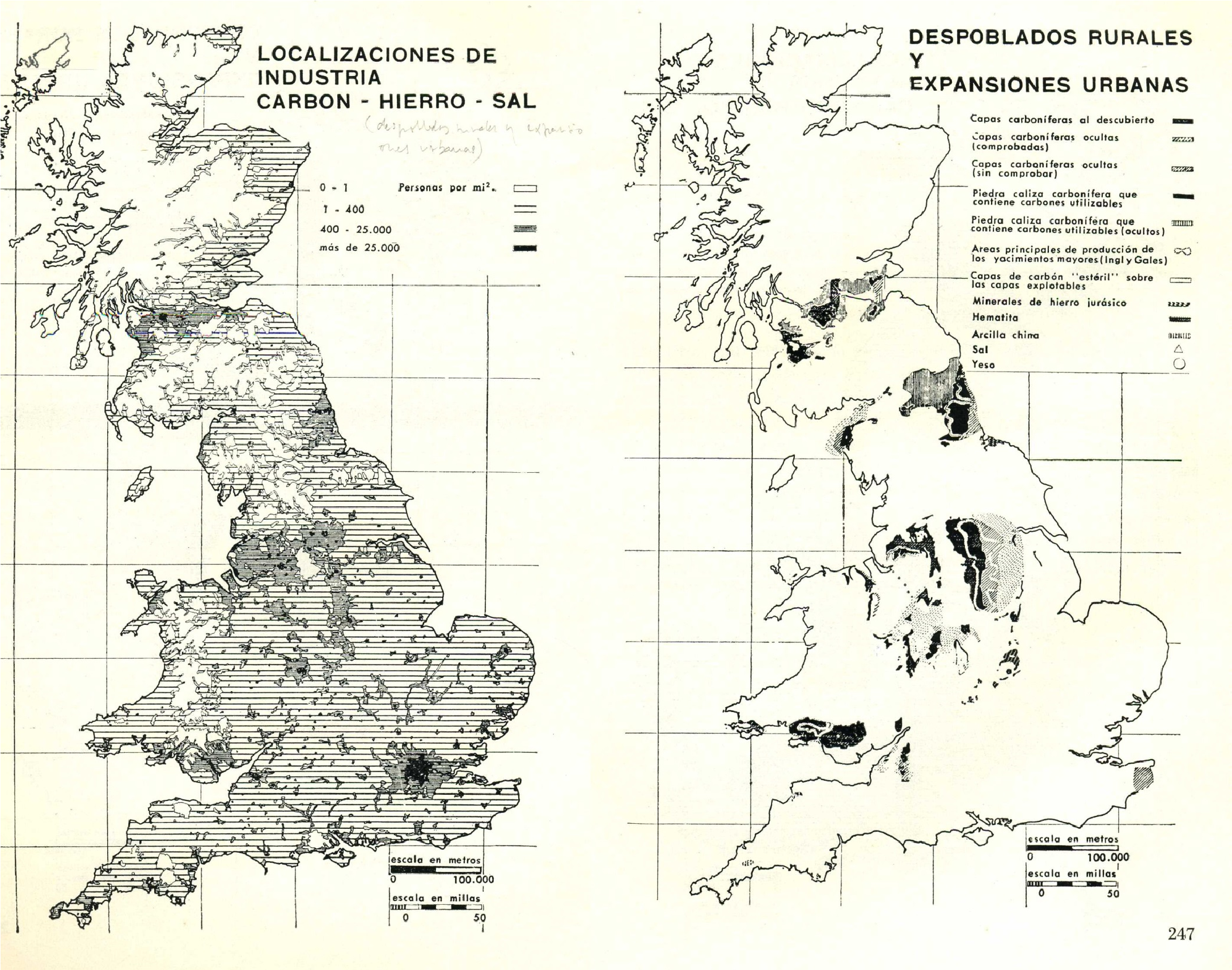
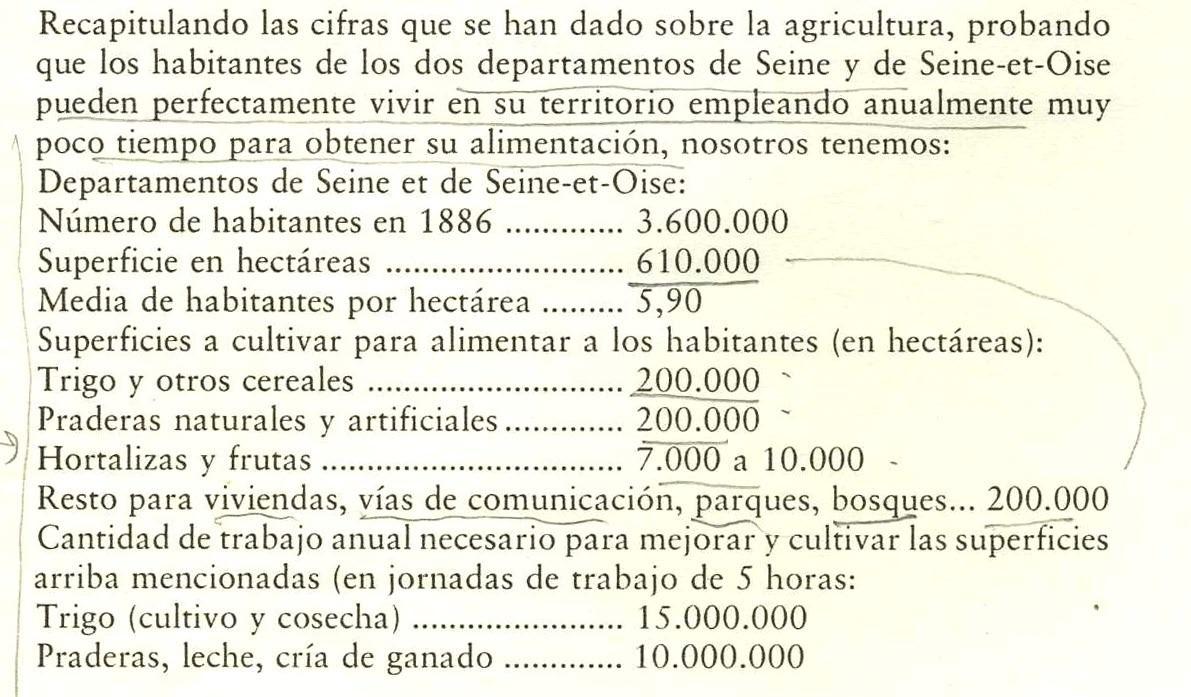
Source: authors][Maps of land use in Britain and data on food production from Fields, Factories and Workshops
Source: prof. Jose Luis Oyon
2.3. Fields, Factories, Workshops
The triangle of geopolitics, economy and technology
Although not chronologically the most recent the book Fields, Factories and Workshops is logical to be presented as last in the triptych since it is the most technical, detailed and specific study of socio-economic relations and their implications for territory by Kropotkin. Published in 1899 in the USA, the book is, like Mutual Aid, a collection of essays mostly published in the journal the Nineteenth century. The Fields, Factories and Workshops is structurally almost a guide for transforming large territories from nation-market driven competitors into cooperative regions that rely on their local resources and labour. It is a triangle of geopolitical, economic and technological observations painted with techno-optimism and positivism into a comparative study of European nations and cities. Even today, this type of writing is still rare and equally powerful. I would point to the examples of anti-statist geographers Ruth Kina and Keller Esterling. While Mutual Aid tackles problematic of social Darwinism and openly debates Wallace and Huxley, Fields, Factories and Workshops is a response to increasing attention to Malthusian catastrophe. The British political economist and cleric Sir Thomas Robert Malthus practically 100 years before, in his book An Essay on the Principle of Population (1798) □ discussed population growth in relation to the development of agriculture and its capacity to feed global nations. He saw an inevitable decline in progress as a necessary outcome of ‘overpopulation’. His ideas were very influential to Darwin and Wallace and are still debated, especially in economist and environmentalist world. Kropotkin essentially disagrees with Malthus and this book is an elaboration of this counterpoint. “He argued, that through the intelligent use of the land in both urban and rural contexts, combined with innovative technologies and practices it was easily possible to feed an urbanised, industrialised and densely-populated country like the UK.”” (Purchase, 2003). In presenting this, Kropotkin gave his probably most erudite contribution to urban planning. From the perspective of ecological urbanism, the Fields, Factories and Workshops could be seen as Kropotkin’s analysis on the possibility of self-sufficiency in the context of the industrialised, increasingly connected world. This is a still present discussion, especially in circles of ecological urbanists.
Fields, factories and workshops are built upon similar arguments in his article The Industrial Village of Tomorrow (1884). As he there explains, the rise of mass industry emptied the fields and brought thousands to live in cities in poverty and misery. On the other hand profits of the privileged minority, landlords, industrialists and capitalists skyrocketed. Europe has been at the forefront of this galloping process while the rest of the world follows. It is important to note that Kropotkin is not anti-technological; on the contrary, he is optimistic about the future of technology. He is explicitly saying that we should not fix ourselves on denying or attacking the situation but instead think of the ways how to use the benefits of it to construct more just future. The only possible way to tackle the social and spatial imbalances is to redistribute the wealth based on the new territorial relations. When proposing how, he reaches for the same argument as in The Industrial Village of Tomorrow, restoration of economic
relations. Restoration through enforcing the solidarity and cooperation between the countryside and the city. The new economy of an egalitarian self-reliable society, therefore, demands new territorial divisions, new geography. This new economic geography of the agro-industrial region is what Kropotkin tried to define since the mid-to-late 80s with the publication of a series of three articles for The Nineteenth Century, later collected in The Conquest of Bread. The book, Fields, factories and workshops is the final chapter of this anthological effort of political theory (Oyon, 2014).
What he proposes is straightforward, instead of developing further the division of labour we should integrate the labour: “After having divided the work, integrate: such is the march followed by all of nature” (Kropotkin, 1898). The radical redistribution of activities based on the criticism of the division of labour that he proposes involves integrating agriculture and industry at the national, regional, urban and individual levels (because the citizen will have to become himself a farmer and industrial producer in an alternative way). Kropotkin did not deny that the division of labour benefited the rich or that it was itself the bearer of higher productive returns; what he questioned was whether such specialization of occupations could personally enrich the life of the individual. It is the variety of occupations and their integration and not the specialization that enriches both. (Oyon, 2014)
He seeks the answer through five chapters that although originated from journal articles, make a continuous line of argument. In the first he analyses global market and industry demonstrating problems of the industrial progress and dilapidation of rural areas. This chapter, in a sense, is one of the early critiques of globalization. The second discusses the potential of agriculture to transform into one side of a mutually supportive system of city-countryside integration. In this chapter, he uses a lot of historical examples and land tenure analysis to directly discredit Malthus. The third chapter does the same with the small industry and local trade. It is mostly based on the previously mentioned article on Industrial Village enforced with notes on global market failures and more elaborated critique of massive industrial production and type of economies it produces. The chapter enters specifically into case studies of petty trade of the United Kingdom, France and other countries.
The final chapter speaks of the integration of labour on the most immediate scale. The workers are here considered as both manual and intellectual labourers that enjoy the fruits of their own agriculture while occasionally or seasonally working in small factories and manufacture. With this last chapter, Kropotkin rounds his argument on the integration of industry and agriculture both as a territorial and political concept that renders State and monopoly of mass industry obsolete.
Decentralization of Industry
The first chapter of the book is written as an almost exciting political pamphlet or call to action and at the same time meticulously detailed research on industrialization that uses ‘statistical data and massive private evidence’ from different countries. Kropotkin opens straight at the point, explaining that after the division of labour, the future will inevitably bring the integration of labour — like in nature. In the style of his argument, we could recognize the same belief in the biological character of the society that is present in Mutual Aid. The whole chapter is a very detailed critique of the global market and the evolution of international trade as both inefficient and unnecessary. Kropotkin recognizes that a single criterion of maximizing profits makes economists blind to other negative processes, like depopulation of villages, the decay of innovation and domestic economy, and stagnation of wages. The chapter goes in specific details of local trade in, among others, France, Britain, Germany, Russia. comparing the structure of labour force, speed by which the country is being industrialized and the level of selfsufficiency it is reaching in that process or what he calls ‘the consecutive development of nations’. After recognizing some of the benefits of this globalized and techno-optimist competition, Kropotkin calls for the evolution of the industry to enter the next phase: “The needs of human agglomerations correspond thus to the needs of the individual; and while a temporary division of functions remains the surest guarantee of success in each separate undertaking, the permanent division is doomed to disappear, and to be substituted by a variety of pursuits — intellectual, industrial, and agricultural — corresponding to the different capacities of the individual, as well as to the variety of capacities within every human aggregate.”
In following paragraphs Kropotkin intelligently deconstructs overproduction, cheap labour and importance of domestic trade building an argument on inefficiency of dependency on import. Also he recognizes uncontrolled urbanization as complex process that is caused by dilapidation of agricultural land, land tenure policies and taxations that drive peasants into cities where children and hungry work for stagnant wages and as such competing on global market. Kropotkin highlights those countries that are ‘behind’ in the process to show how their domestic production, more rooted in local skills and agricultural traditions, regional distinctions and mosaic image of labour structure proves more resilient and even more profitable, or at least comparable with the imperialist large scale exporters. Briefly describing the conditions in railway construction, mining, domestic industry and woollen trade Kropotkin soon arrives to the argument that these thrive in the areas where there is an integration of industry and agriculture — more commonly in rural region with small towns and smaller agglomerations of industry than in large urban agglomerations.
Evolution of agriculture and rural industries
The two following chapters are the most debated parts of the book. With the chapter, The Possibilities of agriculture Kropotkin aims to propose a direction for preserving agriculture as a strong economic driver next to the mass industry that was spreading over its back throughout the whole world. On one level, the chapter is a critique of ‘industrialization’ of agriculture. At the same time, it is an essay on self-sufficiency carefully using statistics to illustrate basic relations of capacity, production and labour intensity. Using these Kropotkin explains the limits of extensive farming, international trade, and monoculture or even monoscale agriculture. Most of the chapter is dedicated to the analysis of the national agricultural production, amount of productive land, what it manages to produce and in what amount it satisfies the local needs. A relatively simple discussion on agricultural self-sufficiency is supported with up-to-date statistics that are occasionally contextualized to national politics, labour and industrialization. Pointing to problems in land ownership, lack of investment and depopulation, soil exhaustion and mismanagement Kropotkin urges for rethinking of agriculture in a new innovative frame. “Instead of extensive, inefficient and environmentally damaging farming methods, Kropotkin, like many environmentalists today, advocated organic kitchen and market garden culture (horticulture) in and around village settlements along side traditional mixed field culture (agriculture).” (Purchase, 2003) Examples he takes are French gardening or culture maraichere, homegrown fruit gardens, gardeners of Jersey and Guernsey and their greenhouses, experimental farms in USA and Canada and agricultural co-operatives. Special attention is given to neighbourhood gardens in London, central England, Brussels, Paris and other less big towns. Kropotkin claims that in the future, they will grow more important since they provide not only food but also a connection to nature and improve quality of life. “It is precisely in the most densely population parts of the world that agriculture has lately made such strides as hardly could have been guessed twenty years ago. A dense population, a high development of industry, and a high development of agriculture and horticulture, go hand in hand: they are inseparable. ” Colin Ward later picks this argument in his essay Green Cities.
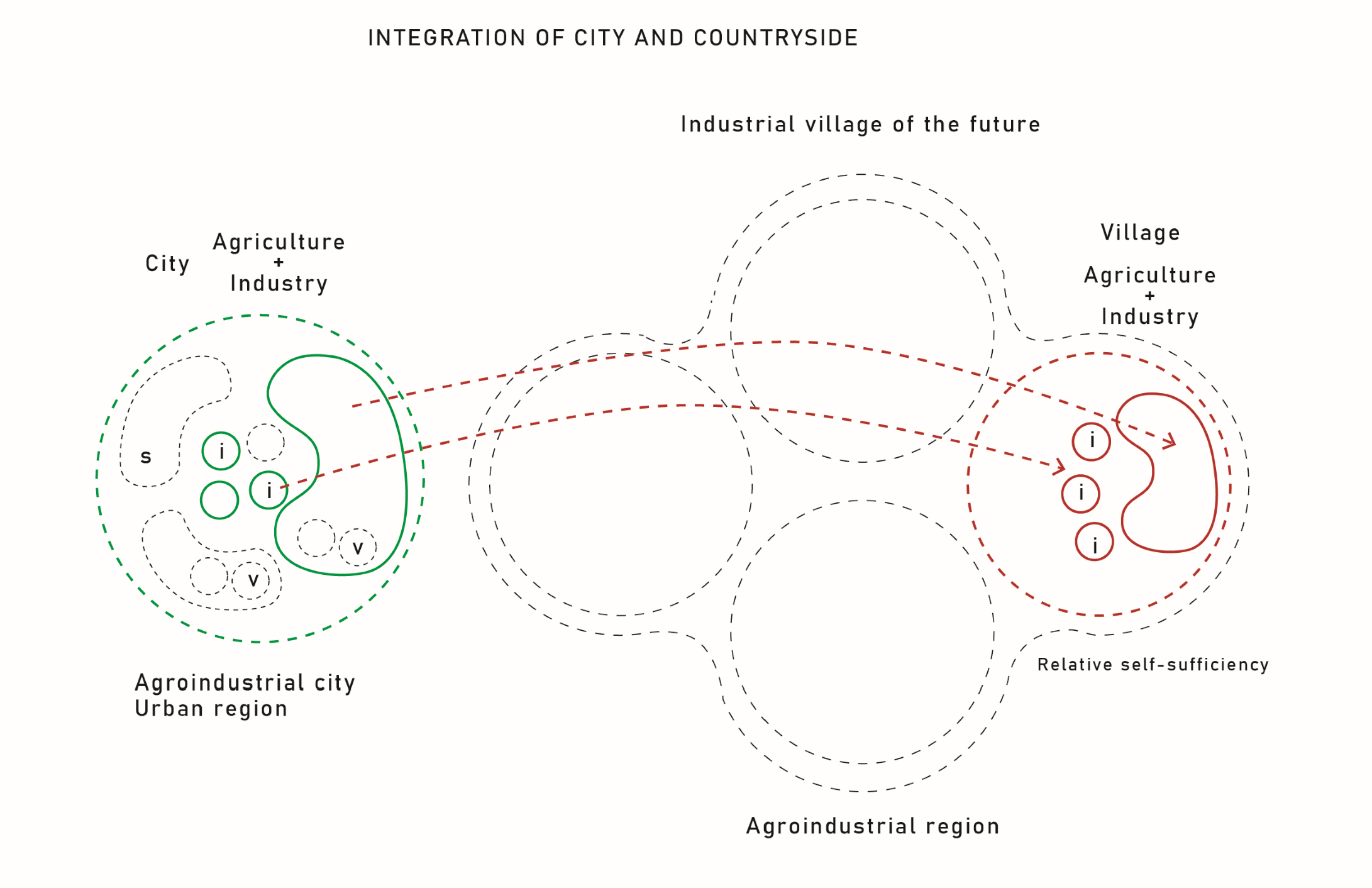
Source: authors
Following chapter is based on the chapter previously published in The Nineteenth Century. Chapter III: Small industry and Industrial Village is Kropotkin’s defence of petty and domestic trade, local production and small industries. More importantly, it is the most ‘geographical’ chapter in which we first time can see the outlines of his agro-industrial region.
Throughout the chapter similarly like in the article previously explained Kropotkin argues that under strong pressure of mass industry the anonymous cooperative genius of masses managed to preserve strong bonds between local use of resources, skilled and innovative labour and small scale trade. If every region had the largest possible variety of industries, types of agriculture and multiskilled labour force, the economy would work in favour of social equality and self-sufficiency on many scales. He describes different examples, such as peasant and workers cooperatives, petty trade protection schemes, family businesses and more. The final aim, in words of Oyon, is, that within each individual and each human aggregate-within each country, each region, city or town-there should be no specialization but integration. A combination of agricultural and industrial activity as two interdependent activities should result in the integration of the countryside and the city.
Integration of manual and intellectual labour
The final chapter of the Fields, Factories and Workshops zooms into the smallest scale of integration of labour: A worker him/herself. Although most detached from the situation of the labour market at that time, most idealistic we could say, this chapter is quite pliable in its argument, since it rightly recognizes that since the industrial revolution, the specialization of jobs was the only direction of progress. Throughout the whole period, there were resistances and demands for substantial change. Part of our generation named the precariat (Standing, 2011) is still fighting for the change in perception of labour specialization as a life long dedication. Kropotkin uses his standard method.
“The two sister arts of agriculture and industry were not always so estranged from one another as they are now. There was a time, and that time is not so far back, when both were thoroughly combined; the villages were then the seats of a variety of industries, and the artisans in the cities did not abandon agriculture; many towns were nothing else but industrial villages. If the medieval city was the cradle of those industries which bordered upon art and were intended to supply the wants of the richer classes, still it was the rural manufacture which supplied the wants of the million, as it does until the present day in Russia, and to a very great extent in Germany and France. But then came the water-motors, steam, the development of machinery, and they broke the link which formerly connected the farm with the workshop. Factories grew up and they abandoned the fields. They gathered where the sale of their produce was easiest, or the raw materials and fuel could be obtained with the greatest advantage. New cities rose, and the old ones rapidly enlarged; the fields were deserted. Millions of labourers, driven away by sheer force from the land, gathered in the cities in search of labour, and soon forgot the bonds which formerly attached them to the soil. And we, in our admiration of the prodigies achieved under the new factory system, overlooked the advantages of the old system under which the tiller of the soil was an industrial worker at the same time. We doomed to disappearance all those branches of industry which formerly used to prosper in the villages; we condemned in industry all that was not a big factory” (Kropotkin, 1889)
He recognizes that historically manual and intellectual labour were joined, same people were landworkers and inventors, moreover, education aimed at combining skills, teaching generations basics of philosophy, poetry and science. With the specialization of labour came division into intellectual workers and manual workers, and they are increasingly separated. “The human individual must, Kropotkin believed, be regarded as a whole, as having a large variety of capacities, talents and needs and equally capable of both theoretical and manual endeavour. The arbitrary separation of the human individual into mind and body and the theoretical and hierarchical ordering of mind over body had divided society into two classes; those of “brain workers” and “manual workers. ” (Purchase, 2003) Kropotkin believed that the humans are capable of doing both intellectual and manual work, that they are even inclined to do so, and that monotonous, repetitive labour in a factory is dehumanizing, anti-ethical. The idea of agro-urban landscape in which many small functions are integrated and operating cooperatively on a daily basis will make individuals develop a large variety of skills and abilities. In this sense, the chapter describes a form of bottom-up progress and innovation from the smallest scale that organically spreads within society. Labour, when organized around such settings, would have a different, deliberating character. However, it would also need a different landscape around which it organizes. Not a factory or a single field but a form of a socio-natural ecosystem which integrates agriculture with industry, countryside with town and nature with society. Purchase (2003) called it biologistic social environment: “The individual city or town, as well as the acephalous federation of them, were to function as a harmoniously co-operating natural system rather than the well-integrated circuit.”
3 Colin Ward (1924–2010)
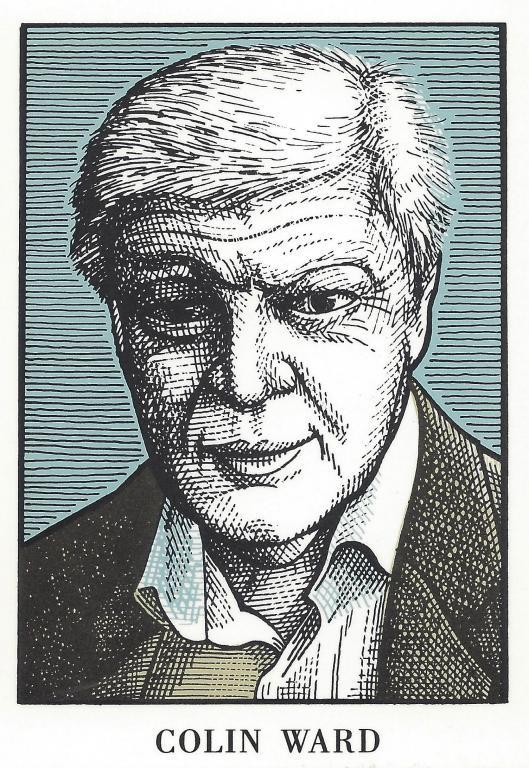
Illustartion by Clifford Harper
Source: https://libcom.org/gallery/anarchist-portraits-clifford-harper
Colin Ward is a British anarchist, architect, historian and educator. In many ways a pioneer of socio-political research of history in Britain and topics such as housing, squatting, nomadic lifestyles, weekend resort culture, self-construction, do-it-yourself ethics, self-governing urbanism, a critique of administrative and bureaucratic systems, ecological urbanism, the relations of the village and the city, the child and childhood in the city and the countryside, vandalism, unemployment, anarchism, mutual aid among the citizens, the economy of commons, and many more. The list of his interests is really impressive. Versatile, tireless and empathetic anonymous, Ward, in fact, presents a whole generation of ‘invisible’ or perhaps undiscussed anarchism. As he was addressed in one text by Pietro Di Paola — A Man Who Knows His Village (2011), Ward had a different approach to anarchism, less revolutionary though still closely tied to direct action, do-it-yourself ethics and mutual aid. His premise was that although we cannot draw a route to the utopia imagined by classical 19th-century anarchists, we have the task as anarchists of discovering those routes to a freer society that are more accessible and realistic.
Colin Ward was born in Wanstead, Essex, in August 1924. As a teenager in his native Ilford, he was involved in direct actions against Mosley, the leader of the British fascists. Not to impress you too soon, it was about sticking his posters with stickers. After leaving school at the age of fifteen, Ward worked as a draftsman for an architect until he was recruited in 1942. It happens that the moment in Colin’s life when he became an anarchist is during his time in the British Army at the height of World War II. The 16-page Berneri’s pamphlet on Kropotkin and federal regionalism motivated him to subscribe to War commentary, the war version of the anarchist Freedom magazine founded by Piotr Kropotkin. During the war, as a young soldier, he sent his first texts for publication in the same magazine (Di Paola, 2011). In 1943, he joined the Freedom Press Group, then the most active anarchist publishing organization in Britain. Because of his activities, the commanders send him to remote military camps which he refused after which the military court punished him for disobedience, although the subtext was punishment for ties to anarchists from Freedom Press. The then editorial board of Freedom Press went illegal after the raid, and the military police included Ward in the list of their correspondents. Magazine editors were arrested, and intellectuals such as George Orwell, Benjamin Britten, Bertrand Russell, and Herbert Read formed the Freedom Press Defense Committee. The editorial board is accused of acting against the army and internal treason. In 1947, at the end of the war, Ward became the editor of the magazine War commentary or Freedom. The rest of the editorial board consisted of former defendants from the London raid, since then his close friends: Marie Louise Berneri, Vernona Richards and Phillip Sansom. They were joined by one of the most striking anarchists of the 20th century, George Woodcock. Colin Ward remained an editor until the 1960s. During this period, he developed his vision of anarchism through a series of articles, mostly in the context of other topics such as urbanism, housing, workers’ organization, ecology and education. From 1947 to 1949, Freedom Press experienced some of its brighter releases, and Ward will say in his memoirs that working in that collective was a real pleasure because it was the right group for affinities, well organized, but also very friendly. Unfortunately, in 1949, Woodcock left the group and 31-year-old Marie Louise Berneri died. Ward and the remaining editors wanted to connect Freedom with the real problems of post-war Britain, they insisted on bringing anarchism closer to new topics related to the progress of technology, science, sociology. They are interested in progressive pedagogies, agrarian communities, communes, nudism, which is why other British anarchists call them out for moving away from the labour movement and the lower social classes. Ward responded that the task of anarchists is to make an effort to explain the difference between society and the state and that resistance movements, direct action, and mutual aid exist within all communities regardless of the repressiveness of the system within which they exist. Colin Ward advocated recognizing existing practices among people who organize themselves to, for example, provide housing. So he writes about the first squatters, homeless families who entered empty houses around London in 1945 and 46, describing their work on the principles of direct action and cooperation. Ward criticizes the dogmatic approach of the 19th-century anticipation of revolution and begins to advocate a more pragmatic form of anarchism, closer to everyday life and existing forms of social action by and against the state.
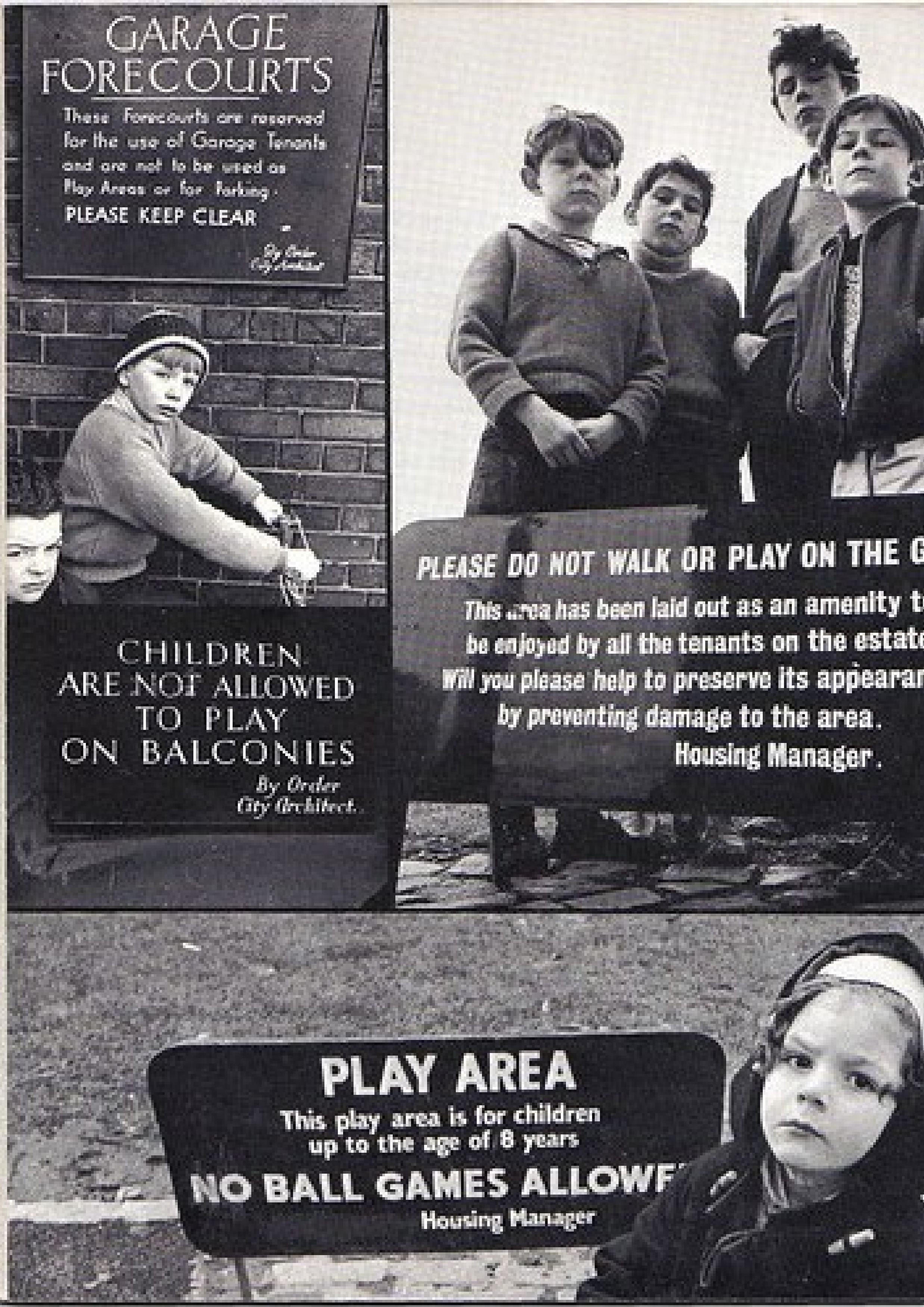
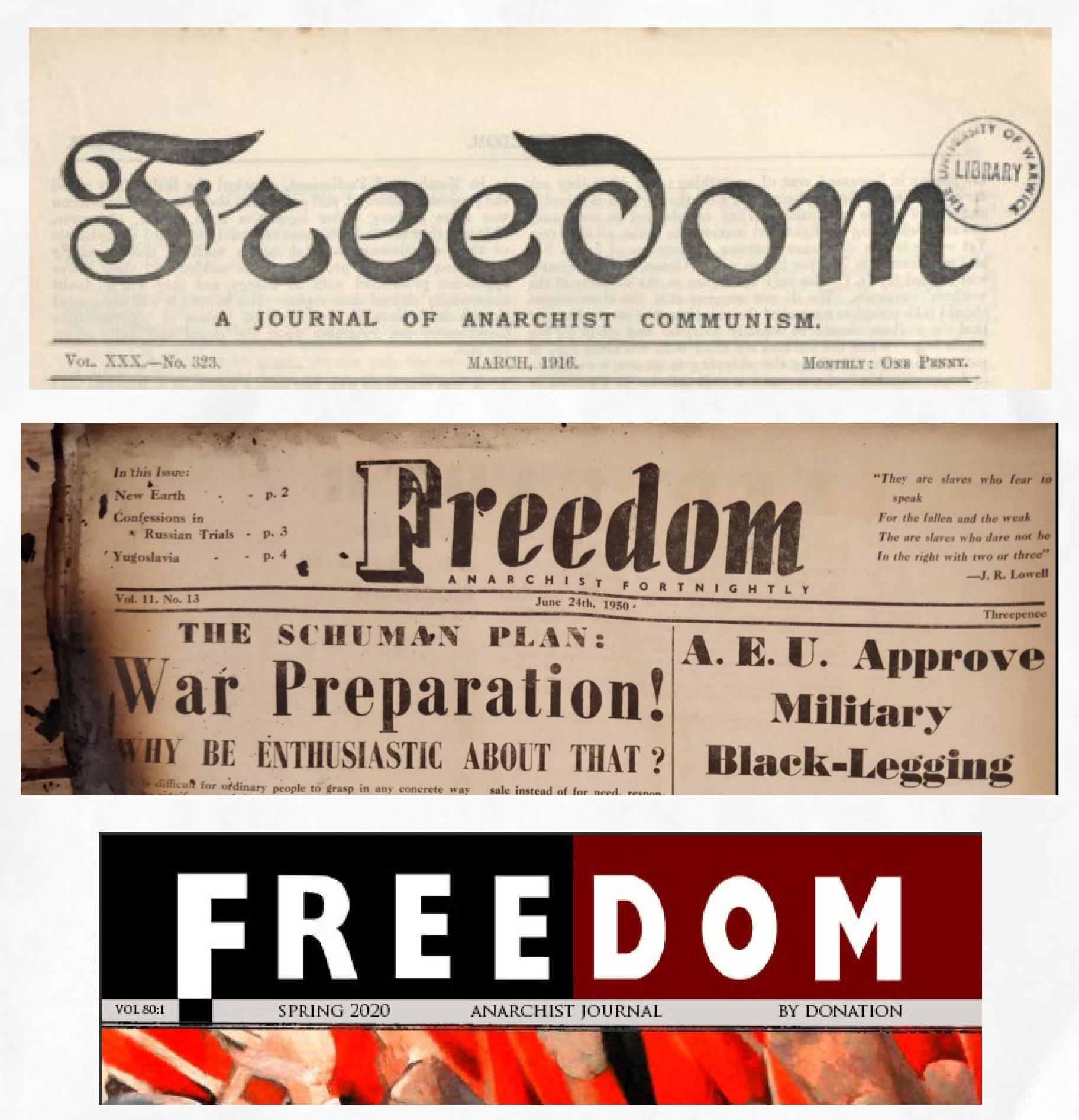
Kropotkin founded Freedom in 1886., Ward was editor during 1950s and 1960s
Source: Freedom online archive
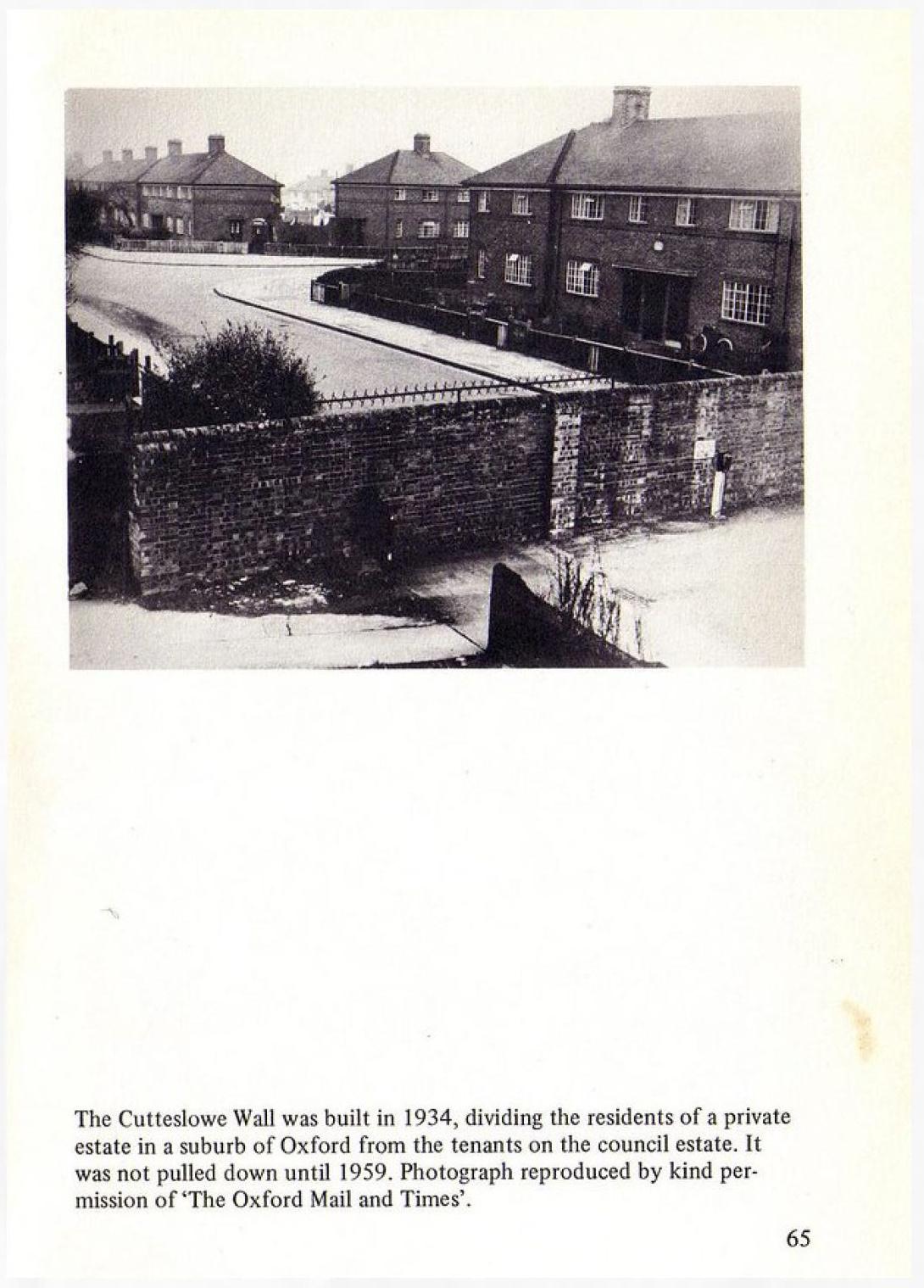
Source: Topical Press Agency/Getty Images)
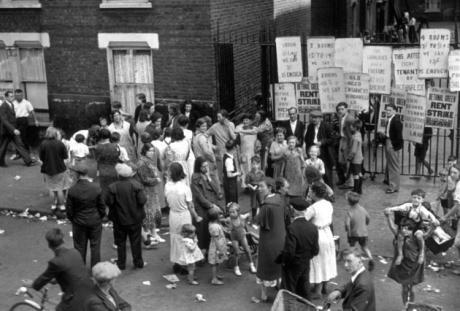
Source: prof. Jose Luis Oyon
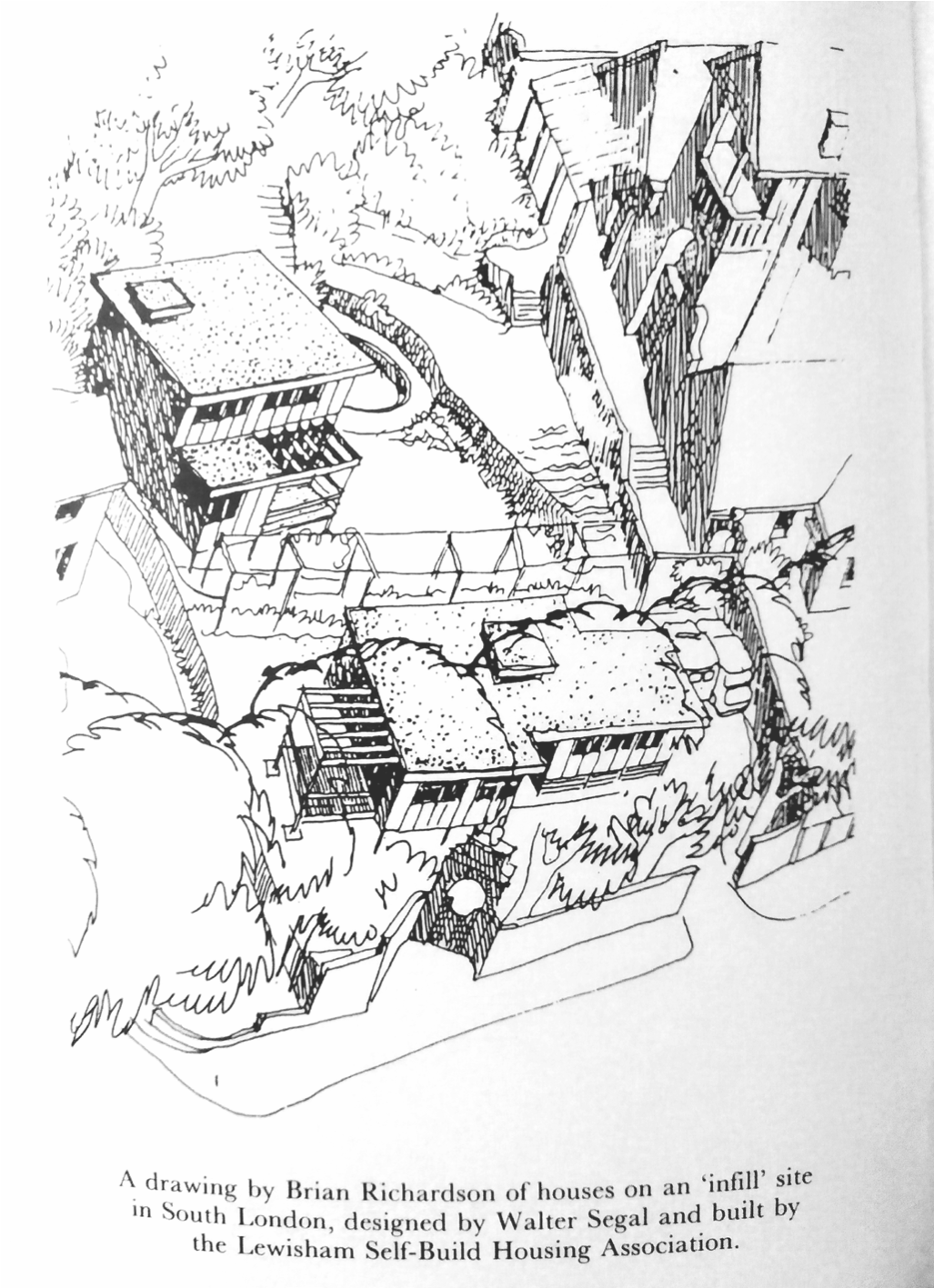
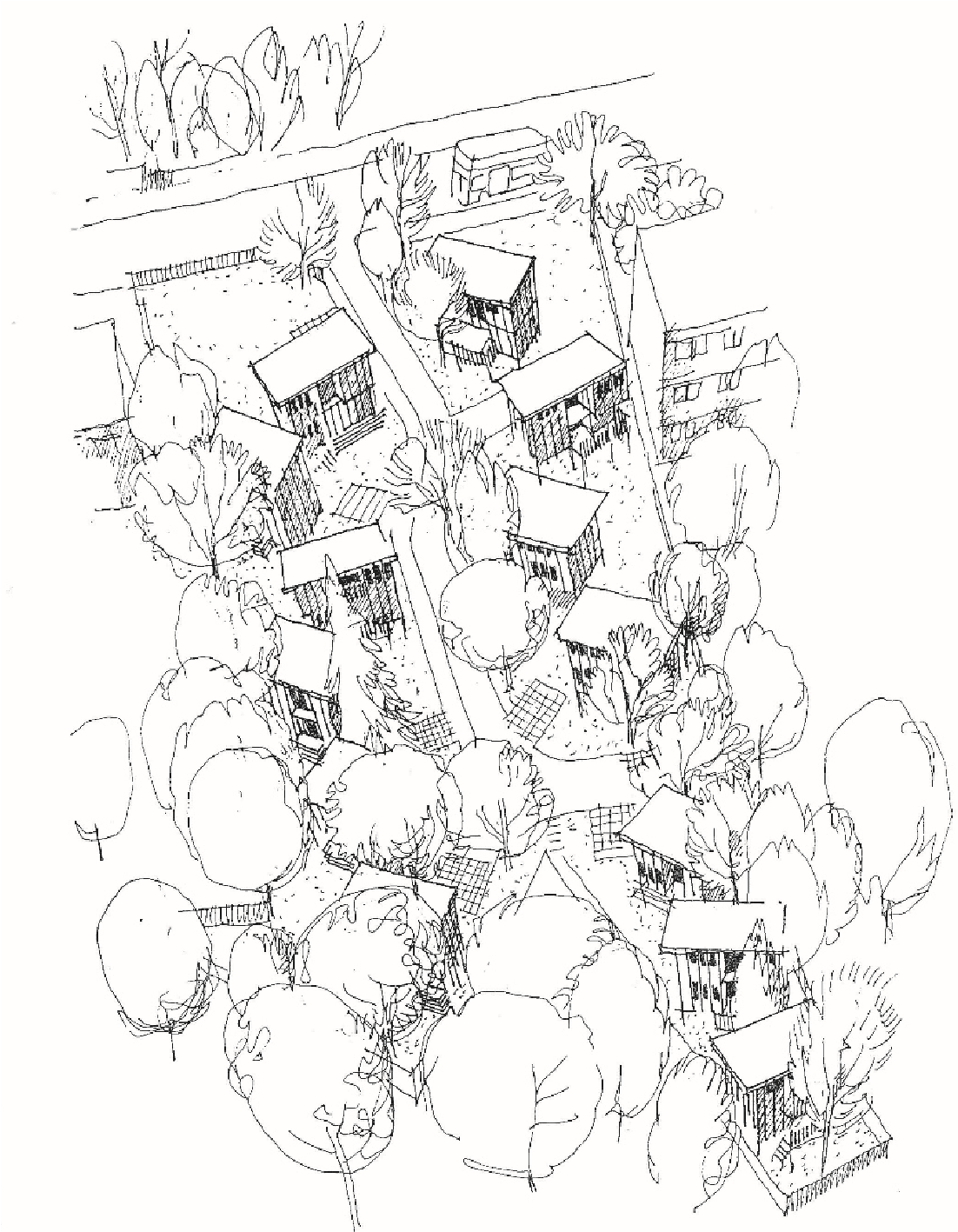
Source: prof. Jose Luis Oyon
“Of the many possible interpretations of anarchism the one presented here suggests that, far from being a speculative vision of a future society, it is a description of a mode of human organization, rooted in the experience of everyday life, which operates side by side with, and in spite of, the dominant authoritarian trends of our society.” (Ward, 1974)
The focus of Ward’s interest is the relationship of the human individual to his environment. Although it may appear simplistic and shadowed by the grand narratives of anarchism, his legacy had a profound impact on anarchism and at the same time has foreseen many of the contemporary urgencies in architecture and planning, such as the search for sustainability, and participation. The real power of his work emerges from justifying these profane ideas with everyday life experiences. This approach makes his work timeless. Ward’s work has done much to dispel popular myths and stereotypes associated with anarchism, as well as to demonstrate the practical applicability of such an approach to a wide range of issues concerning architecture and space. Colin Ward, in addition to writing all his life, was an active educator and urban planner. He has inspired many projects of experimental housing, workers’ self-organization, strikes and squatting actions. Rarely a spokesperson for any of those, but often present as an observer, perhaps precisely because he believed that we could do it ourselves and that no one has to explain ‘anarchy’ because it is already happening among people. His closeness to movements out in the field, his closeness to the community, and his reflections on pedagogy are indeed a radical contribution to understanding the social aspects of mutual aid, cooperation, and empathy. After a turbulent period during and immediately after World War II, Ward led a humble private life, a seemingly ordinary biography interspersed with influences, inspirations and contacts with many social and political movements. Hence, the echoes of his debates resonate today on the streets, schools and squats. Colin Ward died in 2010 at the age of eighty-five, leaving behind a wife and three children.
Following pages summarize several topics as a brief illustration of approach to his work.
Anarchism
Colin Ward was an advocate of ‘pragmatic anarchism’. He went along with Herzen’s quote: ‘A goal which is indefinitely remote is not a goal at all, it is deception’ (Ward, 2004). The pragmatism is defended against perfectionism as the impossibility to blueprint ‘an ideal’ anarchist society. Foremost since the universal consent was unlikely in most cases without force or coercion and since Ward, like Kropotkin and Reclus, believed that every social organization and supporting environment must ‘emerge from precise historical circumstances as well as local preferences, needs, and assets’ (Breitbait, 2009). Ward’s practical anarchism, therefore, aspired to a freer society rather than a “free society”. Ward’s interest were forms of social organizations that are self-governing, consensual, non-hierarchical. He believed that “in small face-to-face groups, the bureaucratizing and hierarchical tendencies inherent in large organizations have the least potential for development” (Ward, 1966). He particularly admired the Swiss system of direct democracy and the cantons in which each canton is governed by the inhabitants giving them control over the laws placed on them. However, he did not approve of many of the policies pursued by this system.
Urbanism
Ward’s work deals with the problem of rural and urban housing, problems of overcrowding and spatial planning in Britain, to which he proposed anarchist solutions. In his own words, his dedication was to explore the relationship between people and their environment (Worpole, 1999). As an architect, he wrote a lot about the built environment and conditions of living on an everyday basis using examples of small scale, working-class and popular co-operations in making spaces for housing, work and leisure. He respected architect Walter Segal, who established a DIY housing system in Lewisham. In this model, communal plots too small or difficult to build conventionally are given to people who build their homes with Segal’s help. Ward saw the idea of ’build your own’ housing as a step towards removing all planning laws and documents. In his book Cotters and Squatters (2002), Ward uses the historical examples of informal customs for land use for housing often put in action in spite of legally established systems of land ownership. Ward, for example, described the Welsh tradition of Ty unnos or ‘houses built in one night’ on common land.
For Colin Ward, the concept of ‘anarchy in action’ is most clearly shown in the built environment. Colin Ward used his education of the architect to observe and defend how the people at different times and places produced the space for themselves. Parallelly working as architect, Ward worked for decades as Education Officer at the Association for Urbanism and Spatial Planning in the United Kingdom. These roles inspired Ward to publish on the relationship between architecture, planning, and education (Mills, 2010). Ward’s work is characterized by a combination of a theoretical discussion of the nature of anarchism with a practical sensibility that sought empirical results and solutions that could transform real-life situations and everyday living conditions. One of the key topics of his work was the promotion of cooperative self-help strategies in the form of squatting, cooperatives and selfconstruction projects.
Colin Ward wrote extensively on the social history of different building and housing traditions holiday camps, allotments (1986) and urban gardens (1988), ‘self-determined’ communities (1984), tenant’s rights. Using the self-organization to explain social empirical examples of anarchist tendencies in people and mutual aid as an inseparable principle to the idea of self-organization, Colin Ward obviously aligned himself to the work of Peter Kropotkin. However, in Colin’s work, the concept of empiric observation is much more present as well as insisting on human-environment relation as key for contextualizing anarchist tendencies. Colin Ward upgraded Kropotkin’s ecological thought in the sense that it detached anarchism from moralist and ‘divine’ imperative and gave it a form of ecological reason. In a way, Ward made obvious that what we do with resources directs not only our relationship with the environment but as well our models of social organization. In the introduction to Peter Kropotkin’s book Fields, Factories and Workshops Tomorrow, he connected the ideas of selfsufficiency and mutual aid to the current economic and energy crisis. (Mills, 2010).
Education
Colin Ward believed in the environment being a resource for education and pedagogy. In fact, one large part of his works is dedicated to deinstitutionalizing and displacing the schooling from the fixed spaces and social hierarchies. In the chapter School No More of his Anarchy in Action (1973) he discusses “genealogy of education and schooling, specifically examining the works of Everett Reimer and Ivan Illich and the beliefs and anarchist Paul Goodman” (Mills, 2010). In his considerations about the educational system he was also interested in school buildings like the book: Streetwork: Exploding School (1973), wherein the introduction he writes: “[this] is a book about ideas: ideas about the environment as an educational resource, the idea of re-educating the school, the idea of a school without walls ... “. Another aspect of Ward’s perspective on education is shifting his focus from a child being an object of education to the child as an autonomous subject of the learning process. Especially important for Ward is how the environment and space shape the young people’s creativity, and another way around, how kids change and appropriate the city or countryside. Ward wrote two powerful books on this topic: Child and the City(1978) and Child and the Coutnryside(1988). Ward, using very illustrative and sentimental recollections of different people’s childhoods, celebrates creativity and negotiation skills in creating different conditions in their plays. The way how they use to play, appropriation, imagination, and collaboration transform a city and environment.
“In the 1970s, British architect and anarchist, Colin Ward, founder of Freedom Press and former Director of Education for the Town and Country Planning Association, reinvented this concept of a place to train young explorers in participatory design and planning in the many Urban Studies Centres he inspired throughout the UK. He also wrote several books on how to encourage young people and adults to become actively involved in their cities and towns. Ward reissued an edited and updated version of Kropotkin’s Fields, Factories and Workshops in the 1970s and wrote extensively on dweller control of housing, squatting, and numerous efforts to reclaim space in the city and countryside for the purposes of survival and free public use. In the years since, he has continued to advocate for open-minded, flexible planning and extensive resident involvement in housing.” (Breitbait, 2009)
Full bibliography (incomplete)
Ward, C. (1966) Patterns of Anarchy, ed.: L. I. Krimerman and Lewis Perry Doubleday-Anchor, --(1970) Violence [juvenile]. Its Nature, Causes and Remedies. Hammondsworth, England: Penguin Education
- -(1971) The Case for Participatory Democracy, ed.: C.G. Benello and Dimitrios Roussopoulos, New York: Grossman Publishers, viii, 386 p. illus. 24 cm. ISBN: 0670205958.
- -(1972) Work [juvenile], Penguin Education “Connexions”
- (1973) Anarchy in Action. Colin Ward. Allen & Unwin, London. Republished in Freedom., 1982. pb. ISBN:0900384204 Extract: A Self-Employed Society
- -(1973) Education Without Schools. ed.: Peter Buckman, London: Souvenir Press, ISBN 0 285 64720
- -(1973) Streetwork. The Exploding School., London: Routledge and Kegan Paul,ISBN07100 7683 5
- -(1973) Vandalism. Edited by Colin Ward, London: Architectural Press, ISBN 0 85139 700 X New York: Van Nostrand Reinhold
- -(1974) Fields, factories and workshops tomorrow. Kropotkin, Petr Aleksyeevich (Prince). Edited, introduced by Colin Ward. London: Allen and Unwin, ISBN 0 04 321017 1 New ed.
Freedom Press,1985. ISBN: 090038428X. pb
- -(1974) Memoirs of a Revolutionist. Peter Kropotkin. Edited and introduced by Colin Ward. London: Allen & Unwin, London: Freedom Press: 1985.
- — (1974) Tenants take over. London: Architectural Press, 1974. ISBN 0 85139 630 5
- -(1974) Utopia (juvenile). Penguin Education (Human Space, Stage One).
- -(1976) British School Buildings. Designs and Appraisals, 1964–74. Edited by Colin Ward. London. Architectural Press
- -(1976) Housing. An Anarchist Approach. London: Freedom Press
- -(1978) The Child in the City. London: Architectural Press
- -(1981) The Plotlands of the Thames Valley. Hardy. Dennis and Colin Ward. Geography and
planning papers. no 4. XY/N-1. Middlesex Polytechnic:
- -(1982) Art and the Built Environment. A Teacher’s Approach. Eileen Adams and Colin Ward.
Harlow. Published for the Schools Council by Longman. ISBN: 0582361958
- -(1983) A Framework for Reading. Creating a Policy in the Primary School. Muriel Somerfield, Mike Torbe, Colin Ward for the City of Coventry LEA. London. Heinemann Educational.
- -(1983) American Dream. Land, Chicken Ranches and the New Age. Dennis Hardy and Colin Ward.
Enfield: Middlesex Polytechnic
- -(1984) Arcadia for all. The Legacy of a Makeshift Landscape. Dennis Hardy and Colin Ward. (Coll.
Studies in history, planning and the environment .Series: An Alexandrine Press book),. ISBN: 0720116791 m ISBN: 0720117437
- (1985) When we Build again. Lets have housing that works! London: Pluto, 1985. ISBN: 0745300227.
- -(1986) Chartres. the Making of a Miracle. London: Folio Society
- -(1986) Goodnight Campers! The History of the British Holiday Camp. Colin Ward and Dennis Hardy. London: Mansell, ISBN: 0720118360
- -(1987) A Decade of Anarchy, 1961–1970. Selections from the monthly journal Anarchy. Compiled & introduced by Colin Ward. London: Freedom Press. ISBN: 0900384379
- -(1988) The Allotment. Its Landscape and Culture. David Crouch and Colin Ward. London: Faber, Nottingham. Mushroom. ISBN: 0907123163
- -(1988) The Child in the Country. London: Hale, ISBN: 0709033222
--(1989) Undermining the Central Line. Ruth Rendell & Colin Ward. London. ISBN: 0701135980
- -(1989) Welcome, Thinner City. Urban Survival in 1990s. London: Bedford Square Press (Coll. “Society today”), ISBN: 0719912520 pb
- -(1990) Discussion Paper on Vandalism and Graffiti. Calouste Gulbenkian Foundation
- -(1990) The Child in the City. London: Bedford Square Press (Series “Society today”)
- -(1990) Talking Houses. Ten Lectures. London: Freedom Press, ISBN: 0900384557[16]
- -(1991) Images of Childhood in Old Postcards. Colin Ward and Tim Ward. Stroud: A. Sutton, ISBN: 0862998654
--(1991) Freedom to go. After the Motor Age. London. Freedom Press ISBN: 0900384611
--(1991) Influences. Voices of Creative Dissent. Green Books. ISBN: 1870098439
--(1993) Education for Resourcefulness. Bath. Human Scale Education. ISBN: 1898321019
- -(1993) New Town, Home Town. The Lessons of Experience. London. Calouste Gulbenkian Foundation. ISBN: 0903319624
- -(1995) A Factory as it Might Be. By William Morris. The Factory We never Had. Nottingham. Mushroom Bookshop. ISBN: 090712321x.
- -(1995) P.A. Kropotkin’s Sesquicentennial. a Reassessment and Tribute. Cahm. Caroline and Colin Ward.University of Durham. Centre for European Studies. ISBN: 1897910258
- -(1996) Talking School. Ten lectures. London. Freedom Press. ISBN: 0900384816
--(1996) Talking to Architects. Ten Lectures. London: Freedom Press, ISBN: 0900384883
- -(1997) Havens and Springboards. the Foyer Movement in Context. London: Calouste Gulbenkian Foundation ISBN: 0903319829
- -(1997) Reflected in Water. A Crisis of Social Responsibility. London, Washington, D.C.: Cassell. 1997. ISBN: 0304335673
- -(1998) Sociable Cities. The Legacy of Ebenezer Howard. Peter Hall and Colin Ward. Chichester. J. Wiley. ISBN: 047198504x
--(2000) Anarchy and Architecture: A Personal Record in Non-plan: Essays on Freedom, Participation and Change in Modern Architecture, ed. by Jonathan Hughes and Simon Sadler London: Architectural Press.
—(2001) Violence and Non-Violence in the Schools: A Manual for Administration. Colin Ward and Christine J. Villani, New York: E. Mellen Press
— -(2002) Cotters and Squatters: The Hidden History of Housing, Five Leaves, Nothingham
— -(2003) Talking anarchy. Colin Ward and David Goodway, PM Press, London
— -(2004) Anarchy: A very short introduction, Oxford Press
— -(2012) Talking Green, Five Leaves, Nothingham
About Colin Ward
Warpole, K. (1999) Richer Futures. Fashioning A New Politics. Earthscan
Wilbert, C, and White F., D. (2011) Autonomy, solidarity, possibility: the Colin Ward reader
Bradshaw, R., Ward, B., Ward, H., Warpole, K. (2011) Remembering Colin Ward, Five Leaves, Nothingham
Honeywell, C. (2011) A British Anarchist Tradition: Herbert Read, Alex Comfort and Colin Ward. A&C Black
Levy, C. (2011) Introduction: Colin Ward (1924–2010). Anarchist Studies 19.2 (2011): 7–16.
Goodway, D. (2011) Colin Ward and the New Left. Anarchist Studies 19.2 (2011): 42–56.
White, S. (2011) Social anarchism, lifestyle anarchism, and the anarchism of Colin Ward. Anarchist Studies 19.2 (2011): 92–104.
Levy, C.(2013) Colin Ward: Life, Times and Thought. Lawrence & Wishart
Price, W. (2015). Colin Ward’s Anarchism. Anarcho-Syndicalist Review. 63rd
White, S. (2007) Making anarchism respectable? The social philosophy of Colin Ward. Journal of
Political Ideologies, 12: 1 (2007): 11–28, DOI: 10.1080 / 13569310601095580
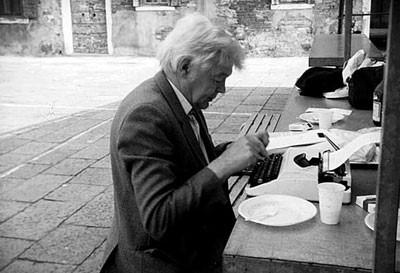
Source: prof. Jose Luis Oyon
3.1. Anarchist approach to housing: Housing: An Anarchist approach (1974), Tenants Take Over (1972) and Talking Houses (1990)
What is housing from anarchist perspective?
Colin Ward had a significantly different approach to housing than Peter Kropotkin. It was one of the central topics on which he wrote a series of articles, books and pamphlets. To list just a few of them: Tenants Take Over (1974), Housing: An Anarchist Approach (1976), When We Build Again: Let’s Have Housing that Works! (1985), Talking Houses: 10 Lectures (1990), Cotters and Squatters: The Hidden History of Housing (2004), among others. He is probably the first author that tried to provide a comprehensive definition of an Anarchist approach to housing, most completely in the book Housing: An anarchist approach. To not consider housing a central political place for individual and as important to the production of a healthy environment, is a mistake made by both of the conventional camps; the left-wing, socialist, bureaucratic planning and the right-wing, profit and property driven market. But most of all, he is critical to anarchists who place housing as a condition in after-revolutionary reality and are not being concerned with the current context and bad situation in which most of the world is housed. He insists that anarchists should, instead of preaching revolution, enter the debate between the conventional sides of socialist versus capitalist modes of production of housing and demand for the change of discourse, aiming at the third way — the path of Dweller’s control.
Dweller control is, in a way self-evident principle that implies that tenant makes decisions and is activated in each phase of his housing from land acquisition and design to construction, use and evaluation. Dweller’s control is a central principle of anarchist approach to housing and Ward (while talking about squatting) beautifully broke it down to (1) citizen initiative, (2) solidarity and (3) determination in providing one’s own house (1976). In that sense, Ward follows John F Turner — understanding housing as a social and political dynamic that goes beyond a basic need. What is important is not what the home is physically, but what the home does for the user, and what role plays in the individual’s concrete life, or as John F Turner defines: Housing is a verb — a process that includes production, distribution, and enjoying of the everyday benefits of a good home. Ward recognizes several proto-anarchist architects and planners like Patrick Geddes, Giancarlo De Carlo and John F Turner that he summons in the introduction to criticize the idea of housing as a finished object and the idea of housing as standardized service. Probably the key quote of the whole book is not Wards but Turner’s: “When dwellers control the major decisions and are free to make their own contribution to the design, construction or management of their housing, both the process and the environment produced stimulate individual and social well-being. When people have no control over, nor responsibility for key decisions in the housing process, on the other hand, dwelling environments may instead become a barrier to personal fulfilment and a burden on the economy.”
It is possible to read this book as an encyclopedic attempt to break the boundaries of the term housing. First, the housing is not an object or social service as usually perceived but a process, second the partaker in that process or tenant is not just a user but ought to be decision-maker in all phases: design, construction, use and exchange. Further, the housing itself does not refer to a space limited by four walls. Ward sees housing as something that encompasses the surrounding environment of one’s everyday life. Housing is a street with which kid goes to school; housing is a park in the afternoon; housing is the accessibility of jobs in the area etc.
“In 1940, I was 15, my second job was for the borough surveyor of Ilford, Essex. Among my tasks was sorting the dockets that came in about repairs and maintenance to that council’s housing estates. Some got repairs. Others were put on a second pile. Some tenants were favoured. Others were not. I had stumbled, without realising its implications, on one of the unmentioned facts about housing management.” (Ward, 1990)
The three revolutions of housing
In the introduction to the book Talking Houses(1990), after summarizing his thirty years of closely following the issue of housing in Great Britain, Ward points that to achieve dweller’s control the struggle is inevitable for about 90 per cent of the people, and it is evident that people draw their inspiration from what other people actually succeed in doing. In the context of ever-changing government legislation and administrative decisions, homelessness, collapsing council flats and exploiting landlords, dwellers control is a sort of privilege taken for granted by those who can afford homeownership. The others are left to struggle to negotiate their living condition on an increasingly alienating market with property prices growing limitlessly for decades. After a century of governments involved in the provision of housing Ward claims that we can observe three revolutions in housing expectations:
1) Revolution of tenure. Before World War I, the rich and the poor were paying the rent to the private market. In less than one lifetime, owner-occupation became a norm that all strive for. Their dwellers own around 65 per cent of British households. All other forms of housing are judged nowadays in relation to home-ownership.
2) Revolution of services and housing densities. The change of expectations in household maintenance is the most radical and at the same time, the most silent revolution in all peoples home. Cleaning and maintenance of the houses was once a large piece of a labour pie that nowadays is disappearing. A usual female role of housekeeping was a form of servitude that was assumed as natural. It changed with the invention of machines and supplies, distribution of electricity, water and other facilities. On the other hand, demographic changes and decentralisation have had a significant influence on previously extremely dense industrial cities with several families crowded on what today is considered an average apartment.
3) Revolution of nature of households. For more than century, a provision of housing assumed the nuclear family to be the standard: Parents and kids were incorporated even in the names of the rooms. This started to change radically towards the end of the 20th century, and we could say that until this moment, the architecture or urban planning did not manage to address this change successfully.
Housing as tactic — from right to housing to self construction
Since housing for him is a dynamic, Colin Ward’s attempt to redefine it in the book Housing: An Anarchist Approach is structured in chapters that actually talk about actions, tactics and strategies: The first chapter is about Direct action and Squatting in post-war Britain. The second chapter explains that design and planning should serve in fulfilling maximum of human needs and be flexible and adaptable instead of determinative and uses the example of Italian neighbourhood La Martella. The third one is turning to global scale by looking for examples of self-help housing in slums and what Ward calls Anarchist cities. The fourth and fifth are about participation from two different standpoints. One is about architects and in general professionals role in participation. The other one is on tenants position and possibility of choice between full aid or full control.
In the introduction of the book, Ward explains that in order to make anarchism respectable we need to look for anarchist solutions to everyday problems. Ward’s work analyses relation of place, environment and people. Opposite from Kropotkin’s, his argument is more inductive, using examples of everyday practices he tries to prove the possibility of an alternative. In his earlier years, after leaving the army and joining the editorial of Freedom Press, Colin Ward is eager to defend radical tactics by tenants such as squatters actions, occupation camps, direct actions on landlord’s companies and rent strikes. In them he saw the continuation of historical struggles for the rights of the poor and landless. “These groups have shown self-management to be viable in the unpromising field of short life housing and may work better where permanent housing is concerned.” After considering these radical tactics Ward looks for all aspects of self-managment and mutual aid in production of housing. Using examples like socialist self-built housing of Red Vienna period from 1920s till the 1930s, to La Martella project in Italy where rural communities are housed in organic architecture adaptable to their needs, and to Crisitiania, an alternative community in occupied fortificiations of Kopenhagen, among others. After that he discusses the features of physical space and how they are conceived in relation to specific needs of different tenants. “ What is needed is to plan with sufficient flexibility and ingenuity to satisfy the needs of every kind of tenant and to extend rather than limit the variety of ways in which he can choose to live.” Finally he starts looks at the environment that these kind of experiences produces. Here Ward sees two important properties of anarchist housing 1) the surroundings of home as an extension, as external environment of housing organism and 2) the process of designing and what exactly creates the home beyond the initiative and principles. — how it is built? Ward recognizes that in looking for alternative approaches, Giancarlo De Carlo as well examined building co-operatives, tenants cooperatives, housing strikes and the illegal occupations and finally went on to consider anarchist attitude to town planning: “The plan must necessarily emanate from an authority; therefore it can only be detrimental, The changes in social life can not follow the plan — the plan will be a consequence of a new way of life. ” (De Carlo, 1948)
Altogether is a composition of examples of practices of dweller taking or being in control, with architects sometimes being the supporters or facilitators of that process. To find more about the relation between the historical struggles of tenants for their housing rights, through rent strikes and tax rate strikes, one should look in Ward’s other book Tenants Take Over (1974). This book was ‘intended as an incitement to action’ in one particular direction: to change the relationship of landlords and tenants in the municipal third of housing in Britain by transferring control from local authorities to tenants cooperatives. Originally it was published in the form of article for journal Anarchy (January 1968) during times he was an editor. By after accounting the tenants’ associations meetings, housing managers, cooperative members, councillors and other actors Ward decides t use the format of the book to explain in what sense are the cooperatives the best embodiment of dwellers control especially for poor working-class families. Precisely this recognition of cooperative self-organization is to this day one of Ward’s most significant contributions. Although in his times the idea of a large amount of selfmanaged, non-centralized cooperatives were very resisted in socialist circles, his books were often used in self-education of cooperative movement, a movement that today is ‘a new orthodoxy in progressive housing policy circles” (Wilbert and White 2011). This did not stop only on housing; it became a new form of organization in social movements around farming, land trusts, caretaking, construction. The politics of self-management today might be on its’ biggest rise, and it is fair to note that the idea was documented, argued and valued by Ward since almost 50 years. It is also comforting to note that Ward preconceived one of the roles of squatting that until these days are not yet represented or defended, but my personal experience confirms it. The squatting is educational practice:
“The vast majority of people in society have not been, and almost certainly are not being, educated as active participating citizens. The emphasis in our educational system, certainly above primary level, is on obedience and submission. Attitudes of paternalism and authoritarian is more deeply embedded in our culture and we are only beginning to move towards the point where there is any wide spread acceptance of enlightened educational philosophy and recognition that in our increasingly complex and open society, citizenship is a necessary social skill... The skills of democratic practice, debate and decision-making are alien to many of the families who come to family squatting groups. Participation is an educational process for them, and it is a slow one, especially for a family which has learned only resignation and despair in the face of restricted life chances. The wider dispersal of power and responsibility in our society is as inevitable as it is essential; but progress will be uneven and mistakes unavoidable.” (Ward, 1976)
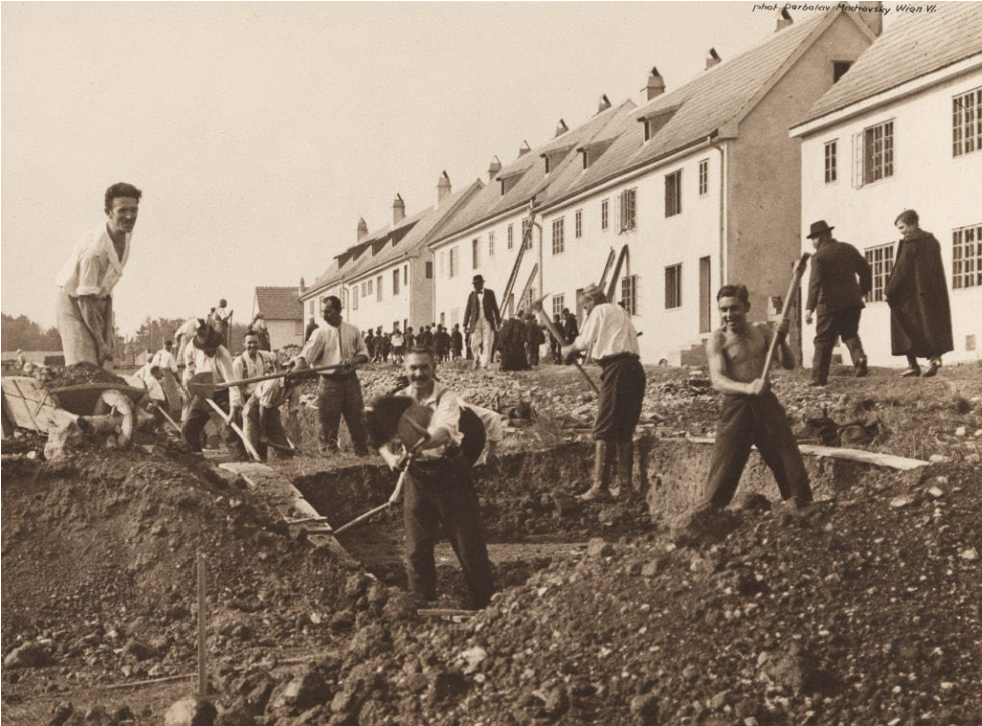
Source: https://www.creativeaustria.at/, Wien Museum
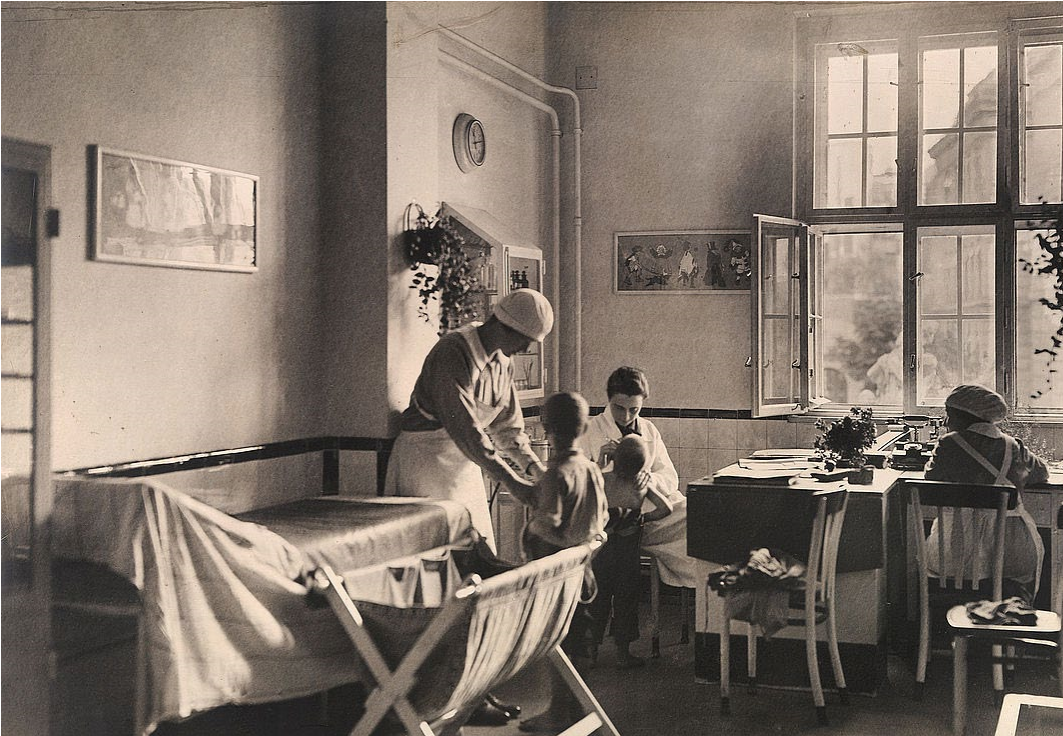
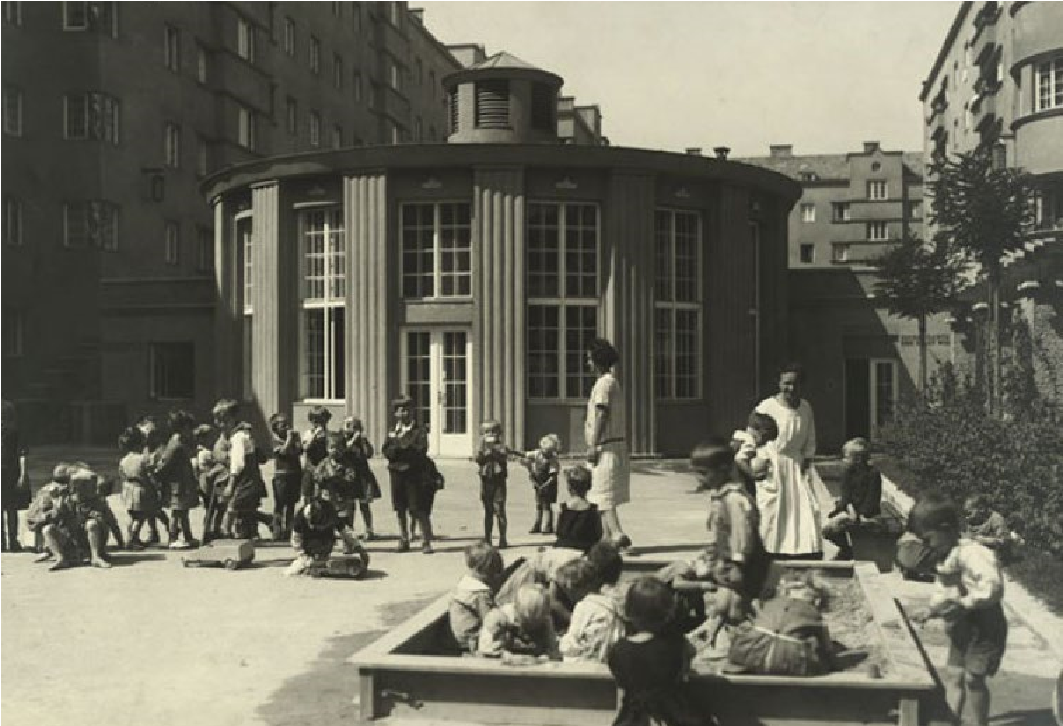
Source: https://vienna-insight.at
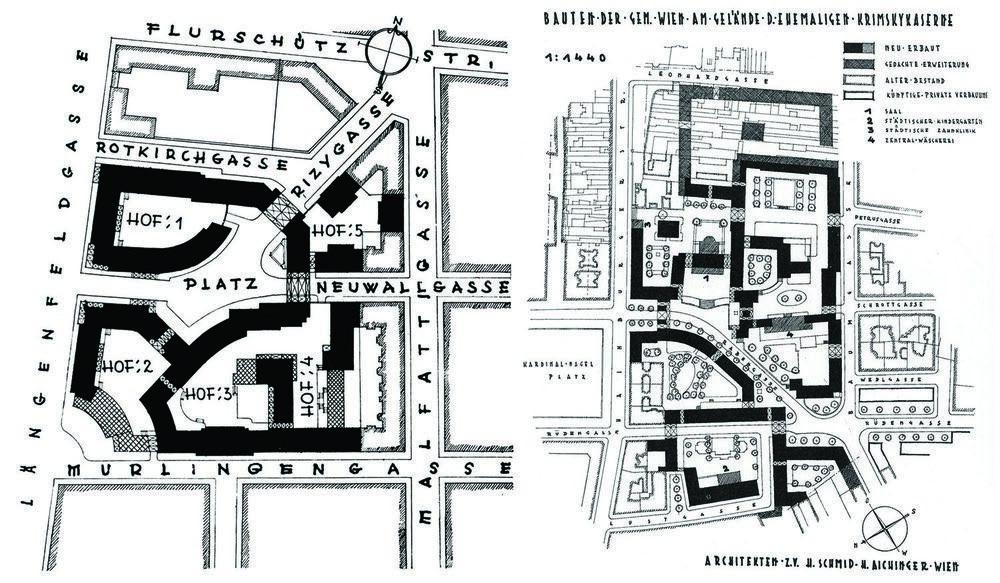
Source: https://www.austria.org/revisiting-red-vienna
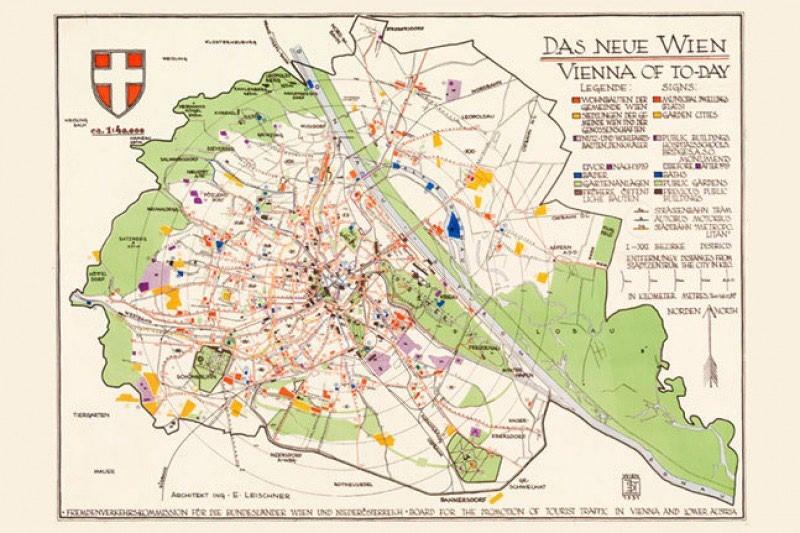
Source: https://vienna-insight.at
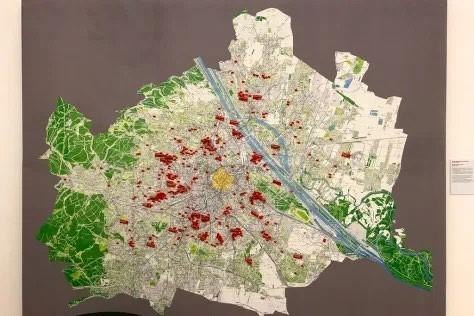
Source: https://vienna-insight.at
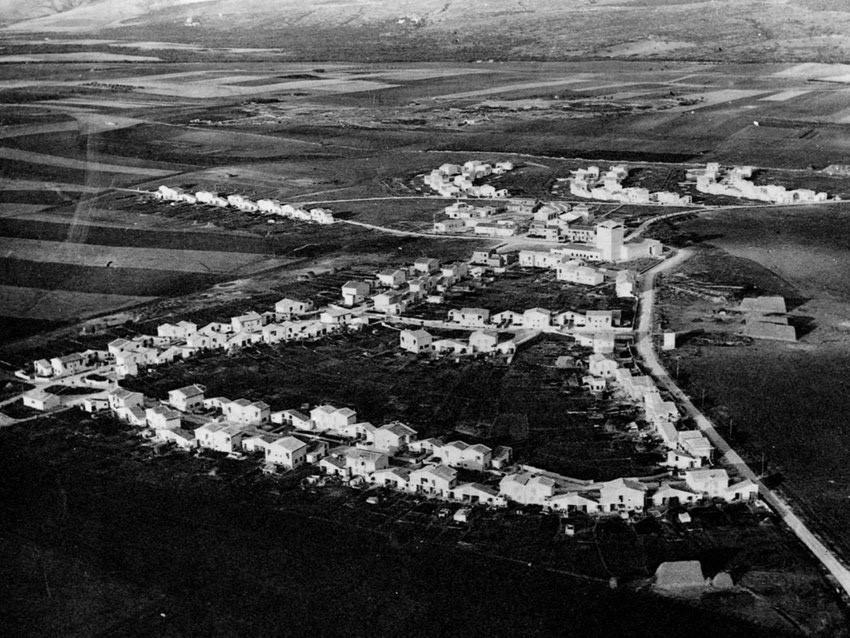
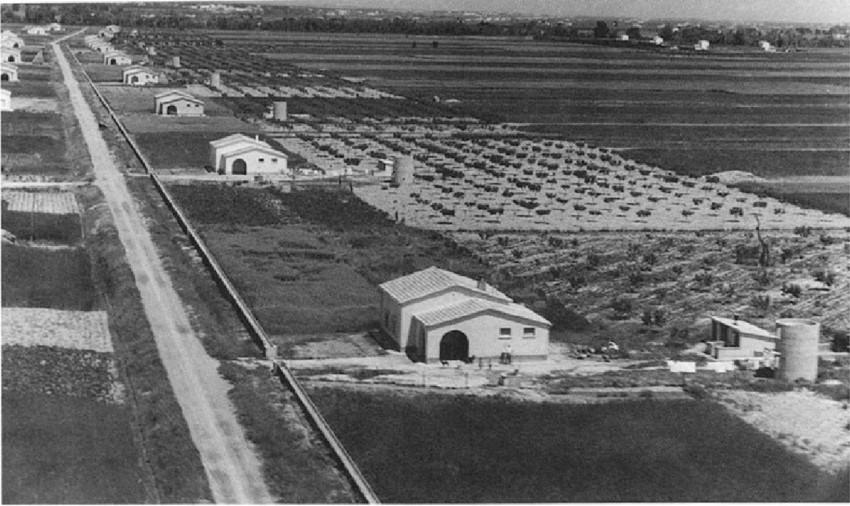
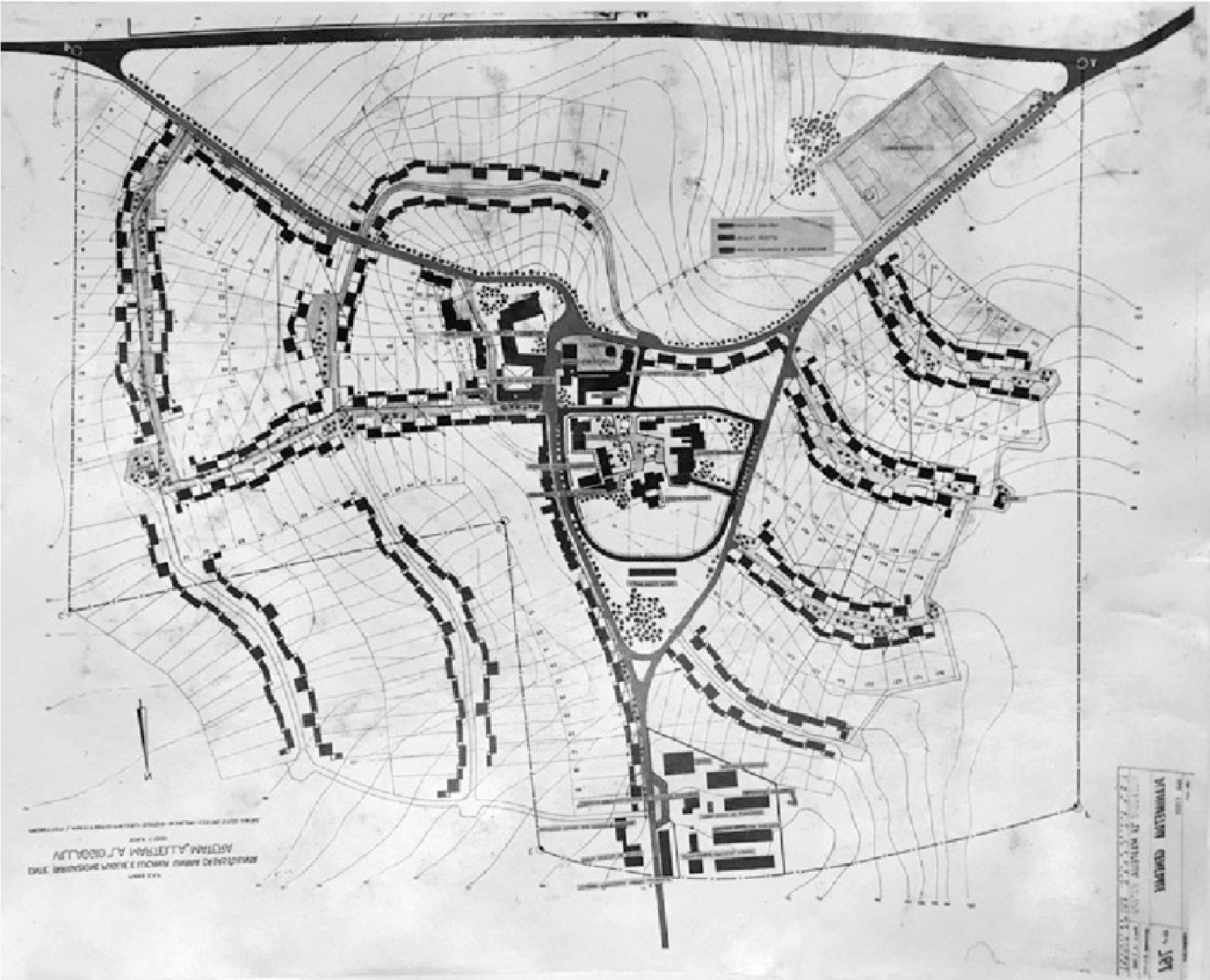
Source: Rural modernity in post-war Southern Italy: the La Martella village in Matera, Tenzon, 2018
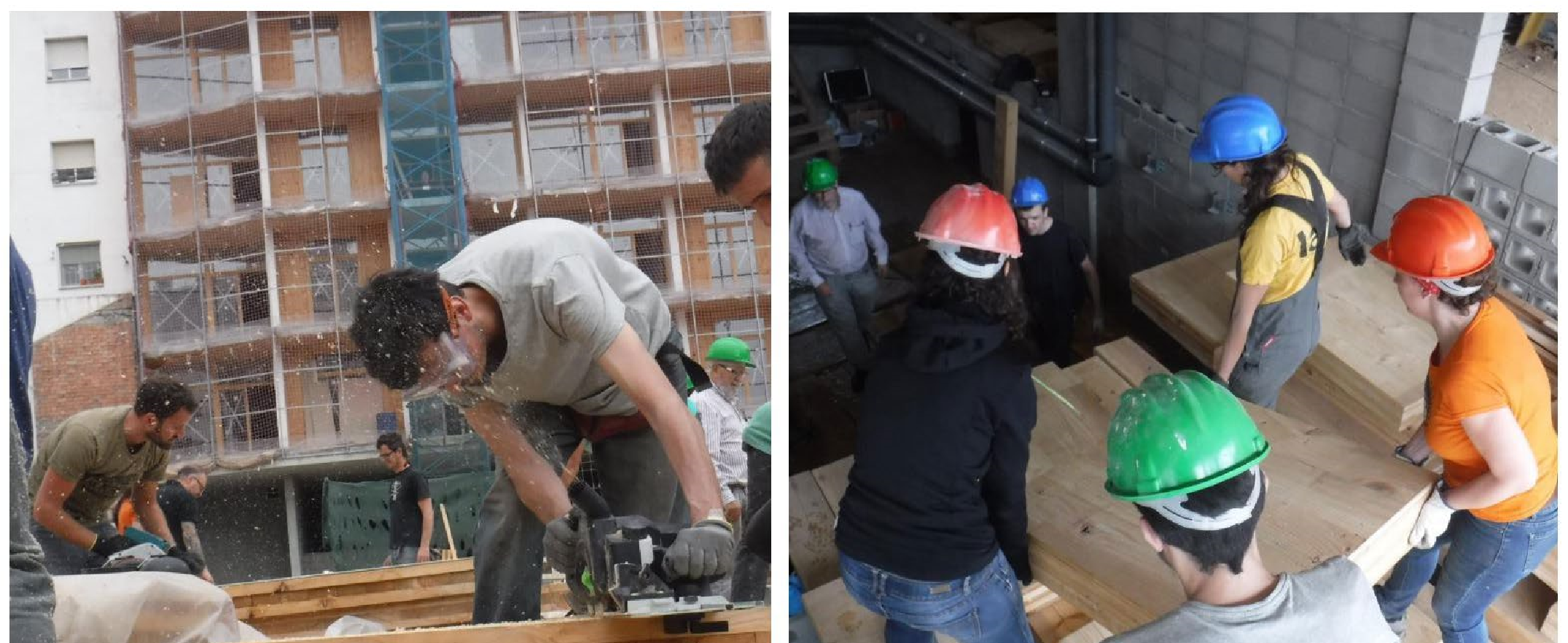
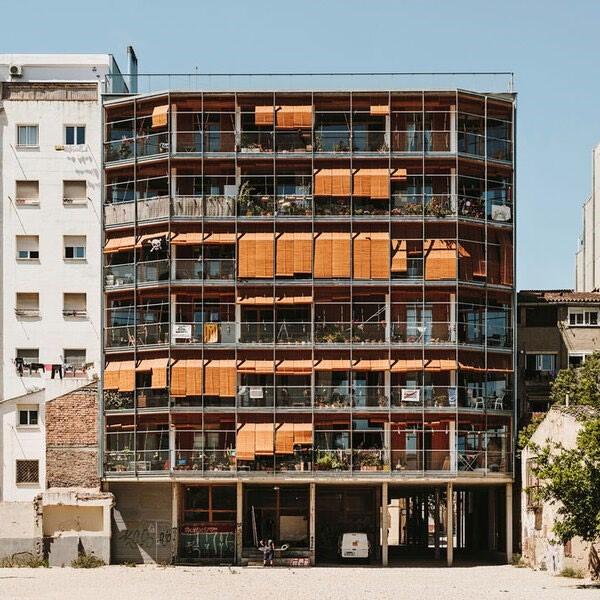
Source: Presentation by La Borda at MISMeC, 2020
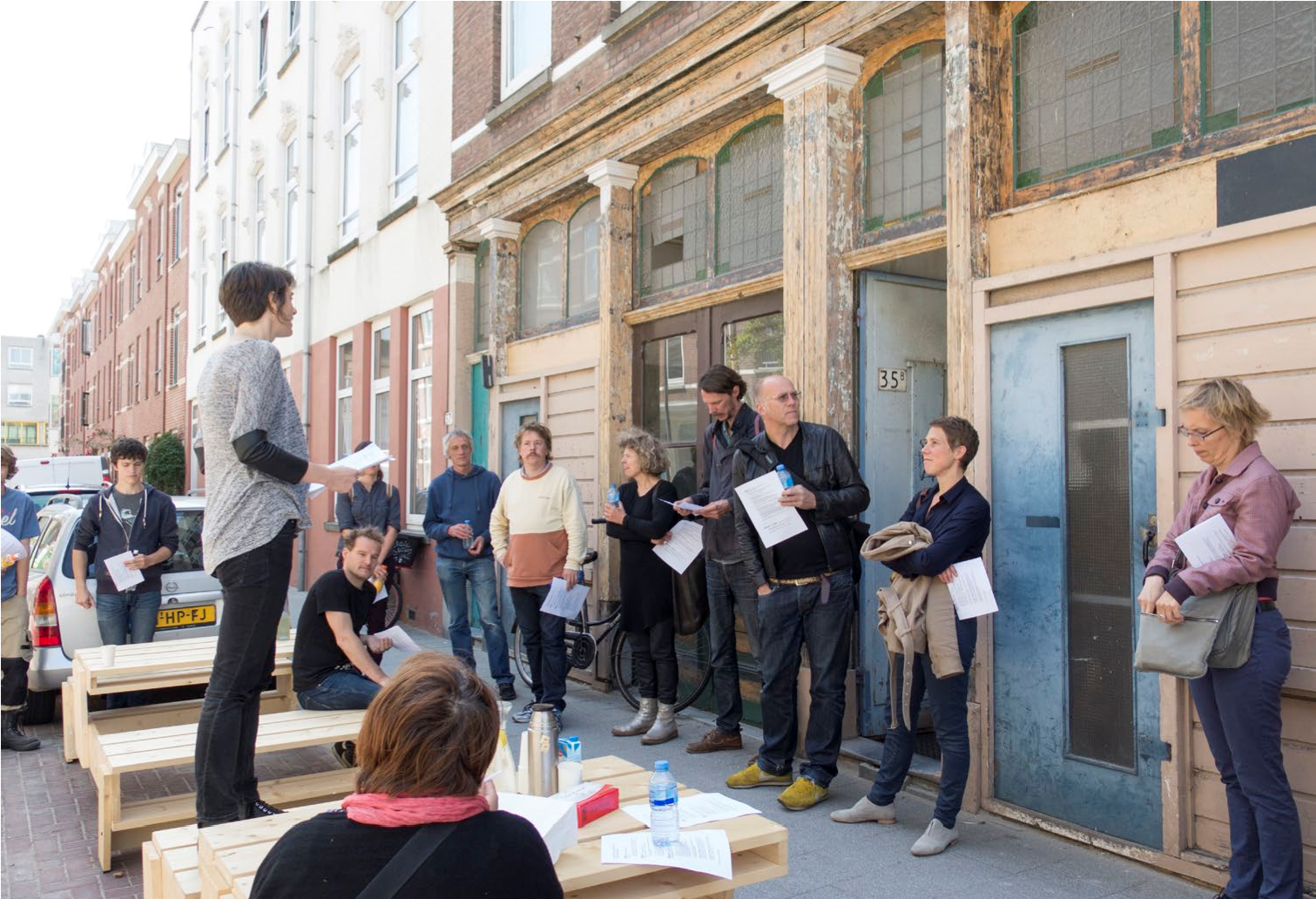
Source: https://www.stadindemaak.nl/en/
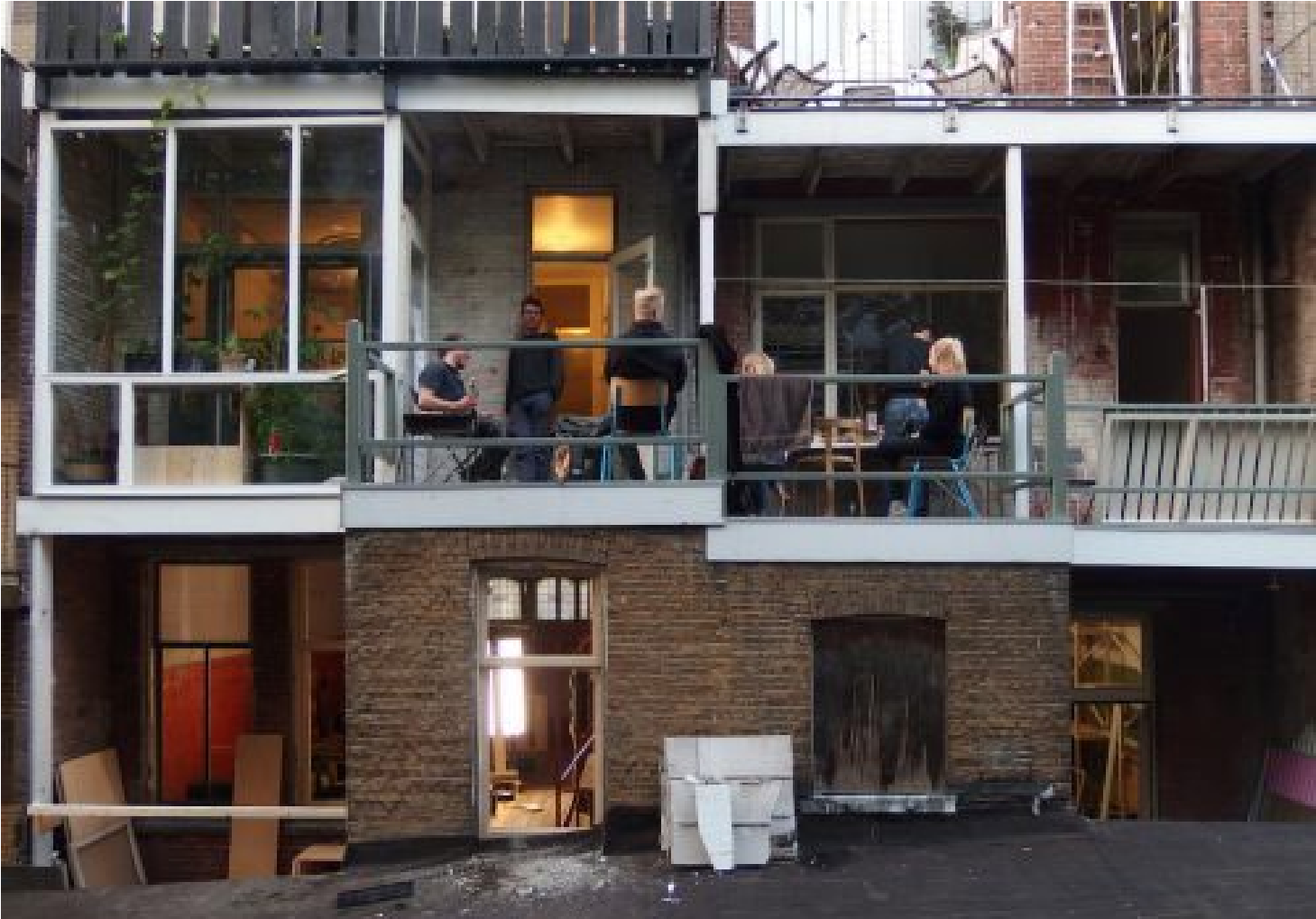
Source: https://www.stadindemaak.nl/en/
Here I will use the categorization by Oyon to summarise tactics that arise from the premise of Dweller’s control in housing:
3.1.1 The appropriation of existing housing and land: Occupation and squatting and invasions of barracks and state buildings in the postwar years (Colin Ward, 1924). In Britain, 40,000 homes in 1946 and 5,000 Scotland were occupied. More than 1000 camps were erased on occupied land. Challenging the idea of property in the context of dis-balance between exchange and use value is how Ward justifies illegality of occupation and trespassing. The other argument is that people have done it since forever and a large part of rural traditions on land tenure emerges from regulating the rights for occupation (not ownership) that was a common part of customary law in whole Europe (Ward, 2002).
3.1.2 Participation (De Carlo, 1919) in the construction of housing mediated by architects. De All three phases of the architectural project (definition of the problem, elaboration of the solution and
evaluation of the results) requires the presence of the users. The use of housing is a phase itself. It is essential that the three phases merge and do not operate in a single direction. “The practice of participation changes each phase, and the relationship system between them (...) the architectural conception becomes a process.”
3.1.3 Self-help and incremental housing: Housing built by the skills and materials available to the user and then let to be adopted incrementally, grow and redesigned according to changes in the family, labour patterns and users preferences. Most important works on this are analysis by Turner in Peru (1957–1965) and critical basic theoretical texts: Freedom to build (1972) and Housing by people (1976). Another important example is Walter Segal’s model of self-built home.
3.1.4 The importance of tenure and ownership versus rent as a driver of cooperative organizing among citizens: The ownership is a fundamental category of housing for both Ward and Turner. It is expressed as well in Proudhonian preferences in Ward. Property and possession are directly reflected in the politics of tenants rights. Ward breaks orthodox perception fo this issue by illustrating the rich history of tenant self-organization and landlord-tenant struggles. The key strategic body of this struggle are Tenant Cooperatives.
3.1.5 The external environment: The definition of the house should include its broader physical, social and economic context and resulting conditions. Turner does a beautiful analysis in this direction in his book Housing by People. A struggle for owning and enjoying the public amenities, maintenance and preservation of spaces of quality in the neighbourhood, right to appropriate and decide about public space recently became a most mobilizing urban topic. Ward in his work in housing as the external environment includes, but is not limited to:
-Interest in the surrounding public space (Child in the city: Ward).
-Relationship between housing and work (Housing by People, Turner).
— Integration with agriculture: urban backyards and gardens, orchards fertilized with organic waste from the house: Allotments. (Welcome, Thinner City, Ward; Fields, Factories and Workshops, Kropotkin)
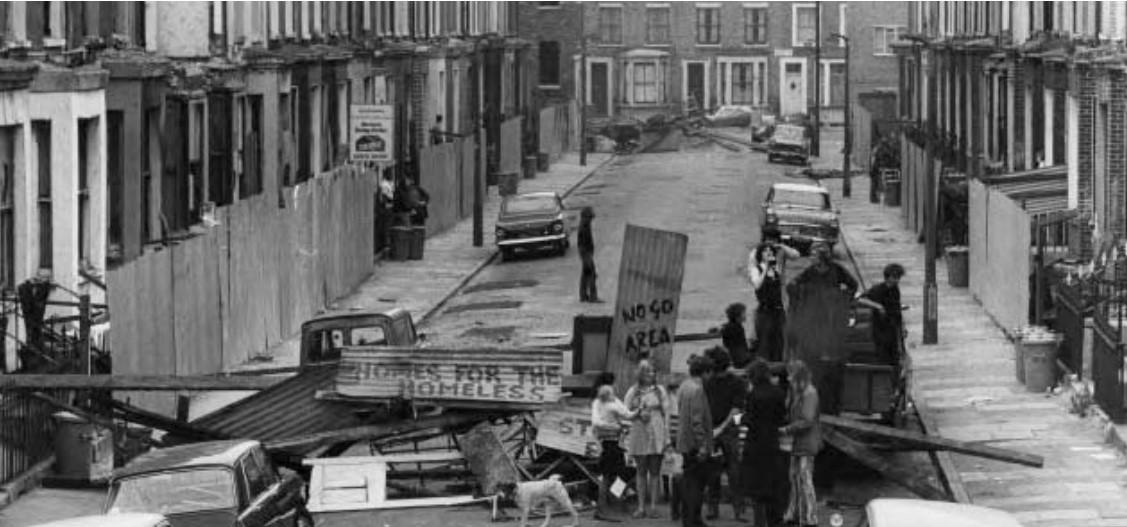
Source: Squatting, the real story, 1980
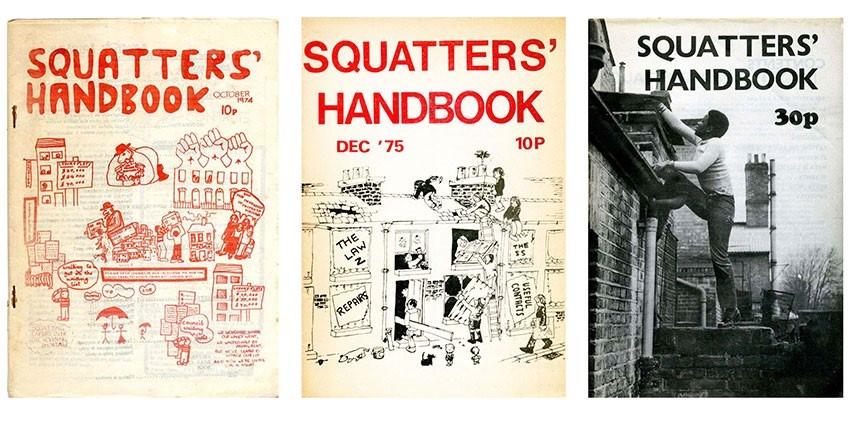
Source: Squatting, the real story, 1980
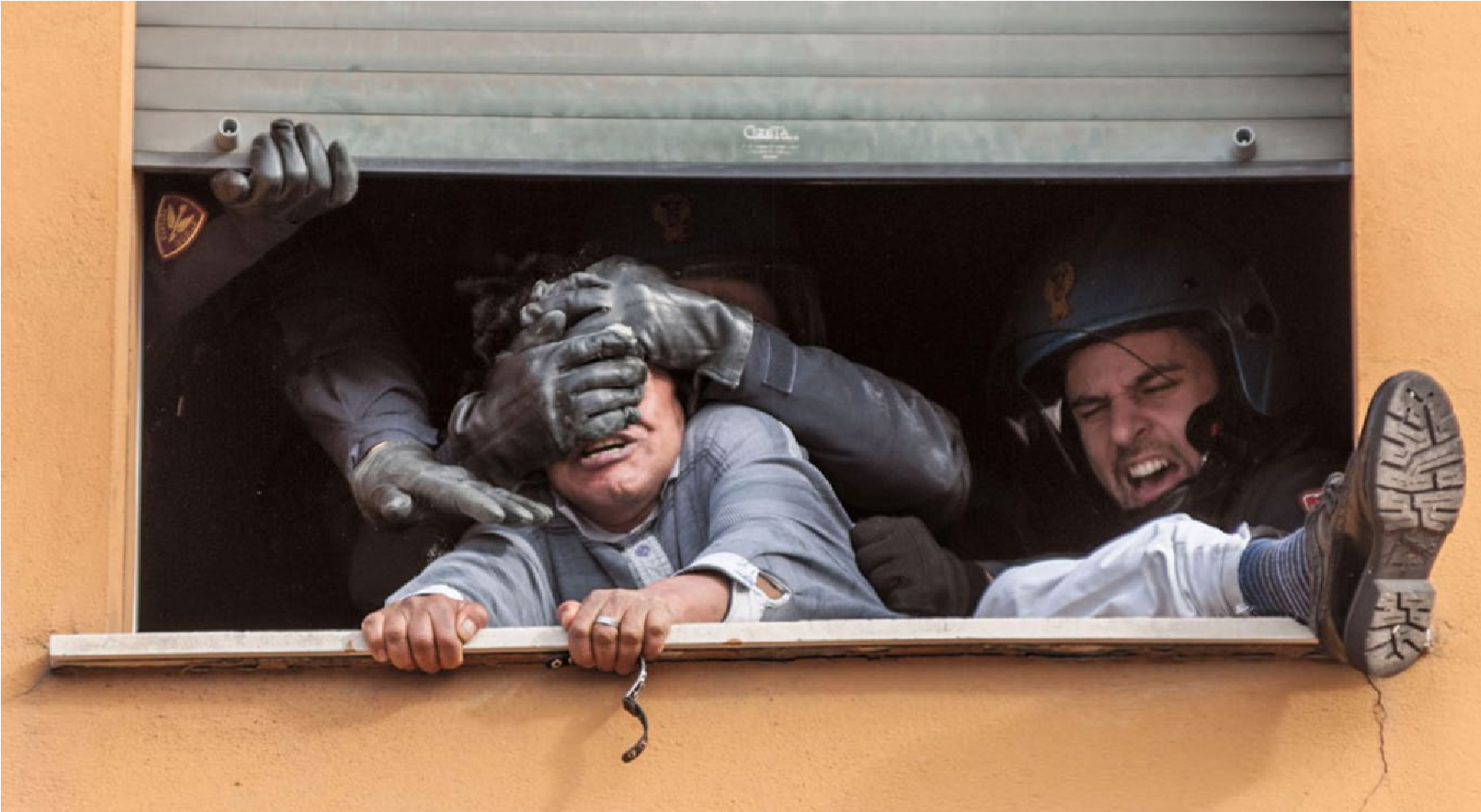
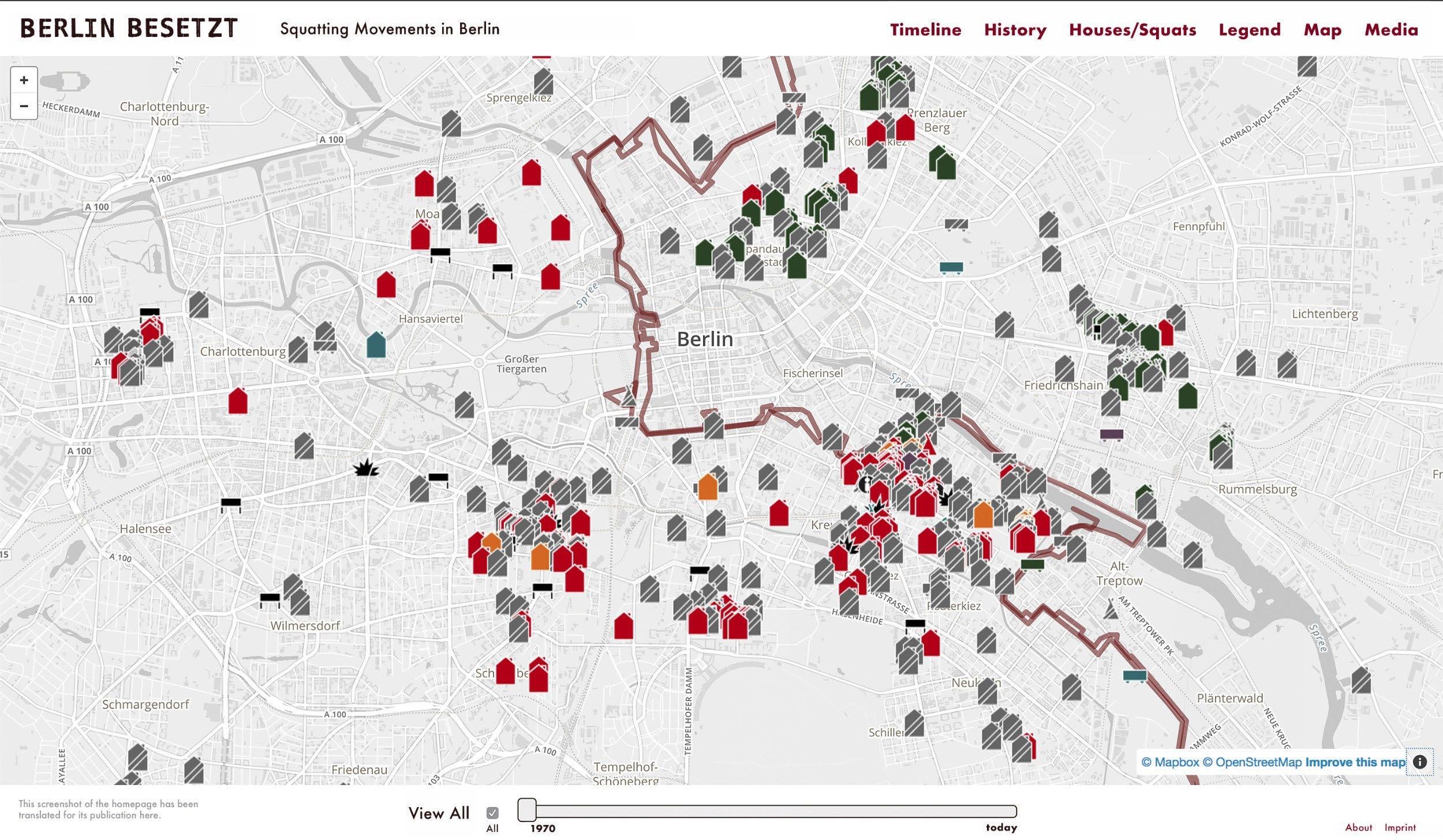
Source: [https://maps.squat.net/en/cities
3.2 An anarchist approach to environment
The Child in the Country (1988), The Child In The City (1978), Talking to architects (1996).
Environment (h)as political subject
This paragraph will try to respond to probably the most complex assignment in presenting the work of Colin Ward. The following lines aim to present, analyse and evaluate Ward’s triangle environment-individual-society. The reason why I find it, so complex is because Ward rarely wrote explicitly about the environment in absolute terms and used it often in his work to explain the relational character of space. On top of it, it requires effort to describe the relations within the triangle because the body of work by Ward that touches upon the environment is scattered and fractioned between the number of articles and lecture transcripts. Not many of his texts talk explicitly about the environment; still, in many articles, he uses the term in the context of different, often more specific, debates. These pieces of the puzzle were never compiled in one article, book or reader. Even in the most elaborated reader Autonomy, Solidarity, Possibility: The Colin Ward Reader (Willbert and White, 2011) the editors’ introduction discusses Ward as an environmentalist, but afterwards in the selection of works it does not recognise the environment as a distinct category of his work. But since I believe it is and I would enjoy proving it, I will try to focus on this objective. It is finally, unfortunate that I didn’t have access to some of his important works in this field, such as The Child in the Countryside (1988), Freedom to Go: After the Motor Age (1991) and Cotters and Squatters: The Hidden History of Housing (2002). These works would help have a more rounded picture of what I am trying to present here.
Lets first start with defining what exactly Ward considers as the environment and what is specific about his approach. Ward’s environment is socio-natural category quite far from something that needs to be protected. The environment is a) reciprocal — it is produced, and it produces, b) essentially social — inevitably relates to all of us and c) inherently personal — it is a relational condition that defines each individual’s position in the space and society. I will try to give some attention to each of the listed aspects.
Environment is reciprocal — Whose environment?
Ward sees an environment as a foundation for the description of space as relative, while at the same time a product of concrete social and personal relations. It is something produced by the user, and at the same time, this environment defines this same user that he or she ‘uses’. On a much less philosophical scale, Ward uses the term environment often as relative to explain our relationship to others and how the others from their own personal and social standpoint influence or perceive this relation. It is multidimensional, on the one hand, it has its political, social and economic realities, on the other, it is tangible, owns a look or appearance, and is consumed on a sensory level as well as in our memory. Or at least we think so (Ward, 1978). When he speaks about environmental education he uses a rather simple sentence describing his ideas on lecturing arts and geography: ”...we insisted that ‘the environment’meant your surroundings and nothing something you go on a field trip to explore in Wales or North Yorkshire.” Furthermore, this educational component of how he considers the environment is essential and brings his thought very near those ideas of anarchist geographers Kropotkin and Reclus. For Ward, even more, are all these relations best built through the embodiment of dweller’s control on a small scale. He sees the importance of self-organised groups that employ direct action and mutual support as the molecular essence of how the environment is made. From children playing on the streets to squatters changing the landscape of housing politics in post-war Britain and finally to housing cooperatives and tenant associations, but even more allotment associations. In the history of allotment movement, Ward sees a key to understanding rural-urban schism and how the dispossession, enclosure and other land ownership related processes defined everyday living conditions of today (Ward, 2002). For Ward, the environment is made by political subjects, and essentially the anarchists and planners share the objective to decentralise the process of making environment and downscale it to each and every person’s needs and wishes. Ward emphasised “the importance of listening to, encouraging and developing people’s material and ‘embodied knowledge’ of their environments. In this he emphasises the importance of environmental and design education and attending to the range of ways in which people productively work within, aesthetically engage with and transform the environments they are wholly ensconced within but can all too easily be alienated from.” (Willbert and White, 2011)
“For the average Russian city dweller, it looks as if the first symbol of the Gorbachev era will be an allotment. The Politburo has authorised a series of measures designed to increase the number of private gardens—and these have already proved too few for the soaring demand ... Once the plot has been dug, planted and harvested, the owner is allowed to put up a garden shed and, with a little creative interpretation of the rules, a shed can become a small dacha ... “(Stretton. 1985)
Environment is essentially social — Who owns the land?
Without romanticising, for Ward environment is a construct built upon relations of ownership, land use and politics on all scales, or as Wilbert and White put it: As an environmentalist, Ward recommended that we should put aside the ‘cult of wild nature’ to develop environmentalism that values working landscapes and the built environment.’ As Wilbert and White write, Ward was against formalistic and moralist sensibility towards the environment of one singular ‘nature’ that directs some ethical principles of what to do and what not to do in terms of ‘protection’ of nature. Protectionism that fetishises countryside and wilderness is often working hand in hand with an excluding process of countryside gentrification — an interesting term that should be considered more by the propagandists of contemporary ‘green urbanism’. The kind of environmentalism that Ward advocates “maintains a keen eye to the politics of misanthropy — whether buried in the narratives of preservationists or in neo-Malthusian arguments about the tragedy of the commons” This further implies is that in terms of nature-society relation, we inevitably engage with heavily modified worlds. “The central question then is not whether we should transform or produce nature but how and with what consequences?” Ward counters fetishising of ‘nature’ with a responsibility towards making nature. By looking into the all different ways in which groups of people use and manipulate the nature for a reciprocal benefit, Ward practically builds a new chapter in Kropotkin’s Mutual Aid, a most recent chapter on Mutual aid amongst ourselves: “much more concerned with obtaining ‘popular sovereignty’ over what are always seen as dynamically transformed landscapes.” Following Kropotkin, Ward emphasises the virtues of the built environment, both in terms of rural and urban life and finds social bodies of collaboration and cooperation at the core of fine-grained consistency of how environment is reproduced — and preserved.
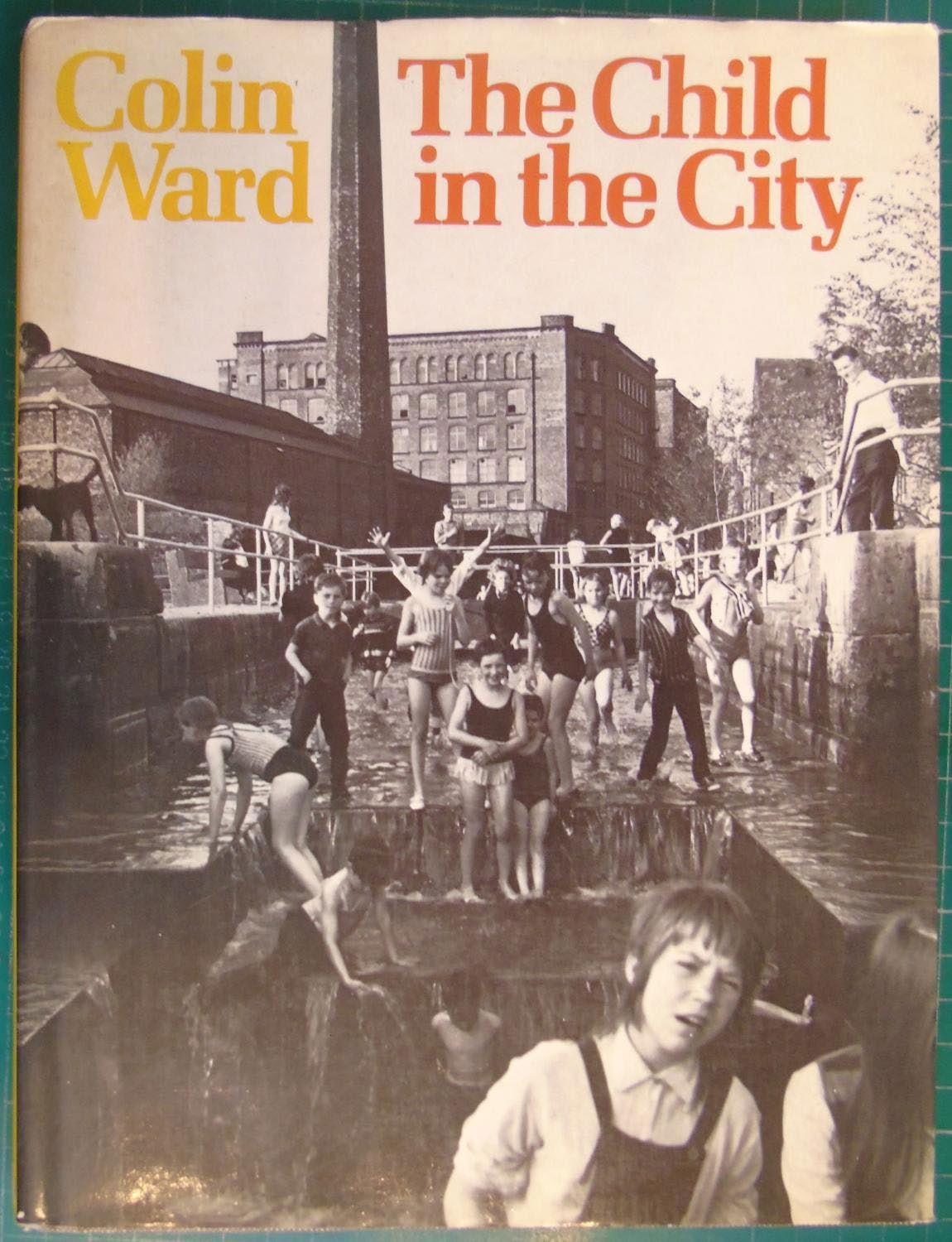
Source: https:https://anarchiststudies.noblogs.org/
“I am one of the few people I know with an interest in cities who has not visited Barcelona. It’s an accident of timing. For decades, I used to say that I would not go until I could sit at a cafe table on the Ramblas, arguing loudly about sex and freedom with my anarchist friends. [...] By the time this had become possible, in 1975, we met at a cafe table in the Campo San Polo in Venice instead, laughing over their magazine Bicicleta and arguing about what should happen to the shanty towns on the fringe of Barcelona, housing rural immigrants. Should there be dweller controlled upgrading on the Latin American model or new municipal estates on the north European pattern?” (Colin Ward, 2006)
Urban planning since always concerns with what is a good and sustainable density to live in. One of the classic discussions in urbanism is the one Oyon (2011) calls ‘compactness versus dispersion; a dichotomy at the heart of which is a mythological riddle of the Ebenezer Howard’s question ‘The People — Where will they go?’ Ward’s approach to density shows the multidimensional character of his approach to the environment. In his article, High Density Life wrote for the magazine Prospect in 2006 Ward opens his argument on what is sustainable density discussing if Barcelona and the way it represented in public is a good place to live. A premise is that a city with 400 households per hectare ensures what planners imagine as good urban life, vivid but now overcrowded, busy but not exhausting. Ward wonders how much of the role did urbanism had in creating that liveability. The relation between the density and liveability is considered beyond the flat idea of sustainability: “Whilst much contemporary green urbanism has argued that maximising densities in urban areas will optimise solutions for sustainability, Ward argues that we should be careful about embracing this new orthodoxy lest we repeat all the failures of post-war urban policy. “(Wilbert and White, 2011). In the text, Ward criticises the large scale multi-storey developments that come in place of old semiindustrialised suburbs. He claims that the image of a good life that architects and planners like to sell often presented as a dense and vibrant streetscape is taken out of the context from the old organic neighbourhoods strongly connected to their inhabitants. Architects simply do not manage to achieve this same image in their newly planned housing areas. Here Ward criticises quite directly dichotomy of right-left doctrines in planning claiming that if we look at the ‘failure’ of their densities, we understand that planning needs to seek for a third way. The third way is for Ward seeking a way to provide each urban dweller with a piece of land accompanied with a kind of social responsibility in this being more than property — it is a source of a healthy environment. With the idea of responsibility in making nature Ward connects the triangle of environment-individual-society. He concludes with again great quote of his colleague Peter Hall from the nineties on the growth of architectural production after the Second World War: “Didn’t it, unbelievably, result in an environment much worse than the one we had before? ... It’s chastening to ask what would have happened if we’d never trained the architects, but had spent all that slum clearance money quite differently. Suppose, in the Liverpool of 1955, we hadn’t said: ‘A problem of replacing 88,000 unfit houses, but rather: ‘a problem of making 88,000 houses fit,’ we could have given generous improvement grants, encouraged small builders, opened DIY shops. The environment would have been improved piecemeal. It wouldn’t have been very efficient—small-scale work never is—and a good deal of the basic infrastructure would have had to be renewed. But it would have involved people in fixing up their own houses and helping improve their own neighbourhoods.”
Environment is inherently personal — Child and the city
Ward’s most profound writings correspond with the topic of personal perception of the environment. Here he, in my opinion, climbs the hight of his idealism while making his ideas tangible and easily understandable. I will not dedicate a large amount of space to this topic since it is not precisely at the centre of my argument. However, I would encourage anyone to read the works of Ward also with the special vigilance for his sensibility of personal perception of the environment. The method he uses is reconstructing the common in everyone’s memory about space and discovering the social meaning of personal experiences. What we all share in our memory are similarities of spaces in which they happen, but even more, the environment that is recreated in that memory through constructed social constraints. As much as these constrains limit our imagination, they connect the experiences. Hence, personal in most public space remains intimate but still recognizable by the others. The best example is the book Child and the city (1988). In this book, Ward considers a child as a user of open space in the city and observes the way kid appropriates, negotiates and changes the space. It focuses on creativity and collaborative spirit in which this happens. It shows the potential for new levels of making a good environment if we give children credit for being city-makers. The book written in 1976 might appear obsolete, “yet Ward’s writings in this area are of continued interest because they suggest that if we valued play, and took some regard for the resourcefulness of children a little more seriously, then we might see a much greater unleashing of human possibility. Such points may sound simplistic to some. But such concerns work as alternative challenges to neo-liberal city governance and developments that work in tandem, but in more day-to-day practical terms, with political-economic critiques of city life, economies, and social-ecologies.” (Wilbert and White, 2011) With children, Ward demonstrates the true subject of the environment — the maker and the visionary, unbounded by politics and land ownership, unburdened by rent or bigger plan. Children that play, enjoy and learn in most direct contact with the environment are propagators of Ivan Illich’s convivial space that Ward quotes in Talking to architects, space: “that gives each person the greatest opportunity to enrich the environment with the fruits of his or her own vision as opposed to those environments which deny the possibility to the user and allow their designers to determine the meaning and expectations for the others. ” (Ward, 1996)
What could architects do in this triangle?
Colin Ward suggests how architects and planners should get engaged with responsible ‘making of the environment’ is the book Talking to architects (1996). One more collection of articles is Ward’s attempt to humbly address young architects from several, quite different directions. Few chapters are quite instructive: Alternatives in Architecture, The future of Design Professions, Self-help and Sustainability: The coming dilemmas of planning. I will recap just the first one since it is the most comprehensive overview (also intended as the introduction). Alternatives in Architecture is a transcript of the lecture given at the Sheffield University Architecture Society in 1976. It lists all the approaches architect and planner could take to alternate the design process, both in terms of result and process. Here is a brief overview of all seven alternatives.
1) Vernacular alternative — the architecture with roots in local traditions, what Frampton would probably call Critical Regionalism, is a heterogeneous, anonymous and massive heritage of local skills, materials and knowledge. Architects like Hassan Fathy and Charle Correa put a lot of their effort to retrace traditional relations of place and space with their practice and Ward sees this as a meaningful approach especially in the context of the crisis of resources and energy.
2) Ecological impulse — Making architecture a part of a reproductive and sustainable environment. Selfevident urgency for those who take part in constructing the built environment on all scales is probably most technical of all alternatives. However, Ward recognises that our ancestors would not bother to mention it since the use of materials and energy was economical and recycling was the general attitude in household management.
3) Adaptability — the possibility of design to change with time and needs is again something that our ancestors took for granted, but with modernisation, it changed towards total design. Ward recognises Conviviality — a concept developed by Ivan Illich as a way to understand space as organically changing and socially appropriated.
4) Spaces of counter-culture — those who know the squatting culture and struggles understand how hard it is to establish physical alternatives in the dominant social paradigm. What Ward here brilliantly recognises is counter-cultural space as an educational resource in which environment becomes deinstitutionalised: School that is a workshop, the market garden which is also an academy of music... He reconnects these alternatives to origins of anarcho-geography of Kropotkin and Goodmans.
5) Dweller’s control — although primarily a general principle, Ward recognises the dweller’s control as well as a professional attitude. He advocates questioning who is in control of the design process. What degree of inventiveness and freedom is given to the user before, during and after the construction? Examples he takes are John F Turner’s experience in Latin America where he as architect participated in processes of building by people in unofficial settlements and Walter Segal who developed a model of self-help construction with timber put in practice in London’s outskirts.
6) Syndicalist alternative - this one specifically refers to relationships of skill and building market. How to change relationships in the building process, especially since most of the use-value lays in the hands of those often disregarded and underpaid. Ward here recognises the possibility of Construction cooperatives and tradition of building as communal activity as an alternative to capitalist relations. The final result is a closed gap between designer, builder and user in which all possibly share the pride of craft, skill and responsibility for the product.
3.3 An anarchist approach to urban planning: Welcome, Thinner City (1989), Do-It-Yourself New Town (1976)
The pioneers of the idea
Especially important for the thesis is Ward’s literature in which he discusses the possibility of bottom-up urban planning. This topic is investigated in several of his books and articles: Talking houses (1990), Welcome, Thinner City (1989), Talking to architects (1996) and is present in many of his contributions to periodicals of Anarchy, Volunta, Freedom, among others. Ward chooses Murray Bookchin’s quote to conclude his article La vitta Nella Citta in the journal Volunta’s special issue Geografia senza confini from 1992: “The starting point is not the aesthetics with which traffic, communications or economic activities are managed. Rather, these new planners primarily focus on planning that fosters personal intimacy, multilateral social relationships, non-hierarchical organizational models, community living systems, and material independence from the market economy. Here the design did not start from abstract concepts of space, but from a functional effort to improve the status quo, and from the awareness of the free human relations that should have replaced it. The design elements of a certain plan came from radically new social alternatives. It was an attempt to replace hierarchical space with free space.”
In the same article, Ward gives two important notes to those interested in the topic. First, he acknowledges that the history of the planning movement had its fathers inspired by anarchist ideas. Here becomes obvious that Colin Ward and Peter Hall were in close collaboration since the argument and its elaboration is practically the same. They both recognize loose professional but strong ideological connections between two anarchist geographers Kropotkin and Reclus and British biologist Patrick Geddes. In this connection, Ward sees the environmental roots of planning when he says: “This line presents an alternative tradition that is present in western European thought and which, inspired by geography and ecology, developed a holistic the point of view on problems of relations between human and his environment.” (Ward, 1992). He develops this claim even further in the lecture given in Geneva in 1993 under title Unexpected Pioneers of Town and Country Planning that is later published as a chapter in the book Talking to Architects (1996). In the lecture, he traces the connection between regionalist and town planning movement extending a network of references between Proudhon, Kropotkin, and Reclus to Howard, Unwin and Geddes and overseas to Mumford and finally Ambercrombie. On top of giving them credit for their role in establishing an early discipline, he recognizes that their hopes as pioneers of planning for popular initiatives in re-shaping our environment have not been fulfilled. Colin Ward argues that the reason is that our capacity for technical evolution was not accompanied by comparable social evolution, something that could be seen as an argument complementary to Kropotkin’s Fields, Factories and Workshops.
“Kropotkin also believed that certain kinds of human-environment relations and social and spatial modes of interaction were more conducive to development of the human potential. Decentralism is the revolutionary social anarchist philosophy and socio-spatial form of organization that he believed would comprise the foundation of a new cooperative anarchist mode of living. These ideas are developed in several pieces of writing, much of which is considered prophetic in its anticipation of contemporary problems of food security and critiques of largescale enterprise, the dehumanization of work, and the lack of imagination in learning. Kropotkin’s version of ‘decentraiism’ envisions a multitude of associations federated for the purposes of trade and production, intellectual, and artistic exchange, as well as communal villages and urban neighborhoods federated across geographic and thematic boundaries for the purposes of distribution, consumption, and innovation.” (Breitbait 2009)
What is wrong with urban planning?
This incapacity to evolve in meaningful social organisations is probably why in his work Ward focused a lot on criticism of municipal administration and planning policies and the downfall of State’s provision of housing and urban landscaping. Probably the biggest body of work by Ward is written about this critique and is scattered over hundreds of articles and just a few longer essays that I don’t have the intention to present as an overview. Instead, I will try to illustrate what went wrong with planning on one specific example of Ward’s writing. There are two front lines that Colin Ward focuses on: (1)The New Towns and (2)Inner city. Here we could say that he misses the wider image like the one that describes Kropotkin with city-countryside integration. This argument could be countered by a complementary amount of books Ward wrote on rural traditions and countryside lifestyles on which urban residents are highly dependent: Goodnight Campers! The History of the British Holiday Camp (1986), The Allotment: Its Landscape and Culture (1988), The Child in the Country (1988), Cotters and Squatters: The Hidden History of Housing (2004). Why he focuses on the first two more ‘urban’ areas is explained in his discussion on Ebenezer Howard’s Garden city and misinterpretation of New Towns in England. Here he criticises the criticisers of New Town for their insensibility for mutual dependence of New Towns and inner-city areas. “What we are talking about is the missing half of Ebenezer Howard’s formula. He wanted dispersal in order to make possible humane development redevelopment of inner city-centre.” (Ward, 1989) The key questions on the verge of 21st century that Ward sets are: What is a city for? And who is entitled to live there? The urbanisation in the second half of the 20th century is again out of control for unaccountability of those in power and exclusion of citizens and local communities from processes. Continued failure to cope with the problem of land valuation caused a new wave of enclosure in which citizens of the inner city are limited to almost no power in deciding what kind of urban environment they want to live in. Like with housing Ward is critical of both, state’s obsession with efficiency and market’s fixation on profits. “The concept of a public/private partnership as a relationship between two sectors— government and the private market—is flawed by its exclusion of a third, essential actor—the residents of the community affected. Self-congratulatory messages about entrepreneurial successes and the proliferation of shiny downtown office buildings obscure the reality that many people do not benefit from all this success, and many are deeply and permanently harmed. ”
Or in other words what is wrong with planning is summarized by socialist Tony Judge: “The impression often confirmed as accurate on deeper examination is of a vast bureaucracy concerned more with self-perpetuation than with either efficiency or humanity” (Ward, 1990).
The Do-it-yourself Town Planning
“Fortunately, In British cities there a whole series of small but outstandingly successful examples of people on low income housing themselves and in doing so literally changing their lives. ” (Ward, 1989) So, as a solution, Colin Ward once again calls in the residents to take over the control over urban planning. Dweller’s control is also like in housing the key principle to anarchist approach to urban planning with a bit more shades of green. Urban planning should enable the mutual aid, self-help and direct action from dweller while not losing entirely it is the role of providing accessibility of sites for building, basic supplies to sites and social services, especially to those poorest citizens. Other more affluent citizens, Ward notes, take their dweller control rights for granted and naturally deriving from their status of the property owner. The essence of the argument is urban planning that stresses social management of these places that have social meaning.
How to achieve this? Ward recalls Kropotkin’s radical demands for the change of the form of governance away from the State towards more popular, more decentralized and folkmote like organization. However, he agrees with De Carlo that waiting for the revolution to realize it is not smart. It is a significant shift in the argument that probably attracted more architects and planners to anarchist ideas of the fathers of the planning movement. Not waiting for the revolution but instead using the tools that are at hand to make good and affordable urban and suburban life as accessible to as wide as possible circle of people. And Ward, although a bit more reserved to the idea, affirms again De Carlo: ”...urban planning can become a revolutionary weapon if we succeed in rescuing it from the blind monopoly of authority and in making it a communal organ of research and investigation into the real problems of social life.” Ward and De Carlo see urban planning as a form of radical pedagogy, school of politics and life in taking the control overproduction of one’s and community’s immediate environment. This might be why Colin Ward put so much time in education and writing books encouraging young people and adults to be engaged in reinventing what place is in a political and personal sense; to engage in planning and making of their cities and homes; and propagated open-minded approach to urban planning in Britain, like engagement with Non-Plan.
What Ward and DeCarlo reach for is social and economic solutions already in action by thousands of small scale initiatives around the world that could be called Anarchist solutions such as cooperatives, occupations, allotments, local currencies, community association, labour unions, urban farms and gardens. Altogether and wide and diverse toolbox that lives a life of itself. The question is, what could a professional architect or a planner do in that context. First, Ward proposes a method to learn to evaluate practices in the scale of control that dweller has in the process. The Arnstein’s Ladder of Participation is in that sense great way to understand how empowering is a particular action in urban planning. The final one Ward adds to the Ladder to describe to the current role of participation in many planning offices even in 2020:
-
Citizen Control
-
Delegated Power
-
Partnership
-
Placation
-
Consultation
-
Informing
-
Therapy
-
Manipulation
-
(Deception)
Ward goes much further in explaining how could professionals take part in radical decentralization of planning and most interesting articles on this topic are collected in the book Talking houses (1990) and are, among others: The Do-It-Yourself New Towns and The anarchist approach to anarchist planning.
The checklist
Finally, it is not strange to find that the final chapter of the book Welcome, Thinner City (1989) addresses the tenants of the inner city specifically and is written in the form of a checklist — or action plan. The ideas that Ward put in the checklist should resonate with every professional, especially those in the power of deciding. However, in the end, as Ward concludes, planning is to be handed to a citizen. Well-organized, well-briefed and well-motivated local people organized in decentralized bodies are capable of doing what they did for centuries: giving places and spaces social meaning through the endeavour of social management. The checklist for from below urbanism, according to Colin Ward, consists of the following actions:
1) Do something about Land Valuation
Those to whom the city belongs should keep accountable wealthier and more powerful citizens for the speculation, property market and exclusion. It can be done by maintaining the political will through pressure, initiative and solidarity. Two strategies specifically recognized are: using administrative and planning machinery to provide land and tools to those who do not have the resources and the second is to use the public sector money to subsidize the prices for specific needs. In other words, it is everyone to gain if the city manages to make property and land affordable to those who do not have resources.
2) Help People House Themselves, Inside and Outside the City
Housing cooperatives, Community land trusts, Tenant syndicates, Self-help housing associations and Construction cooperatives are just part of a large number of possible strategies for people to have their own home obtained outside of the market and not given from the state. Their financial viability depends on the network of local (and not just local) professional and advisory resources. Moreover, these groups need to be able to access materials that are cheap, ecological and easy to assemble. For those well-off, this might sound overly generous, but almost every suburb of a city the population above three million is built this way. The mainstream planning so far achieved in one thing: making those above certain income level accustomed to controlling of their living environment to smallest details and on the other hand, making the same thing absolutely impossible for the poor citizens. Ward sees self-organization as a natural response.
3) Give Real Encouragement to Small Enterprise
The city should thrive with small shops, workshops and local businesses. On the example of FIAT factory in Torino, Ward explains that support and survival of the local economy as well can be self-organized process driven by mutual aid and worker-citizen solidarity. In order to be so supportive, the organizational environment should ensure low overheads and access to credit. This can be
achieved through municipal support but also syndical action, trade association, local currency projects, cooperative businesses and cooperative or member-owned funds and banks. When supplemented with good advisory networks, fair and intelligent trade, financial services, good logistics and finally affordable spaces, the social benefits are enormous.
4) Making the cities green again
According to Ward greening of cities is improving in recent decades. It is a new norm of progressive governance of cities. New narratives on greener cities is a direct consequence of from below pressure by environmental groups and citizen initiatives. In the future, we should be able to imagine a more diverse biosphere landscape in cities. Ward suggests some categories beyond gardens and parks: play spaces, city farms, allotment areas, city nature reserves, urban wild places.
5) Find New Ways of Engaging the Young
The only purpose of current education is leading a young and unshaped individual to work or working with special groups of youth. Today even that fails. The differences between a rich neighbourhood and deprived inner-city or suburbs are ever more disabling young ones to develop in independent and empathic persons or successful citizens. Being stuck in a place is a feeling that leads to depression, criminal behaviour, apathy. Attaining new skills and interests and objectives outside of the schools’ system has double-sided benefits. Those for the young are self-evident, but it is also a community that earns this way. Somewhere in the roots of urban planning, Ward finds the incentive to educate and empower others. Ward believes that kids that are born unprivileged should be given a chance of career job aside from school tracks. One possibility he sees is social and environmental maintenance of the city. A good example can be seen among the young Catalans and their volunteering habits.
6) Give access to Tools and technology
A community workshop is a place that provides the community with access to machinery, work-space and advice, in order to meet their needs and make their things. The community workshop should be expanded into a base for the enterprise and private gain as well—skill exchange, educational facility, especially for the young ones and finally starting point of community’s independence.
7) Change the Terms of the Debate
The planning drifted into a stand-off between private and public enterprise as only possible doctrines in city management. The real needs and problems of the poor are ignored in this ideological conflict complicating the administration, making housing expensive and unmaintained, creating urban environments hostile to the poor and schooling new generations of the same powerless citizens. A long history of mutual aid and citizen solidarity decayed and are not any more responsible for good negotiating positions in defining common interest. Only the renaissance of social solidarity, cooperative spirit and mutual aid on a larger scale can strengthen the position of the poor in the development schemes of the city.
Conclusion — The from-below green cities of tomorrow
What is probably interesting to answer in the remaining part of the paragraph dedicated to planning is: What kind of result we could draw from insisting on dweller’s control in planning? In a very structured manner, Ward responds in the book Welcome, Thinner City (1989). Personally, the most enjoyable work of Ward gives almost a television series Wire like account of urban life, and similar bad guys/good guys complexity. He opens it with saying: I like cities and continues with declaring that the city is a common property of its inhabitants, in an economic sense and planning should be a service to that fact. That simple. But the reality is not simple. Unlike other books presented in the thesis, this one is not a collection of his lectures and articles. Instead, it is a response to the award competition for the book on inner city issues (Ward, 1990). Not so keen to win the award, Colin wanted not to let wrong things to be published that will go on with demonising the inner city as the home of the underclass of unemployed, single parent, or immigrant households. Instead of analysing what is wrong about the inner city, Ward presents a counter current. In a flow of examples and memories on conversations and meetings he had with citizen representatives, politicians and housing activists Ward starts from looking what is positive about the Inner city and soon discovers the community as a key factor of positive processes in urban cores. After briefly explaining the history of citizen struggles, protest actions and forming of Community associations and Housing Cooperatives on examples of Liverpool, Glasgow and Coin Street in London he presents what kind of spaces and services can be extracted from that kind of actions. Four last chapters could be interpreted as a manifest of the from-below urbanism but with a strong component of environmentalism. They are centred in three central topics and one know-how script. First, he talks about housing in chapter City People Can House Themselves; the second Can They Make Jobs Too? The Italian Lesson discusses small economies and industry and the third Green Cities talks about green spaces in and around the inner city but also food production and education of young. In each of the themes, Ward offers quite concrete examples and ideas that altogether make an image of what ecological urbanism could achieve. And not to be misunderstood this image is not different but complementary to the one of Kropotkin. It observes more fine-grained possibilities for the citizens taking action in the realisation of the anarchist ideal, avoiding the joker ‘after the revolution’. Ward recognises a long history of struggles of tenants, landless and squatters as more than a symbolic challenge to property and capitalism and among these, environmentalist movement often emerges as Ward’s example of continuous collective effort to reconnect the city and nature. These are the foundation of Wards proposal for the DIY New Towns. There are several parts of the Wards’ proposal that I want to present in the following lines as a conclusion on what ought to be ecological planning from below. Great illustrations published in a book called Radical Technology in 1976 by Clifford Harper, anarchist, artist, illustrator, close friend and collaboratior of Colin Ward, additionally illustrate te elements of the proposal. The version of the drawing here used is from 1974, later differently layouted for the book.
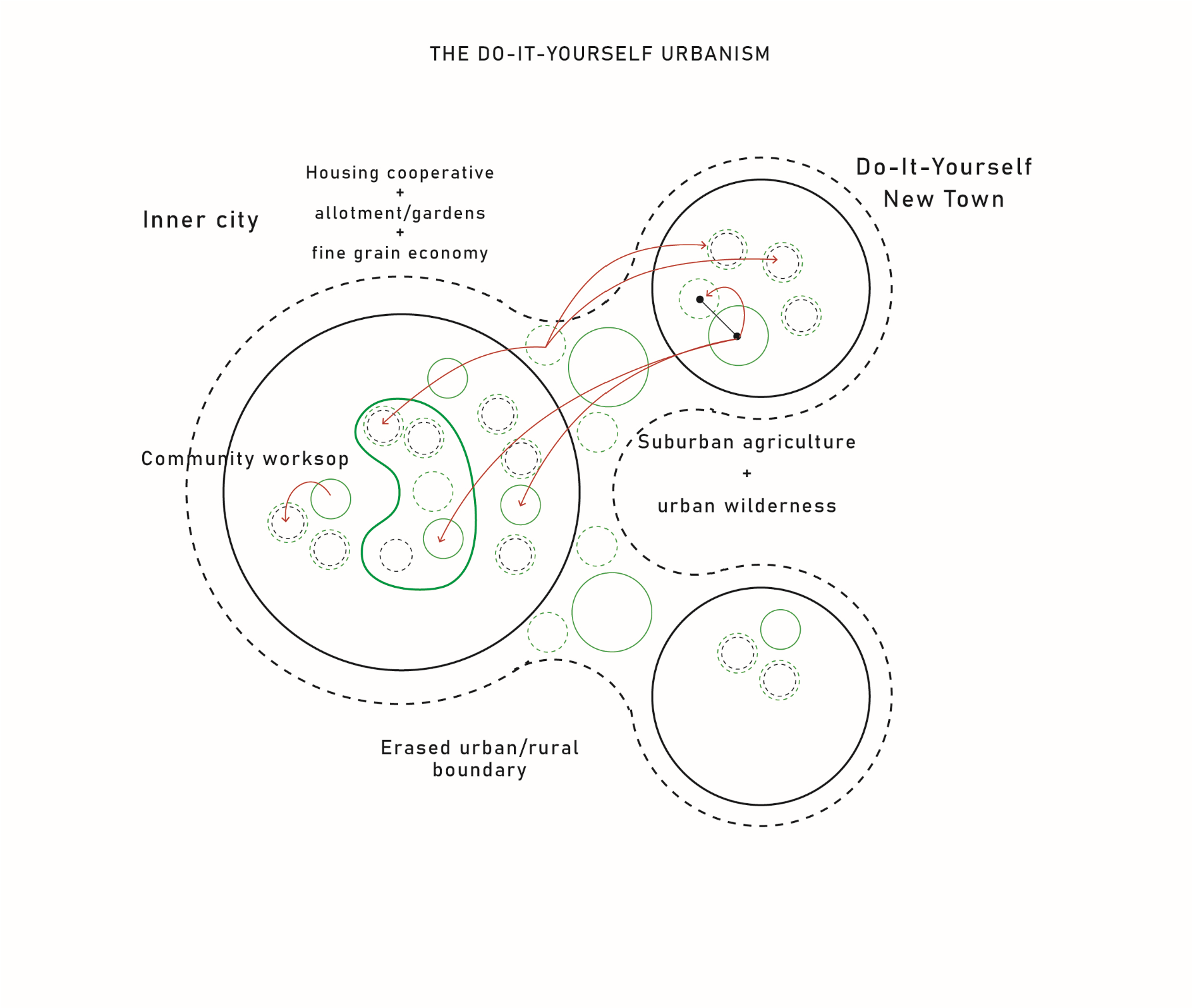
Source: authors
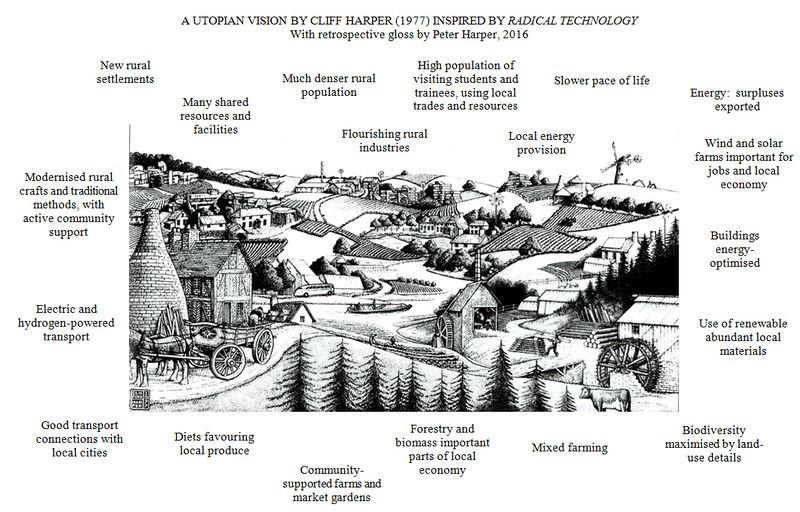
Source: http://greengalloway.blogspot.com/2013/06/past-visions-of-future.html
1) Community involved — As already described, Ward believes in dweller’s control in planning. He finds evidence that the community engagement when defending or occupying urban resources or spaces for the public good is more efficient than large scale public investment scheme or private-public partnerships. Citizen associations, housing cooperatives and squatting groups are capable of shaping the urban landscape from the bottom up both socially and physically. The planning process should open them space, provide tools and materials and ensure long term security. The knowhow and contextualised knowledge they have themselves.
2) Site infrastructure and access to finances — Urban planning would or should not disappear as administrative service. It has some functions that are necessary and impossible to organise from the bottom. Supply of basic infrastructure, energy, water, public transport and land management together with allocation of finances for local community initiatives are some of these things. It still does not mean that even this administrative activity can not be managed as horizontally as possible. The example given is the Coin Street in London, where the resident managed to build the framework of access to long term credit and ensure that tenants control the expenses.
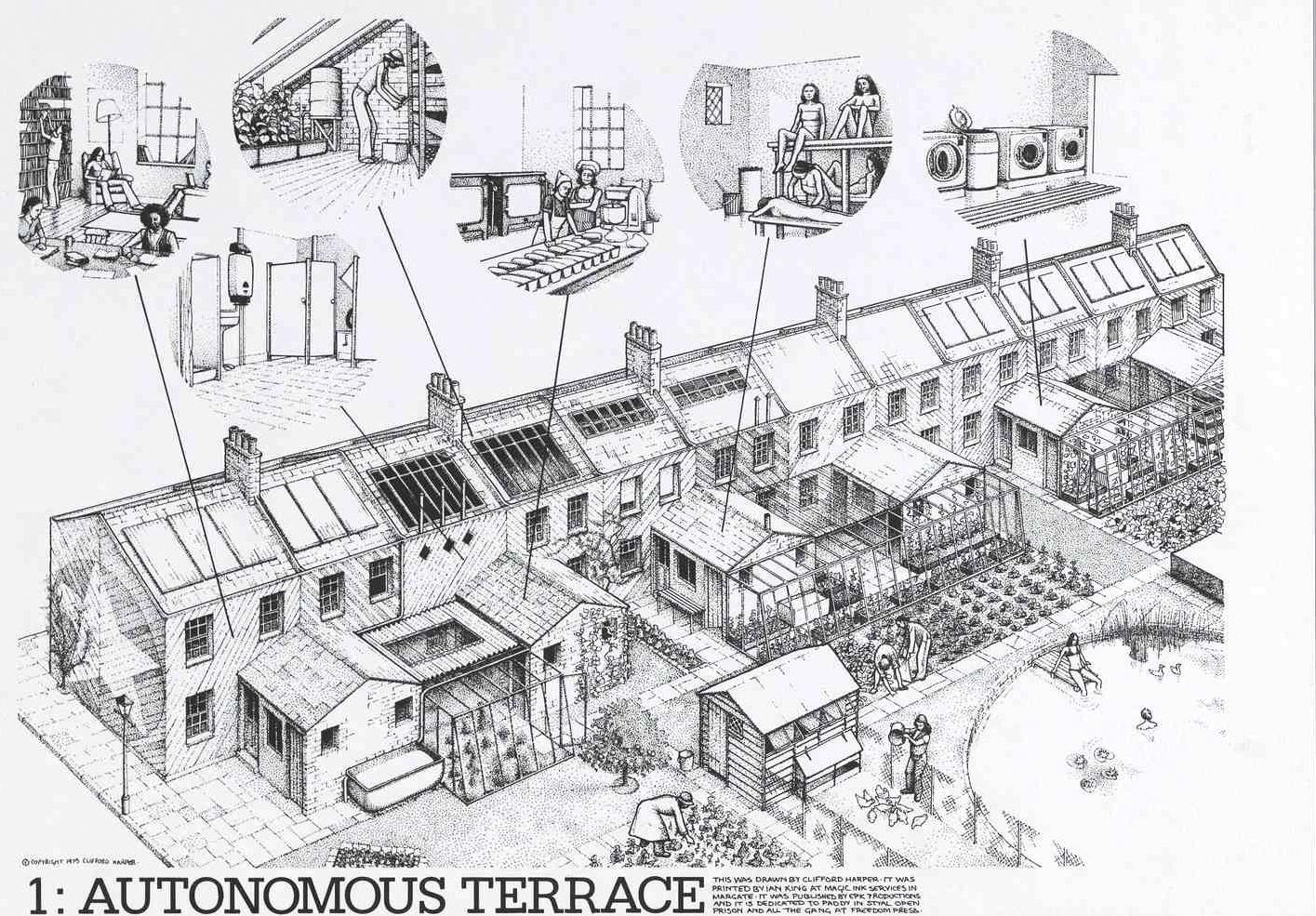
3) Self-help housing - Numerous examples that Colin Ward uses to prove that people can very efficiently and valuably house themselves. The neighbourhoods built by residents are morphologically undetermined. However we know some things: They are conglomerations of low dense, adaptable and upgradable houses with backyards, food gardens and common gardens. Inner spaces, squares and corners are occupied with workshops and other facilities. The land is usually collectively owned, but apartments and buildings are private. Different phases of construction, design and maintenance are represented through formal associations of included users and supporting professionals. All this has an aim, as members of one London based Land Trust explained to Ward, “to take housing off the speculative market. [...] What people put in the house they get back. The aim is simply to keep housing in the hands of local people.”
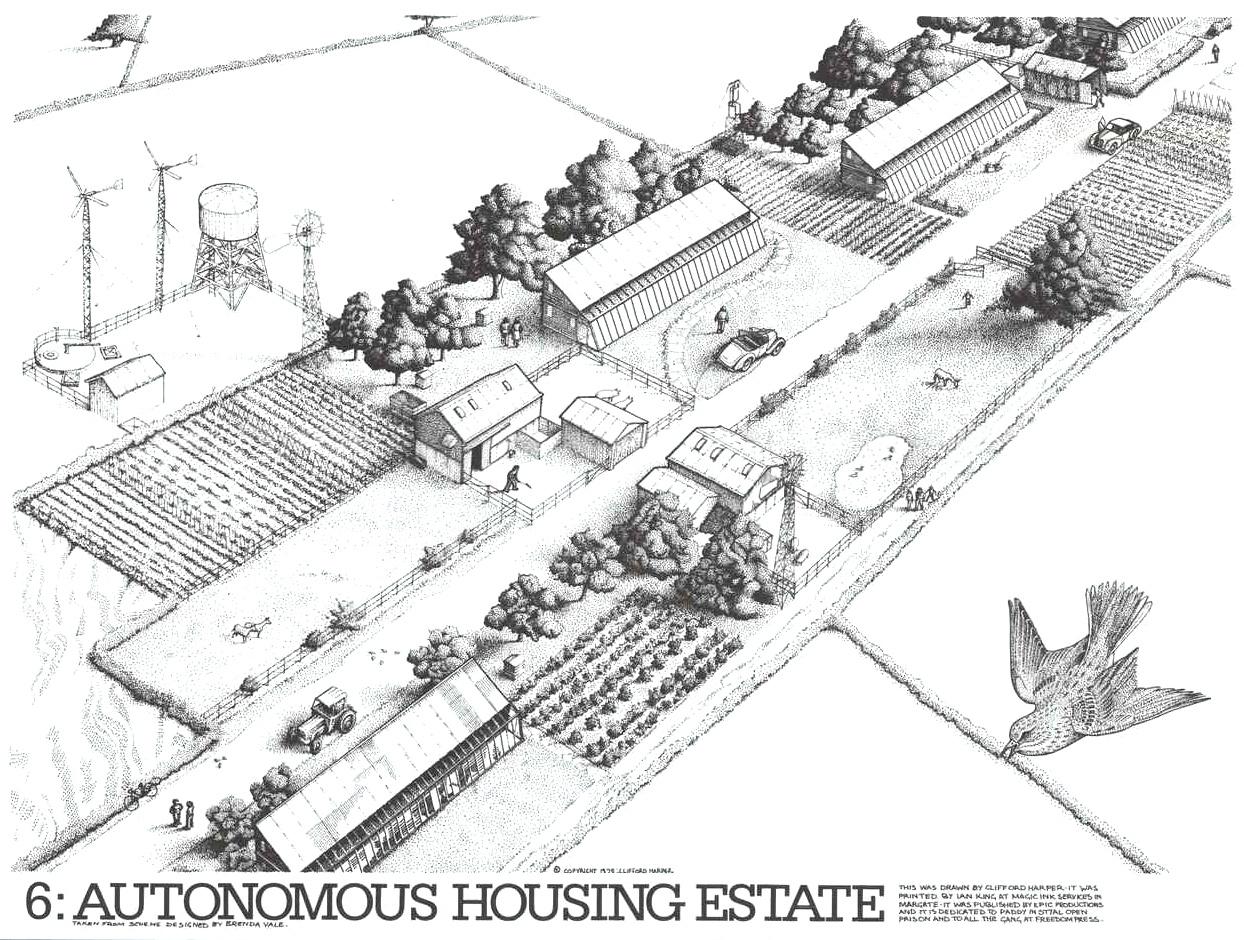
Source: http://greengalloway.blogspot. com/2013/06/past-visions-of-future.html
4) Fine-grain city — Small economies are the greatest value that a city can preserve. Most of the jobs are ensured in workshops, manufacture and small industries that are integrated into both cities inner courts and suburban brownfields. Large industries make a large part of the pie, but they are surrounded by repair shops, construction material stocks, recycling compounds. The cities value arises from artisan and skilled product, and environmental benefits are reflected in better use of materials, less intensive mobility and less dependence on global trade.
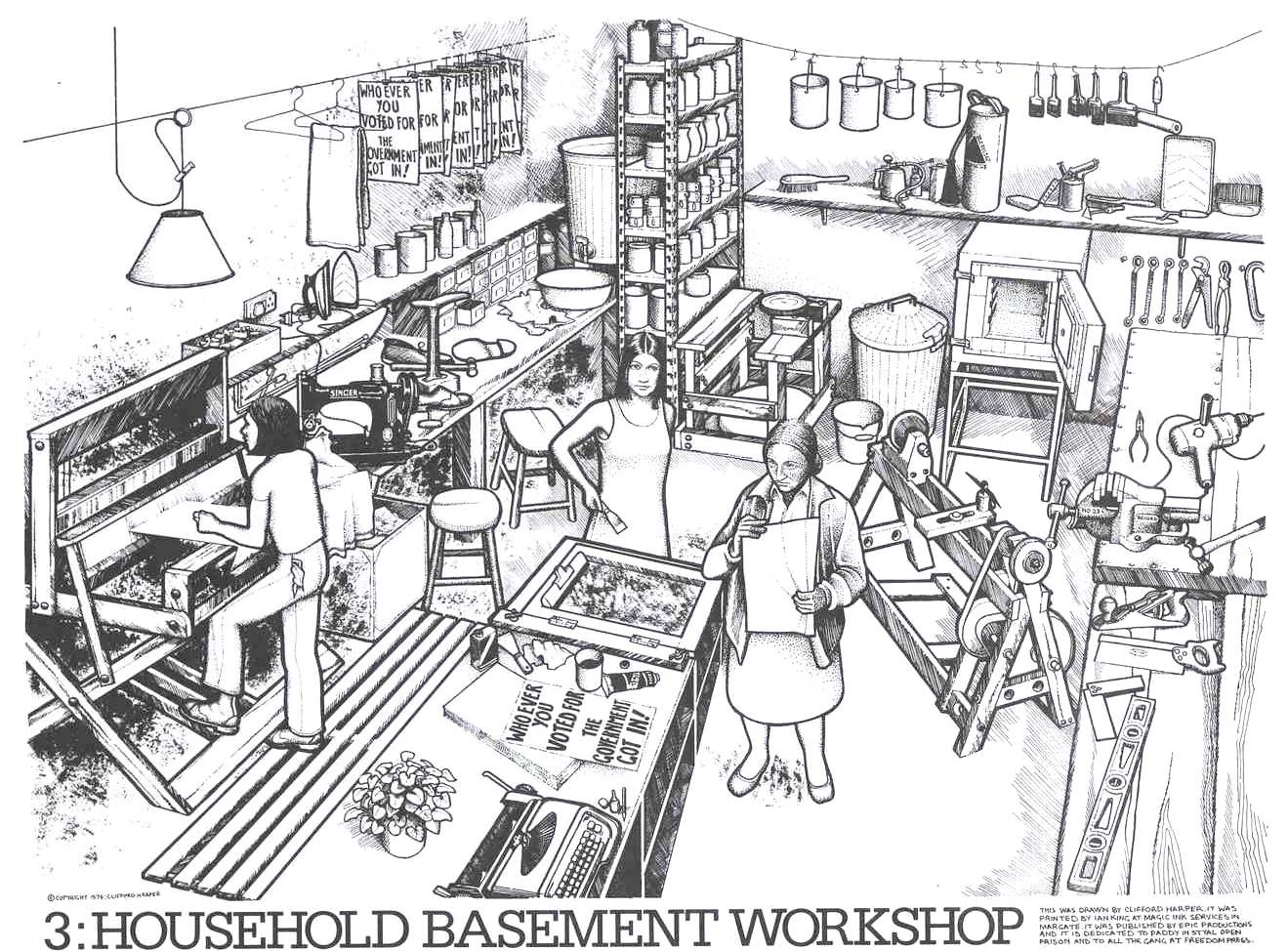
Source: http://greengalloway.blogspot. com/2013/06/past-visions-of-future.htm
5) The community workshops — Between houses, Ward places many simple workshops. Ward imagines them as educational facilities, almost school like institutions where one can borrow tools, learn skills and make things. There also exist workshops for other creative processes like writing, arts and music. These projects are nor public nor private amenities but community organized and dependent on the dedication of its users.
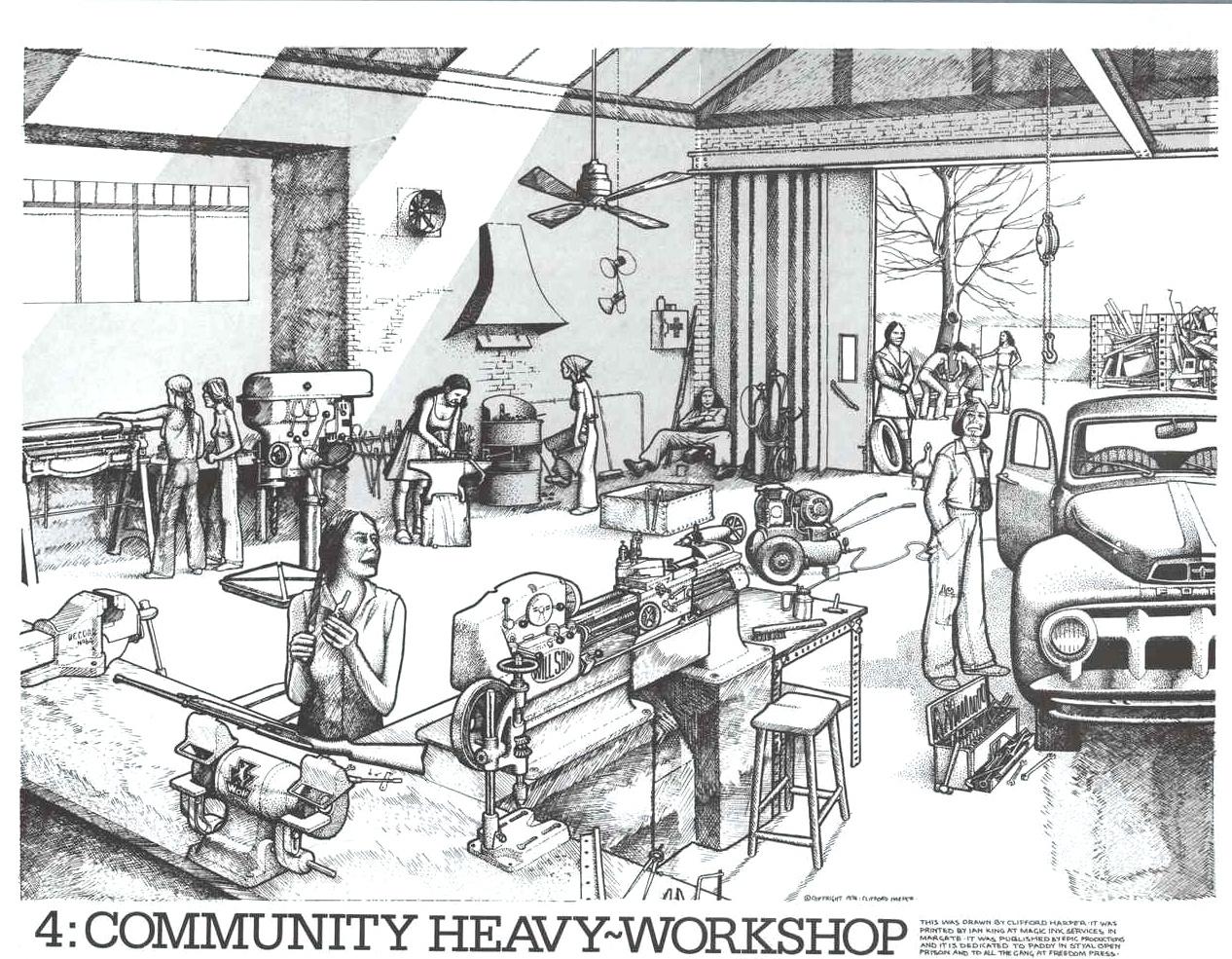
Source: http://greengalloway.blogspot.com/2013/06/past-visions-of-future.htm
6) Green city — The urban and nonurban green is more than just colour on the map. Ward recognizes wildlife and wild cityscape as something that is not managed by the communal services. They are to let be. Parts of the city are used for excursions, like the island of fresh air and sun. Aside from them, there is a new infrastructural layer of the city. Food. Outskirts of the city are filled with urban farms, the inner city with allotment gardens and backyard with rows of cabbage. City in that sense is a place of urban wilderness and diverse sensorial experiences in which it is hard to distinguish what is ‘urban’ and what ‘rural’ since as he says this division is artificial and reversible.
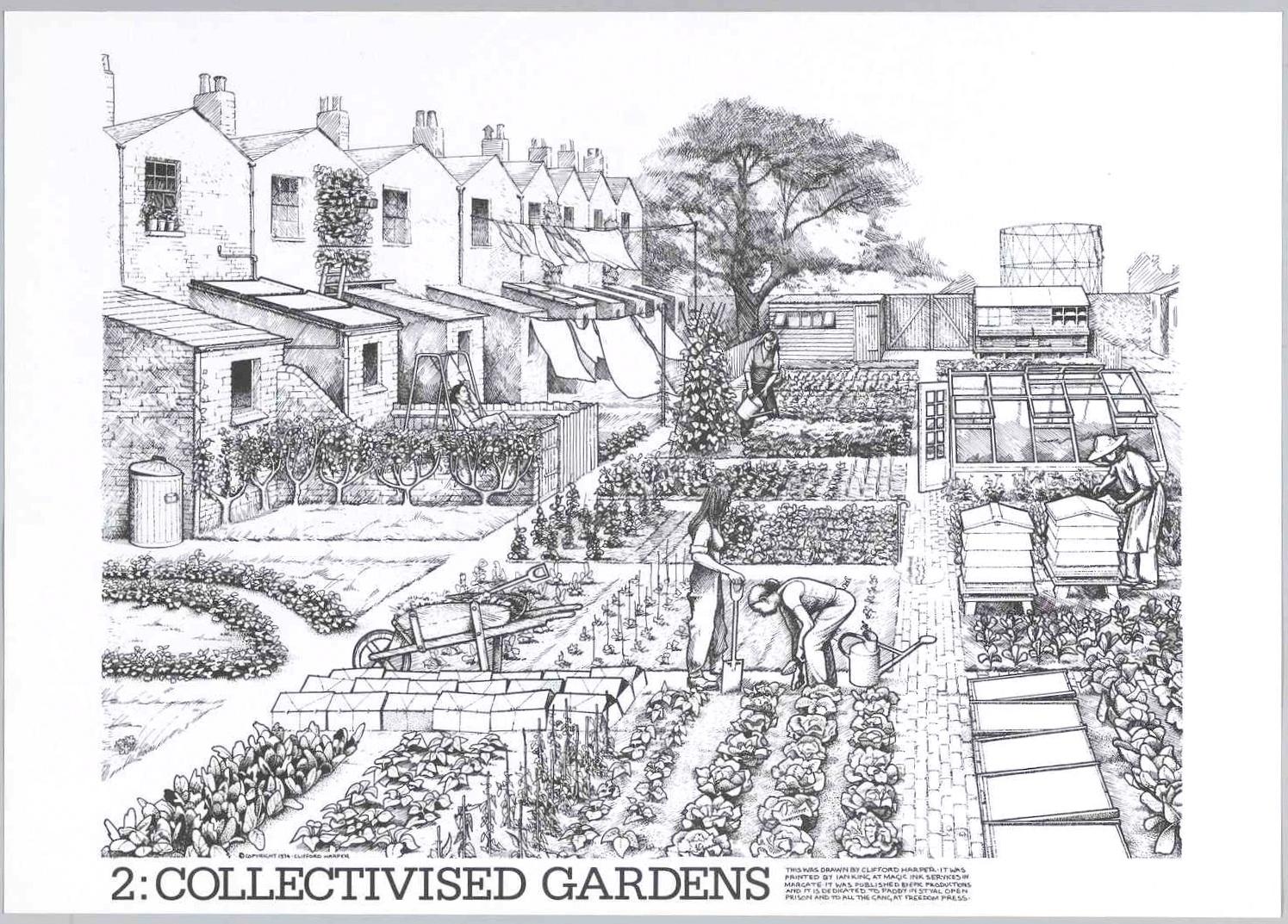
Source: http://greengalloway.blogspot.com/2013/06/past-visions-of-future.html
The Do-It-Yourself New Towns, as described earlier, are autonomously built urban environments with a similar spirit to Ebenezer Howard’s Garden Cities of Tomorrow but with much more cooperative and direct action-driven inhabitants. In these settlements, the urban planning and local authorities are minimized only to site provision and essential services. New Towns are a hybrid of cooperative urbanism from below and the ecological idea of self-sufficient suburbia. Maybe a beautifully rounded comment by Myrna Breitbait concludes the intention, not only of Colin Ward, but a whole thread of decentralist geographers and architects:
“Social anarchists do not draw precise blueprints for a new society or the built environment that supports it, believing that alternative social and spatial formations must emerge from precise historical circumstances as well as local preferences, needs, and assets. The broad objectives of a decentralist vision are nevertheless clear to: underscore the importance of personal freedom within the context of social responsibility; allow the free development of self while supporting the freedom of others; and enable continuous growth and change in environments that have the ecological and social capacity to sustain present and future generations.” (Breitbait, 2009)
4 Dialogue
Following paragraph is the conclusion of the research in an experimental format. Since my aim was not to make a completed comparison of two authors but to recreate the historical and ideological thread, I decided that it is more interesting to confront the two ends of the thread in a fictional conversation between Peter Kropotkin and Colin Ward. As a rounding-up paragraph of open-ended research, I hope to make some interesting parallels that until this point did not emerge in the text and to let the study arrive in contemporary times. The mere possibility of this Dialogue in terms of content suggests that the thread of continuous proto-ecological and decentralist thought on urban issues among geographers, architects, and planners exist. More precisely, I claim influence on ecological urbanism through two lines of influence: a) urbanism from below and b) city-countryside integration.
Imagine a late afternoon in the back alley between two layered brick houses in London’s Whitechapel High Street. Through two small windows and protected with the set of iron bars (put there after the neo-fascist bombed the building in 1993) one can see inside of the editorial office of Freedom Press, editorial founded by Peter Kropotkin and Charlotte Wilson in 1886 and run by Colin Ward during 1950s and 1960s. Inside two figures sitting at the table. The year is 2013, and the Freedom Press was just burned in an almost devastating fire caused by an anonymous arsonist. Numerous originals of Freedom journal from the early 1900s are now ashes. The two sit with some burnt issues of post-war Freedom magazine around their feet and drink the only bottle of red wine around.
Peter Kropotkin (PK): Nice to see the Freedom is still on fire. Just kidding, but feels good to be back 127 years after and see it as still active place. Seem our ideas are hell loose and unpopular. What is happening with the ‘freedom’?
Colin Ward (CW): Seems bizarre that a shop opened at the height of Victorian romanticism and gone on relatively unscathed through far more conservative regimes to be firebombed well into the 21st century. We seem to be in a burning era though-flags, ‘Satanic Verses’ Korans and poppies. Never a need for it with books. The good ones will always be about, the bad die of their own inanity. (Meltingman, The Guardian comments, 2013)
(PK): Tell me, what could I learn from your times?
(CW): First thing is that now we are pretty sure that revolution never liberates neither the people nor the land. As you know, the Bolshevik’s revolution was complete failure early in the beginning and, let me tell you, fifty years later, it ended as one of the most authoritarian societies on the planet.
I would say that your Russian compatriots’ revolution was, in this case, a spontaneous catch-up with land enclosure and forced depopulation of the village that happened in England two hundred years earlier. We call that time The Great Enclosure (Ward, 2000). As you know, the land was confiscated and nationalized just like you imagined in The Conquest of the Bread (1892). Well, not to redistribute it, but to treat it as the property of the State. The movement today left this whole idea of collectivization aside. Sometime after the first World War, we had another one that we call World War Two that could be practically seen as a consequence a global reactionary revolution that gave birth to two fresh imperialist blocks: The USA and USSR. The period hard to summarize, to be honest. Technology took a great place in recent history, but not with as liberating effect as you would imagine. What you criticized about inconsistencies of worldwide international trade and mass production propelled into a quite authoritarian and competitive society, polluted rivers and oceans and destruction of working class. I would say what we nowadays have is highly homogenized and centralized society. The property got its other pole, the Finance. Another thing hard to explain, but let’s say, what Property destroyed with its rigidity and inefficiency, Finances destroyed with its fluid and fictive logics of money circulation. Well, simply, both are centralizing power and wealth in the hand of the few. The world after the Second World War went into a spiral of renewing and expansion of urban areas in which integration didn’t happen but total urbanization of village. People’s differences, alienation and incompetencies are even bigger than before. We are stuck in a permanent struggle in which our ideas are worth only as much as they can be lived in between the system we fight against. What we, as comrades, are looking for nowadays are anarchist solutions to everyday problems. Something you were looking for in Mutual Aid. We don’t care about the grand narratives any more. They failed us.
(KP): Well, struck my nerve to hear all this, but in fact, some things are as I predicted. The division of labour inevitably had to lead to decay of standard for labour men. I was hoping that technology will have a more decisive role in making people freer from manual labour. I hoped for the smaller machine to be at every worker home to produce on a small scale and that electricity and free transport will make life much more comfortable. Especially that it will provide people with opportunities to enjoy fruits of both worlds every week: the city and the countryside.
(CW): That in fact, happened. First, we do move much easier and faster. I wouldn’t say cheaper. At this point, thousands are literally flying over our heads, those of us who are lucky not to be born in a wrong State without a passport. And the other thing is that the women are not any more bounded to spend their life serving their families since there are water, electricity and many domestic machines that made domestic labour less intensive. The technology was crucial for this, and their struggles, of course. It is one revolution you didn’t foresee. The women of the world fought and changed their position in society. The situation is not yet perfect, but significant changes happened. Women became a critical political subjects. You honestly could have given more attention to this since it started in your time...
(PK): Yes, I know, Emma told me something but I wasn’t listening. You know me, I expected women’s’ liberation to be achieved after the Revolution. But don’t get me wrong I did keep a close eye on the feminist movement in Russia back in the day. I made a press cuttings on the emancipation of women in Russia that I kept in my private collection. Occasionally I did debate the issue with comrades. Still, I should have considered that equality comes to hand to hand with the great cause of fighting the injustices of working-class society. Well if you say that the Feminist Revolution happened, that must have freed a large amount of new labour. It is half of the population that can take part in the production. How did it not result in an abundance of goods in the elimination of the classes of the poor?
(CW): Well, first of all, someone still has to take care of all these invisible tasks of care-taking and maintenance. This is slowly shifting away from being a gender-related responsibility. And second, not that England is still the centre of the world if we talk about massive factories. They don’t need that much of raw labour force on the Island any more. Except during the wars, and that is precisely when women joined the production line, to jump in for the poor boys who went to die to other continents. Nowadays, the production moved to China as you miraculously predicted in Fields, Factories and Workshops (1902)!
(PK): Nothing is a miracle!
(CW): This idea, more labour force equals more profit is true, but your analysis misses the other side of the balance. It also needs a consumer to buy what is produced. And overproduction indeed is a great issue. And this is where the economy changed a lot. Nowadays, the market depends on artificially created demand and not the production outputs. Same goes for profits. And this is much more alienating process than what you predicted. To put it simply, the profits went up, and the wages stayed the same. The production and consumption did grow immensely, but the wealth was not redistributed. It is accumulated in an even lesser amount of pockets. Women are part of the labour market but still disadvantaged, underpaid and restricted to from being in power. However, as I told you, wealth nowadays does not come from the production of goods in factories. At least not in old Europe. More and more, the primary source of profits is housing. And you wouldn’t believe how essential it is for the reproduction of economic conditions of both wealthy class and poor household.
(PK): So, you are telling me that housing as a social and political dynamic goes beyond a basic need. So how do people live? Is it affordable to rent in London, could I pay it with 30 pounds a week I earned? Did they return to villages? They must be growing food in their gardens in greenhouses! Housing can be a source of work as well, I understand. I just never imagined it as a starting point of one’s autonomy. I did consider how much of the house and garden, one needs to be self-sufficient, but you know we are sociable beings and that to start a revolution, one needs to get out on the street. But hack with revolution you’d say...
(CW): Housing is a topic I could spend hours talking about. First, yes, it is a source of work, but it is also a source of wealth for the landlord, as you know. You would be surprised, but two things changed about housing. First is that much more people own their home. It is possible within the person lifetime to earn enough to buy a house with a garden. However, a lot of working people remain out of this possibility and therefore, the second big change. The State produced something we call Public or Social housing. It is housing rented from the State by the worker.
(PK): Great! That comes close to what I imagined as that housing should as material property be collectively distributed while privately consumed.
(CW): Well, yes and no. A lot of people were housed and given a chance to rise from misery; people live in less dense households and have better standards. On the one hand, it was the end of a miserable life in industrial cities; on the other, it was the end of rural sovereignty because life in the city once again proved cheaper and easier. And the other problem is the market. Yes, there is a housing market... The problem is as you also predicted, the right to property overtook the right of use, and there are thousands of empty homes and even more homeless people on the streets. The prices of housing are going up for decades. With as little as 30 pounds a week you’d live under the bridge in London nowadays, we pay 400–1000 pounds a week for rent!
(PK): How to put it. It doesn’t surprise me. The distribution of wealth is more than just distribution of justice, and the economy is more than the efficiency of the market. In organized distribution, is the key to collective management of resources. Did you really lose the contact with the traditions that preserved and reproduced, through generations of collective genius, mutual aid and support? What do you strive for if not revolution?
(CW): If you would now write about where does the Mutual Aid emerge in society, you would write a lot about housing. Also, before I jump on that, to be honest, institutions of mutual aid are less and less strong. They are still strong in crises and amongst the poorest strata. People occupy new and defend old spaces appropriated for the housing of poor and migrants; they join in building houses together in Housing cooperatives and Tenant Associations, people gather to protest and defend parks and public infrastructures. We call them urban commons. But don’t get me wrong. There is little to connect with rural traditions on commoning. The countryside lifestyle is destroyed, and all this domestic trade and anonymous genius of the village that you gave credit to is endangered by the State and resulting in environmental degradation and alienation of people from nature. Incredible administrative and neoliberal apparatus is created to ‘represent’ the public interest. But as you said, nothing can present us better than ourselves.
(PK): You want to tell me that not only does the mutual aid fail to provide autonomy to the popular masses in particular issues, but there is no possibility of self-sufficiency even in the village?
(CW): Look, the development on the global scale went in the direction that you criticized in Fields, Factories and Workshops. The market and the State are continually expanding their territorial influence, leaving less and less space for self-sufficiency. Being dependent is as you noticed the inevitable outcome of the division of labour but also centralization of power. We live in a built and human manipulated environment, and the approach to self-sufficiency I advocate is a responsible making of nature. This is why I shifted my focus from mutual aid to dweller’s control. You left mutual aid rather instinctive, almost a natural law of how things are. With these levels of centralization of power and enclosure of resources, we need a more political demand for dweller’s control. I expect people to, instead of demanding a revolutionary wave to erase what is wrong with society in fire and flames, organise into bodies of mutual aid that incrementally changes conditions of everyday life. Self-sufficiency is, in my opinion, pragmatic mission, tactical mentality and not an outcome of idealism, not an ethical principle. People should grow their own food because they can not because they should. Same goes for housing, education, labour etc.
(PK): Don’t wanna be rude, dear Colin. But in my crew, you’d be considered a softy. Let me think for a moment...What you propose does or does not have a systematic dimension? How possibly it changes the conditions of economic relations? After a terrible correspondence with Lenin, I did give up part of my optimism on revolution as long as the intention of better State leads it. But what we believe in, a true society from below must have a principle to enlarge itself, to provide needs on all levels. How do you imagine it?
(CW): Your cyclical and systemic approach to resource management is an environmental message that comes out strongly today. We screwed the nature with extractivism and ever-growing economy. You might not conclude it explicitly in your works, but all systems have limits. And this planet of ours as well. And we reached them. The disintegration of human-nature relationship led to dying of species, to irreversible pollution, to us thinking about something we call Climate collapse. The world is warmer and dryer place since you left it. And once again it confirms your geological and biological discoveries: Climate is a factor of human civilization much more than we can perceive. And we change it to our own damage. I honestly do not believe that system can be changed any other way but incrementally, similarly like we change the climate. It is a systemic change but on a long-term timeline. And, to be honest, it might have been that we were both wrong. We should have been less anthropocentric about our environment. The planet is as well a political subject, and there is a movement towards downscaling our economy to fit its limits. It is called degrowth, and it might be an inevitable future. The question is how much of dweller’s control will we have over it.
(PK): So, in this spiral of violence, greed and power accumulation there is inherited stupidity. I knew that. I also knew that there is intertwined spiral of mutual aid that exists in parallel. What I didn’t understood is how on earth are they so out of balance. Indeed the Reclus’s idea of nature was more radical than mine, but Nature was at the centre of my perspective as well. The Mutual Aid is effort to prove that nature is social. Still, time proves that sociability of nature has its opposite side. The same like with feminist movement, we can’t wait for the social revolution to change the people’s relation to natural world. We should hear the voices that Reclus wrote about. We are Nature’s consciousness. And integration of functions comes from their mutual dependence. The Mediaeval city depended on medieval village. Interdependence is much more critical vector of life than independence!
(CW): Right, so there is no country-city integration without from below autonomy of action. And other way around. So it’s hierarchical pyramid of principles: Interdependence is more crucial factor of integration than independence, BUT autonomy of each element to be self-organized and freely associated is crucial for the balance more than interdependence!
(PK): Bring me machine to write this down! Bread without wine is not worth the conquest!
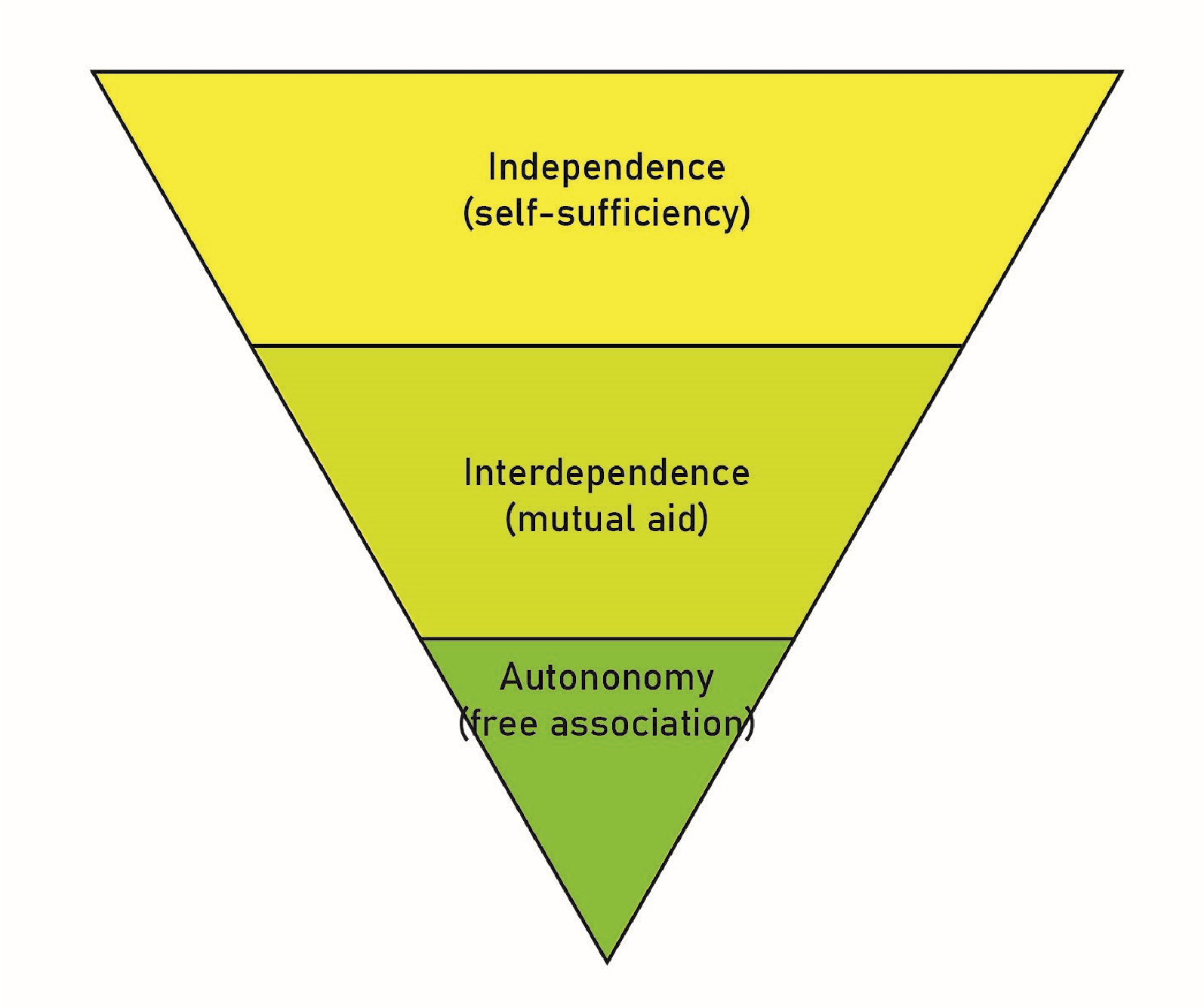
Bibliography
Note: The references to the work of Peter Kropotkin and Colin Ward are listed after the biographies of the authors. For this reason they are not listed here.
Araujo, Erin, Federico Ferretti,AnthonyInce, Kelvin Mason,Joshua Mullenite,JennyPickerill,Toby Rollo, and Richard J. White. 2017. “Beyond Electoralism: Reflections on Anarchy, Populism, and the
Crisis of Electoral Politics.” Acme 16 (4): 607–42.
Breitbart, Myrna. 2009. “Anarchism/Anarchist Geography” 1: 108–15.
Carlo, Giancarlo De. 1972. “Architecture ’ s Public.” In Architecture and Participation, edited by Peter Blundell Jones, Doina Petrescu, and Jeremy Till. Spon Press.
Ferretti, Federico. 2011. “The Correspondence between Elisee Reclus and Petr Kropotkin as a Source for the History of Geography.” Journal of Historical Geography 37 (2): 216–22. https://doi.org/ https://doi.org/10.1016/j.jhg. 2010.10.001.
-------- . 2019a. ”Anarch)s>mi/Anarch)sttGeographies.” International Encyclopaedia of Human Geography, Amsterdam, Elsevier 2019, 5–10.
-------- . 2019b. “Networking Print Cultures: Reclus’ Nouvelle Geographie Universelle at the Hachette Publishing House.” Journal of Historical Geography 63 (January 2019): 23–33. https://doi. org/10.1016/j.jhg.2018.09.001.
Goodman, Paul, and Percival Goodman. 1947. Communitas — Means Of Livelihood And Ways Of Life. New York: Vintage Books.
Guillaume, James. 1876. “Ideas on Social Organization.” https://libcom.org/files/james-guillaume- ideas-on-social-organization.pdf.
Hall, Peter. 2014. Cities of Tomorrow: An Intellectual History of Urban Planning and Design since 1880.
Harman, Oren. 2018. “Peter Kropotkin: Anarchist, Revolutionary, Dreamer.” In Dreamers, Visionaries, and Revolutionaries in the Life Sciences, edited by Oren Harman and Michael R. Dietrich. University of Chicago Press. https://doi.org/10.7208/chicago/9780226570075.001.0001.
Malthus, Thomas. 1798. An Essay on the Principle of Population. London: S.Johnson.
Marshall, P. 2009. Demanding the Impossible: A History of Anarchism. PM Press. https://books. google.hr/books?id = QDWIOL_KtGYC.
Masjuan Bracons, Eduard. 2000. La EcologiaHumana En ElAnarquismo Iberico: Urbanismo “Organico” o Ecologico, Neomalthusianismo y Naturismo Social. Antrazyt Series. Icaria. https://books. google. hr/books?id =4gv_Wt8d PzoC.
Oyon, Jose. 2011. “Dispersion Frente a Compacidad: La Paradoja Del Urbanismo Protoecologico.” Ciudad y Territorio: Estudios Territoriales.
Oyon, Jose Luis. 2014. “La Ciudad Desde El Consumo : Kropotkin y La Comuna Anarquista.” Historias Urbanas/ Urban Histories, no. 7.
Paola, Pietro Di. 2011. “‘The Man Who Knows His Village’ Colin Ward and Freedom Press.” Anarchist Studies 19 (September): .
Proudhon, Pierre-Joseph. 1840. What Is Property. Tucker, Princeton.
Purchase, Graham. 2003. “Peter Kropotkin Ecologist , Philosopher and Revolutionary.” The University of New South Wales Sydney Australia.
Ruth, Kinna. 2016. “Utopianism and Prefiguration” 2011 (November).
Schwartz, I M, J R Clark, E Reclus, J P Clark, and C Martin. 2004. Anarchy, Geography, Modernity: The Radical Social Thought of Elisee Reclus. G — Reference, Information and Interdisciplinary Subjects Series. Lexington Books. https://books.google.hr/books?id = Dge71MovfE0C.
Springer, Simon. 2013. “Anarchism and Geography: A Brief Genealogy of Anarchist Geographies.” Geography Compass 7 (1): 46–60. https://doi.org/10.1111/gec3.12022.
-------- . 2016. The Anarchist Roots of Geography: Toward Spatial Emancipation. The Anarchist Roots of Geography: Toward Spatial Emancipation. University of Minnesota Press. https:// doi.org/10.1111/gere.12278.
Standing, Guy. 2011. Precariat, The. Bloomsbury Academic Publishing.
White, Damian Finbar, and Gideon Kossoff. 2012. “Anarchism, Libertarianism and Environmentalism: Anti-Authoritarian Thought and the Search for Self-Organizing Societies.” The SAGE Handbook of Environment and Society, 50–65. https://doi. org/10.4135/9781848607873. n3.
Wilbert, Chris, and Damian F. White. 2011. “Autonomy, Solidarity and Possibility: The Worlds of Colin Ward’s Anarchism.” In Autonomy, Solidarity, Possibility, The Colin Ward Reader.
[Acknowledgements]
In the end, it remains to credit those most responsible for this work. First, it goes to prof. Jose Luis Oyon, his patience and dedication, and amazing conversations on which this TFM is based. Then, the collective of the professors and tutors of MISMeC and their challenges and support.
And finally, to this fantastic group below. For teaching me Castellano, and sharing great times together during one of the craziest Academic years ever that included riots, strikes, pandemics, curfews and all these things Ward and Kropotkin wrote about. Viva la Vida loca!

[Back Cover]
